Build Your Custom 2017 Global Citizenship Report
Check the boxes below to select the sections you would like to view or print. The “Print Report” feature is compatible with most major web browsers, including Chrome, Firefox, Safari and IE 10 and above.Custom Report

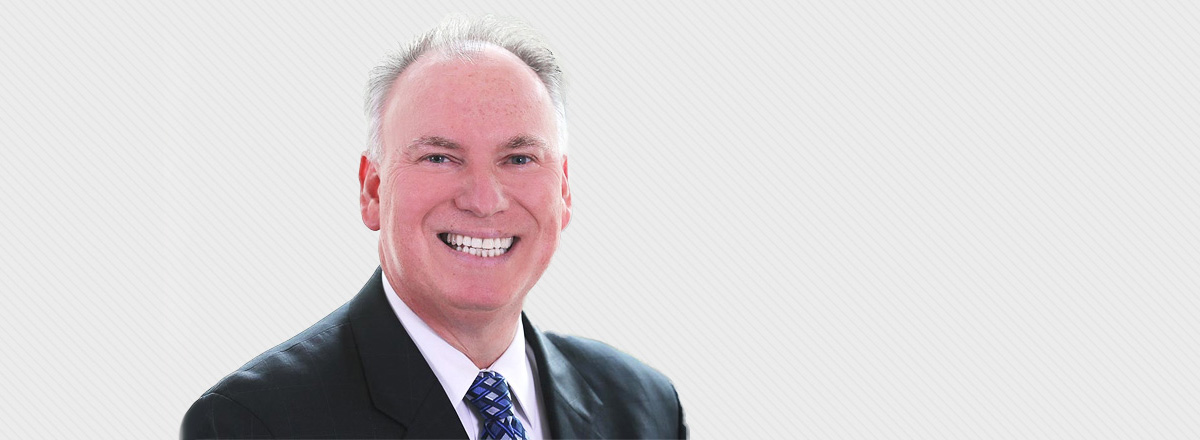
CEO Letter
Message from Jeff Jacobson, Chief Executive Officer
Dear Stakeholders,
The most admired companies understand their responsibilities are twofold – deliver a premium return on assets and make a positive impact on society. In 2017, Xerox embarked on a strategic transformation of our business, one that will ultimately position us for sustained success. As we began our transformation, we realized that at our core, our values are the same set of values that our founder Joe Wilson established for Xerox decades ago. The way we see it, we have a responsibility that goes beyond our primary, economic role to helping the people living in our communities to grow and thrive.
Here’s what Joe said in 1964:- We succeed through satisfied customers.
- We value our employees.
- We deliver quality and excellence in all we do.
- We require premium return on assets.
- We use technology to develop market leadership.
- We behave responsibly as a corporate citizen.
Not only did Joe Wilson create an iconic and innovative company, one that is changing the way the world communicates, connects and works, but also for establishing our ethos and a sense of responsibility that resonates within each of us today.
I often challenge our people to think about how Xerox can be a positive force for good. I’m amazed every day to hear the stories of giving back, the stories of our customers’ successes thanks to the hard work of Xerox people. Xerox citizenship efforts are closely aligned with our business strategy and are driven by a sense of responsibility to not only support the communities where our people and customers live and work, but create real change and deliver results.
There’s a phrase I learned when I first came to Xerox, “It’s in our DNA.” It’s just who we are. I’m learning that the path Joe Wilson paved all those years ago rings true today. There’s a culture here that drives Xerox people to be the best we can be. A few ways we do that:
- Environment. Every day at Xerox we strive to preserve and protect the environment and the wellbeing of employees, customers and communities by developing products and solutions to reduce energy use, cost and waste.
- Ethics. Do the right thing and conduct business in an ethical manner. Our Business Ethics and Compliance Program educates our people and provides the tools they need to work within the highest ethical standards.
- Diversity. Create a diverse and inclusive environment, where we value the differences in experience, thought and background because it is truly what makes Xerox a great place to work.
- Service. Give back to the communities where our people and customers live and work. Many Xerox people volunteer their time and talent supporting the people and programs that drive positive change and results in each of our home towns. We have a specific focus on science, technology, engineering and math education hoping to inspire the next generation of engineers, scientists and inventors of the world.
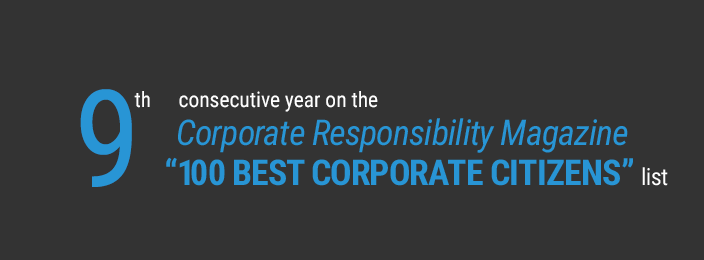

Company Profile
Xerox* is innovating the way the world communicates, connects and works. We use our expertise to help our customers improve productivity and increase satisfaction. Our employees understand what’s at the heart of work – and all of the forms it can take. They embrace the increasingly complex world of paper and digital. Office and mobile. Personal and social. Every day across the globe – in 160 countries – our technology, software and people successfully navigate these intersections. We automate, personalize, package, analyze and secure information to keep our customers moving at an accelerated pace. For more information visit www.xerox.com.
For Us, Global Is Local

*Company Separation
On December 31, 2016, Xerox Corporation completed the separation of its Business Process Outsourcing (BPO) business from its Document Technology and Document Outsourcing (DT/DO) business (the “Separation”). The Separation was accomplished by moving the BPO business into a new legal entity, Conduent Incorporated (“Conduent”), and then distributing one hundred percent (100%) of the outstanding common stock of Conduent to Xerox Corporation stockholders (the “Distribution”). Conduent now is an independent public company listed and traded on the New York Stock Exchange (“NYSE”) under the symbol “CNDT.” Learn more at www.xerox.com.

Segment Information
During 2016 our primary reportable segments were Services (Business Process Outsourcing) and Document Technology.
2016 Revenue by Segment ($ Millions)*

* The Business Process Outsourcing (Services) business is not reported in our segment financial information as it is now classified as a discontinued operation. Accordingly, the Services reportable segment reflects only the financial information for our legacy Document Outsourcing services business and certain other services businesses that were transferred from the BPO business to Xerox prior to the separation.
2016 Revenue by Geography ($ Millions)
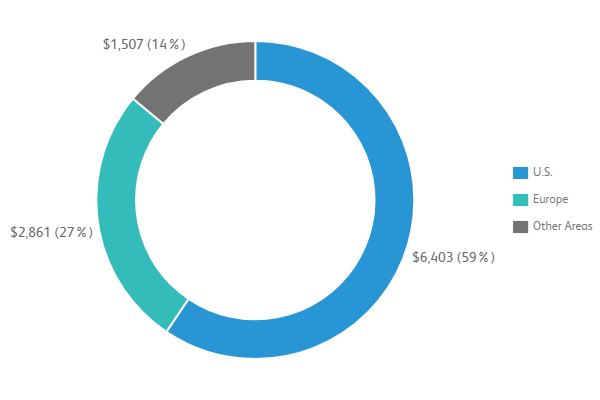
2016 Net Income from Continuing Operations: $616 million
Employees: Approximately 37,600 employees worldwide (as of December 31, 2016)
Doing Business in: 160 countries
Founded: In 1906 as The Haloid Company; named Haloid Xerox in 1958; named Xerox Corporation in 1961
NYSE: XRX
Headquarters: Norwalk, Connecticut, U.S.A.
800.ASK.XEROX (800.275.9376)
www.xerox.com
Worldwide Locations: http://www.xerox.com/perl-bin/world_contact.pl
Detailed financial information is presented in our quarterly and annual reports available at www.xerox.com/annualreports.
2017: Our Business
Xerox is a leading global provider of digital print technology and related solutions. Our primary offerings span three main areas: Managed Document Services (which largely represents the Document Outsourcing business that was reported in our Services segment before the separation), Workplace Solutions and Graphic Communications. Our Managed Document Services offerings help customers, ranging from small businesses to global enterprises, optimize their printing and related document workflow and business processes. Xerox led the establishment of this expanding market and continues as the industry leader. Our Workplace Solutions and Graphic Communications products and solutions support the work processes of our customers by providing them with an efficient, cost effective printing and communications infrastructure.
Segment Information
During 2016 our primary reportable segments were Services and Document Technology. The Business Process Outsourcing (BPO) business is not reported in our segment financial information as it is now classified as a discontinued operation. Accordingly, the Services reportable segment reflects only the financial information for our legacy Document Outsourcing services business and certain other services businesses that were transferred from the BPO business to Xerox prior to the separation.
Our Offerings
Managed Document Services includes a continuum of solutions and services spanning from managing print to automating processes to managing content. This area includes the Document Outsourcing business, as well as a set of communication and marketing solutions offers that were previously part of BPO, both of which were reported in our Services segment before the separation. Our primary offerings within Managed Document Services are Managed Print Services (MPS), including Workflow Automation Services, and Communication and Marketing Solutions (CMS).
- In our MPS business, we help companies assess and optimize their print infrastructure, secure and integrate their environment and automate and simplify their business processes. We provide the most comprehensive portfolio of MPS services in the industry and are recognized as an industry leader by major analyst firms including Gartner, IDC, Quocirca, InfoTrends and Forrester. As the market leader in MPS, we help clients reduce costs, increase productivity and meet their environmental sustainability goals while supporting their mobile and security needs.
-
- Our MPS offering targets clients ranging from large, global enterprises, to governmental entities and to small and medium-sized businesses, including those served via our channel partners.
- Our Next Generation Xerox Partner Print Services is a comprehensive suite of services that allows channel partners to support their SMB customers with some of the same best-in-class tools, processes, and workflow solutions developed by Xerox for large enterprises.
- Our Xerox Workflow Automation Services help our customers assess, optimize and automate their workflow in a secure and integrated IT environment. By eliminating ineffective processes, we bring our clients operational excellence in routine workflows as well as industry-specific processes.
- In our CMS business, we help large enterprise and global clients drive effective multi-channel customer communications across different digital and physical touch points. CMS offers a full range of managed services that deliver relevant and timely communications focused on customer acquisition, onboarding or retention. Our portfolio includes Document Publishing Services and Transactional Print Services, which continue to serve our existing and well established print and publishing clients. It also includes an expanded suite of service offerings focused on our new on-line digital services including Collateral Management Services, Demand Generation Services, Inbound and Outbound Digital Services, Product Information Management Services and multi-channel Communication Services.
Workplace Solutions are made up of two strategic product groups, Entry and Mid-Range, which share common technology, manufacturing and product platforms. Workplace Solutions revenues include the sale of products and supplies, as well as the associated technical service and financing of those products.
- Entry comprises desktop monochrome and color printers and multifunction printers (MFPs) ranging from small personal devices to workgroup printers and multifunction printers that serve the needs of office workgroups. Entry products are sold to customers in all segments from SMB to enterprise, principally through a global network of reseller partners and service providers, as well as through our direct sales force.
- Mid-Range comprises products for enterprises of all sizes. These products are sold through dedicated partners, our direct sales force, multi-branded channel partners and resellers worldwide. We are a leader in this area of the market and offer a wide range of multifunction printers, copiers, digital printing presses and light production devices, and solutions that deliver flexibility and advanced features.
Graphic Communications Solutions are designed for customers in the graphic communications, in-plant and production print environments with high-volume printing requirements. These solutions enable full-color, on-demand printing of a wide range of applications, including variable data for personalized content and one-to-one marketing. Graphic Communications Solutions revenues includes the sale of products, software and supplies, as well as the associated technical service and financing of those products.
- Our cut-sheet presses provide graphic communications and commercial printers with high speed, high-volume printing. They are ideal for publishing, transaction printing, print on demand and one-to-one marketing, offering the best in high speed, productivity and resolution and color. We are the worldwide leader in the cut-sheet color and monochrome production industry.
- Our inkjet presses offer a broad range of roll fed, continuous feed printing technologies, including waterless inkjet and aqueous inkjet for vivid color, and toner-based flash fusing for black and white. Our portfolio spans a variety of print speeds, image quality, feeding, finishing and media options. We continue to develop and integrate our production inkjet business to bring the high-end capabilities of toner-based presses such as speed and inline color correction to the more price sensitive market of inkjet.
- Our FreeFlow portfolio of software offerings brings intelligent automation and integration to the processing of print jobs, from file preparation to final production, for a touchless workflow. It helps customers of all sizes address a wide range of business opportunities including automation, personalization and even electronic publishing.
Innovate to Differentiate Our Offerings
Differentiating our offerings is key to our strategy. Together with Fuji Xerox, our joint venture, we invested approximately $1 billion in research, development and engineering in 2016. A critical role of our research is to envision the future and identify new competencies for it. We direct our research and development (R&D) investments to areas such as artificial intelligence, computer vision, machine learning, ethnography, inkjet and digital printing and digital manufacturing, as well as improving quality and reducing the environmental impact of digital printing. We are investing in new and novel applications of printing technology that could offer attractive opportunities in adjacent markets. We expect these activities will deliver incremental value for our customers and drive profitable revenue growth for our business.
Xerox Around the World
We have a broad and diverse base of customers by both geography and industry, ranging from small and medium-sized businesses (SMBs) to graphic communications companies, governmental entities, educational institutions and Fortune 1000 corporations. We go to market with a services-led approach and sell our products and services directly to customers through our world-wide sales force and through a network of independent agents, dealers, value-added resellers, systems integrators and the Web. In addition, our wholly-owned subsidiary, Global Imaging Systems (GIS), an office technology dealer comprised of regional core companies in the U.S., sells document management and network integration systems and services. We continued to expand our distribution to small and medium-size businesses in 2016 through GIS's acquisition of two equipment and document services dealer companies.

Our Stakeholders
Together with our customers, partners and communities, we help solve some of society’s toughest challenges. The following stakeholder engagements are a few of the ways we deliver on our commitment.
Focus — Our World: Regulators, Public Policymakers and Influencers
How We Engage- We work with governments, others in our industry and the broader business community to advocate for public policies that support our business goals and expanded economic opportunity for all people globally. We do this both directly through the Office of Global Government Affairs, which represents Xerox to federal, state and local governments throughout the U.S. and foreign governments around the world, and indirectly through various coalitions and trade associations.
- As a participant in the Coalition Against Counterfeiting and Piracy, we play an active role in combating theft of intellectual property by counterfeiters who manufacture knock-off products.
- We are particularly passionate about programs that further American students’ access to science, technology, engineering and math (STEM) curricula.
- Our senior managers play a leadership role in various organizations, such as the Business Roundtable and U.S. Chamber of Commerce. These organizations develop and promote public policies that are considered important to our public policy interests and operations.
Focus — Our Communities
How We Engage- Employees contributed their time and talents in hundreds of community-related projects worldwide.
- During the holiday season, approximately 450 Xerox employees in Monroe County, New York, collected, organized and delivered more than 61,626 pounds of food and provisions to 401 families/2497 people as part of the 36th Annual Operation Food Bank Program.
- Xerox researchers and scientists participate in the Xerox Science Consultant Program, which sends our people into elementary schools to teach science to inquiring young minds and to ignite interest in science as a career.
- Xerox Canada mobilized their WeCAN employee giving campaign raising more than $500,000 to feed those in need and support programs giving kids a healthy start.
Focus — Our People
How We Engage
- Culture survey
- Ethics hotline
- Open-door policy
- Global webcasts
- Town hall meetings
- Employee roundtables
- Internal social networks and knowledge sharing, including our intranet
- Enterprise-wide learning and career development tools
- Leader-led performance enablement processes, communications, planning and tools
- Leadership and management development resources
- In 2016, Jeff Jacobson conducted two country visits, four employee roundtables, four employee town halls and three employee WebChats.
- Global Talent@Xerox provides employees with tools to manage their performance and development. Its sister application, Global Careers@Xerox, provides visibility to our internal talent pool about current job openings.
- Global access to learning and career development: Annually, approximately 1 million launches of learning resources by our employees and authorized partners.
- Xerox employees and authorized partners have global access to a collection of thousands of learning resources, including videos, online classes and digitized books.
- XstreamVideo, our video-sharing platform, contains more than 10,000 videos created by Xerox employees, which increases workforce engagement, enables our people to identify and promote innovative solutions and accelerates adoption of successful business strategies.
- Learning with curated resources target specific employee needs, aligned to our workforce development strategy.
- Yammer, a private microblogging network, enables our employees to connect and collaborate with their colleagues in open or private groups. Since its launch in 2010, nearly 12,600 employees have joined the network.
- Leading@Xerox enables the targeted development of leaders and managers at all levels through curated collections of internal and external learning resources, including videos, courses, online books, and audio books.
Focus — Our Customers
How We Engage- Customer relationship surveys
- Transactional surveys
- Tracking customer satisfaction
- Social media
- Xerox Customer Community and Forum
- Our own blogs and all major social media platforms
- Xerox Corporate Focus Executive Program
- Customer Care Officer of the Day
- Customer personalized portal offering
- Customer support offers a social engagement enhancing the online support experience. The Customer Support forum provides a peer-to-peer environment for customers and other industry professionals to post and respond to discussion threads about Xerox equipment and software. With thousands of registered members and more than half a million message views per month, customers have the opportunity to resolve printing issues and participate in conversations about Xerox products in a 24/7 online community.
- The ‘At your Service Blog’ shares bi-weekly articles on current and relevant information on product features and usability tips and tricks to enhance the value add of our devices.
- ‘@XeroxSupport’ on Twitter is another social channel that helps by sharing tips and tricks on a daily basis. Engage in the social community and receive notifications of information in a timely manner.
- MySupport portal is a customizable secure portal that displays the customer’s fleet of products. This allows for one-click access to drivers, documentation and our award-winning support knowledge base as well as meter information and supply usage information for Xerox networked devices. They can also sign up to receive notifications of new drivers, security alerts, software updates and support bulletins. Placing a service call online couldn’t be easier with the autofill form. Checking on the status of the request is also just a click away.
- Customer Satisfaction surveys help us to identify and meet their needs and expectations for a flawless web experience. From updates to our product knowledge, to newly designed support pages, we appreciate the feedback and try our best to respond and implement changes in a timely manner.
- The Xerox Support YouTube channel is newly launched and offers helpful ‘How To’ videos on several of our products and software offerings.
Focus — Our Suppliers
How We Engage- Routine business reviews with key suppliers
- Assess supplier performance against the Electronic Industry Citizenship Coalition (EICC) code of conduct
- Annual communication of Xerox supplier code of conduct to supplier base
- Xerox purchasing staff located in regions where suppliers are located
- Inclusion of small and diverse businesses through our Supplier Diversity Program
- Achieved the Chartered Institute of Procurement and Supply Platinum Certification globally. Xerox holds executive sponsored reviews with key suppliers quarterly or semi-annually.
- Since 2010, Xerox has conducted over 300 compliance reviews and audits with Xerox Suppliers to ensure compliance with the EICC Code of Conduct.
- A letter is sent annually to all active suppliers reaffirming our commitment and supplier expectations regarding the EICC Code of Conduct.
- Xerox Global Procurement has approximately 70 purchasing employees located in Asia, 80 employees in Western Europe and nearly 200 located in North America.
- Xerox is a regional corporate member of the NY/NJ Minority Supplier Development Council and a national corporate member of the Women’s Business Enterprise National Council. Xerox Technology spent over $400 million with U.S. Tier 1 diverse and small businesses in 2016.
Focus — Our Shareholders
How We Engage- Annual meeting of shareholders
- Quarterly teleconferences
- One-on-one investor briefings
- Annual investor conference
- Small group meetings
- Equity brokerage conferences
- More than 50 institutional investors, analysts and investment bankers participated in the company’s 2016 Investor Conference in New York City and over 200 watched via live webcast.
- Xerox executives spoke with more than 300 investors/analysts through meetings and phone calls.
- Investors and analysts met with Xerox leaders at the drupa trade show in Germany.
- Xerox hosted small group meetings with current and potential investors in major markets, including Boston, Las Vegas, New York, Philadelphia and San Francisco.
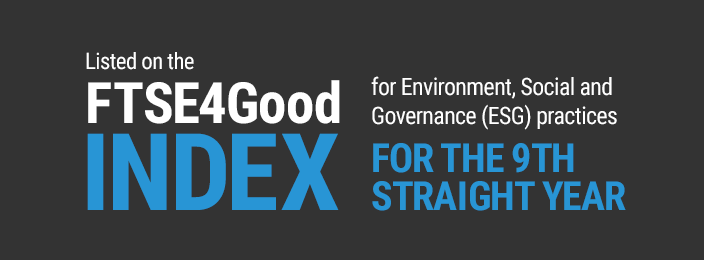

How We Report
This report describes Xerox’s global principles, policies and programs through August 2017, unless otherwise noted. It provides in-depth information for broad areas of corporate social responsibility, including governance and ethics; customer privacy and satisfaction, employee diversity and development; environmental performance of our products and operations; philanthropy and volunteerism; and much more.
Annually, we prepare a Citizenship Report to share our goals, performance and new initiatives. We also include changes to our business and emerging issues. Throughout the year, we share this information on Xerox.com and through social media (Xerox Facebook and Twitter accounts), external speaking opportunities with trade associations, industry consortiums and executive customer engagements.

This report was prepared in accordance with the Global Reporting Initiative (GRI) G4 Sustainability Reporting Guidelines. The extent to which we report on a particular CSR topic is determined by a materiality assessment and where the topic falls on the materiality matrix. Topics below the materiality threshold are not covered in as much detail, but remain important to our CSR and business strategies.
Information about the issues covered by our materiality matrix, including their definitions, corresponding GRI G4 Aspects, and the boundary of each Aspect, can be found in the GRI index and throughout this report. A table linking the content of this report to the GRI G4 Standard Disclosures can be found here.
Much of the information in this report reflects the activities of Xerox in the countries where we do business. Some of our systems for collecting and reporting reliable social and environmental performance data, however, do not always cover all of our operations. Where appropriate, we identify operations excluded from specific disclosures. Environmental data in this report that is normalized to our financial performance utilizes company revenues as reported using Generally Accepted Accounting Principles (GAAP). Third party assurance was received for the energy and GHG emission data in this report.
Fuji Xerox publishes its own citizenship report. Information about GRI is available at www.globalreporting.org.

Materiality
Annually, we assess the Corporate Social Responsibility (CSR) topics that are of importance to our stakeholders and those where we can have the greatest economic, social and environmental impacts at local, regional or global levels. We are guided in this assessment by GRI standards. We examined changing external factors, including regulations and standards, social challenges people face around the world, our evolving business model and the environmental impact of our products, services, processes and operations. Our assessment included an array of fact-finding forums, including interviews and workshops with internal stakeholders and Xerox leaders. We reflected on discussions with external stakeholders, as well as feedback from our employees and concluded:
- Managing operations responsibly across our value chain — from decreasing environmental impact and protecting customer privacy to promoting diversity and ensuring ethical behavior — remains a priority.
- Product, service and operations-related opportunities, such as improving energy efficiency and expanding access to technology, represent the leading areas where we can create value for society and for our business. Enhancing health, safety and labor conditions in our global value chain is among the most important ways we can drive sustainable development.
The following schematic illustrates the results of our materiality assessment:
2017 Corporate Materiality Matrix
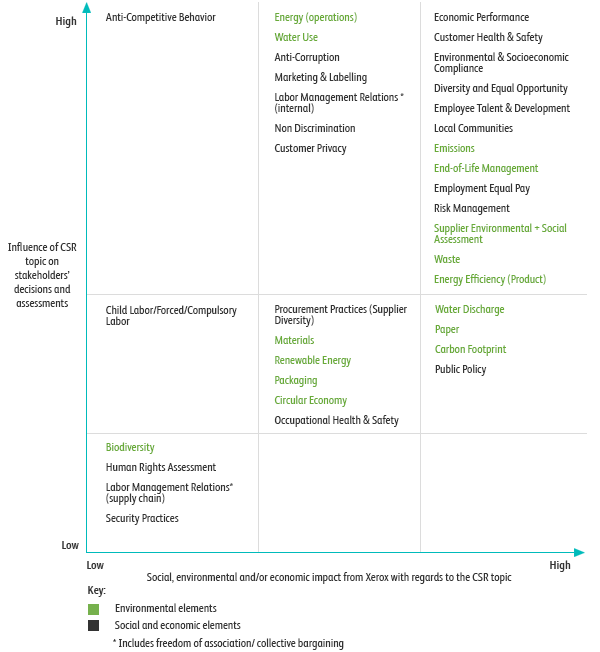

Global Reporting Initiative G4 Index
Xerox reports in accordance with GRI G4 Sustainability Guidelines for core reporting. Information about GRI is available at www.globalreporting.org.
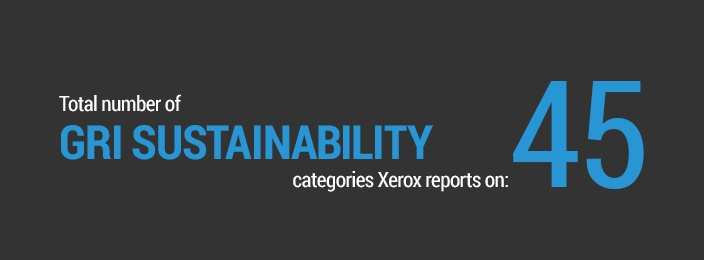
| Standard Disclosure | Description | Location | |
|---|---|---|---|
| General Standard Disclosures | |||
| Strategy and Analysis | |||
| G4-1 | Statement from senior decision-maker of organization | CEO Letter | |
| Organizational Profile | |||
| G4-3 | Name of the organization | CEO Letter | |
| G4-4 | Primary activities, brands, products, and services | Company Profile | |
| G4-5 | Location of headquarters | Company Profile | |
| G4-6 | Location of operations | Company Profile | |
| G4-7 | Ownership and legal form | Xerox is a corporation organized and incorporated under the laws of the State of New York. Xerox stock is publicly traded on the New York Stock Exchange (XRX). | |
| G4-8 | Markets served | Company Profile, 2016 Annual Report | |
| G4-9 | Scale of the organization | Company Profile | |
| G4-10 | Information on employees and other workers | Global Workforce | |
| G4-11 | Collective bargaining agreements | Employee Rights | |
| G4-12 | Supply chain | Supply Chain Responsibility | |
| G4-13 | Significant changes to the organization and its supply chain | 2016 Annual Report, see Form 10-K | |
| G4-14 | Precautionary Principle or approach | Risk Management, Sustainable Services and Products | |
| G4-15 | External initiatives | Corporate Social Responsibility Governance | |
| G4-16 | Membership of associations | Corporate Social Responsibility Governance | |
| Identified Material Aspects and Boundaries | |||
| G4-17 | Entities included in the consolidated financial statements | 2016 Annual Report, Consolidated Financial Statements | |
| G4-18 | Defining report content and topic boundaries | How We Report, Our Stakeholders, Materiality | |
| G4-19 | List of material topics | Materiality | |
| G4-20 | Explanation of the material topic and its boundary | Materiality, throughout this report | |
| G4-21 | Explanation of the material topic and its boundary | Throughout this report | |
| G4-22 | Restatements of information | Preserving the Planet/GHG emissions and energy | |
| G4-23 | Changes in reporting | Company Profile | |
| Stakeholder Engagement | |||
| G4-24 | List of stakeholder groups | Our Stakeholders, Supply Chain Responsibility, Ethics and Integrity, Investor Relations, Serving Customers, Preserving the Planet, Employee Engagement, The Xerox Foundation | |
| G4-25 | Identifying and selecting stakeholders | Our Stakeholders | |
| G4-26 | Approach to stakeholder engagement | Our Stakeholders, Supply Chain Responsibility, Ethics and Integrity, Investor Relations, Serving Customers, Preserving the Planet, Employee Engagement, The Xerox Foundation | |
| G4-27 | Key topics and concerns raised | Materiality, Our Stakeholders, Investor Relations, Serving Customers, Preserving the Planet, Employee Engagement, The Xerox Foundation | |
| Report Profile | |||
| G4-28 | Reporting period | How We Report | |
| G4-29 | Date of most recent previous report | How We Report | |
| G4-30 | Reporting cycle | How We Report | |
| G4-31 | Contact point for questions regarding report | Citizenship Contact | |
| G4-32 | Claims of reporting in accordance with the GRI Standards, GRI content index, External assurance | How We Report | |
| G4-33 | External assurance | How We Report | |
| Governance | |||
| G4-34 | Governance Structure | Governance | |
| G4-35 | Delegating authority | Governance | |
| G4-36 | Executive-level responsibility for economic, environmental, and social topics | Governance | |
| G4-37 | Consulting stakeholders on economic, environmental, and social topics | Governance, Employee Engagement | |
| G4-38 | Composition of the highest governance body and its committees | Governance | |
| G4-39 | Chair of the highest governance body | Governance | |
| G4-40 | Nominating and selecting the highest governance body | Governance | |
| G4-41 | Conflicts of interest | Governance | |
| G4-45 | Role of highest governance body in identifying and managing environmental, economic and social impacts, risks and opportunities | Governance | |
| G4-46 | Effectiveness of risk management processes | Governance, Risk Management | |
| G4-47 | Review of economic, environmental, and social topics | Governance, Risk Management | |
| G4-48 | Highest governance body’s role in sustainability reporting | Governance | |
| G4-49 | Communicating critical concerns | Governance, Employee Engagement | |
| Ethics and Integrity | |||
| G4-56 | Values, principles, standards, and norms of behavior | Company Profile, Ethics and Integrity, Human Rights, Preserving the Planet | |
| G4-57 | Mechanisms for advice and concerns about ethics | Ethics and Integrity | |
| G4-58 | Mechanisms for advice and concerns about ethics | Ethics and Integrity | |
| Economic Disclosures | |||
| DMA | Explanation of the material topic and its boundary, the management approach and its components, evaluation of the management approach | Company Profile, CEO Letter, 2016 Annual Report | |
| Economic Performance | |||
| EC-1 | Direct economic value generated and distributed | Company Profile, The Xerox Foundation, 2016 Annual Report | |
| EC-2 | Financial implications and other risks and opportunities due to climate change | Preserving the Planet, Carbon Disclosure Project | |
| EC-3 | Defined benefit plan obligations and other retirement plans | 2016 Annual Report | |
| Indirect Economic Impacts | |||
| EC-8 | Significant indirect economic impacts | The Xerox Foundation | |
| Procurement Practices | |||
| G4-9 | Proportion of spending on local suppliers | Supply Chain Responsibility | |
| Social Disclosures Related to Labor Practices and Decent Work | |||
| DMA | Explanation of the material topic and its boundary, the management approach and its components, evaluation of the management approach | Evolving the Workplace | |
| Aspect: Employment | |||
| G4- LA1 | New employee hires and employee turnover | Global Workforce | |
| G4- LA2 | Benefits provided to full-time employees that are not provided to temporary or part-time employees | Compensation and Benefits | |
| G4-LA3 | Parental leave | Compensation and Benefits | |
| Aspect: Labor/Management Relations | |||
| G4-LA4 | Minimum notice periods regarding operational changes | Employee Rights | |
| Aspect: Occupational Health and Safety | |||
| G4-LA6 | Types of injury and rates of injury, occupational diseases, lost days, and absenteeism, and number of work-related fatalities | Health, Wellness and Safety, Our Progress | |
| Aspect: Training and Education | |||
| G4-LA9 | Average hours of training per year per employee | Talent Management | |
| G4-LA10 | Programs for upgrading employee skills and transition assistance programs | Talent Management | |
| G4- LA11 | Percentage of employees receiving regular performance and career development reviews | Talent Management | |
| Aspect: Diversity and Equal Opportunity | |||
| G4- LA12 | Diversity of governance bodies and employees | Diversity and Inclusion | |
| Social Disclosures Related to Human Rights | |||
| DMA | Explanation of the material topic and its boundary, the management approach and its components, evaluation of the management approach | Human Rights, Ethics and Integrity, Supply Chain Responsibility | |
| Human Rights Assessment | |||
| G4-HR2 | Employee training on human rights policies or procedures | Ethics and Integrity | |
| Aspect: Non-discrimination | |||
| G4-HR3 | Incidents of discrimination and corrective actions taken | Ethics and Integrity | |
| Social Disclosures Related to Society | |||
| DMA | Explanation of the material topic and its boundary, the management approach and its components, evaluation of the management approach | Ethics and Integrity, Public Policy Engagement | |
| G4-SO1 | Operations with local community engagement, impact assessments, and development programs | Xerox Foundation | |
| Aspect: Anti-corruption | |||
| G4-SO3 | Operations assessed for risks related to corruption | Ethics and Integrity | |
| G4-SO4 | Communication and training about anti-corruption policies and procedures | Ethics and Integrity | |
| Aspect: Public Policy | |||
| G4-SO5 | Political contributions | Public Policy Engagement | |
| Aspect: Anti-competitive Behavior | |||
| G4-SO7 | Legal actions for anti-competitive behavior, anti-trust, and monopoly practices | 2016 Annual Report, see Form 10-K | |
| Aspect: Socioeconomic Compliance | |||
| G4-SO8 | Non-compliance with laws and regulations in the social and economic area | Goals and Progress | |
| Aspect: Supplier Social Assessment | |||
| G4-SO9 | New suppliers that were screened using social criteria | Supply Chain Responsibility | |
| Social Disclosures Related to Product Responsibility | |||
| DMA | Explanation of the material topic and its boundary, the management approach and its components, evaluation of the management approach | Serving Customers | |
| G4-PR1 | Assessment of the health and safety impacts of product and service categories | Safe Services and Products | |
| G4-PR2 | Incidents of non-compliance concerning the health and safety impacts of products and services | Goals and Progress | |
| Aspect: Marketing and Labelling | |||
| G4-PR3 | Requirements for product and service information and labelling | Safe Services and Products | |
| Environmental Disclosures | |||
| DMA | Explanation of the material topic and its boundary, the management approach and its components, evaluation of the management approach | Preserving the Planet | |
| Energy | |||
| G4-EN3 | Energy consumption within the organization | Goals and Progress, Responsible Operations | |
| G4-EN4 | Energy consumption outside of the organization | Sustainable Services and Products | |
| G4-EN6 | Reduction of energy consumption | Goals and Progress, Responsible Operations | |
| G4-EN7 | Reductions in energy requirements of products and services | Goals and Progress, Sustainable Services and Products | |
| Water | |||
| G4-EN8 | Water withdrawal by source | Goals and Progress, Responsible Operations | |
| Emissions | |||
| G4-EN15 | Direct (Scope 1) GHG emissions | Goals and Progress, Responsible Operations | |
| G4-EN16 | Energy indirect (Scope 2) GHG emissions | Goals and Progress, Responsible Operations | |
| G4-EN17 | Other indirect (Scope 3) GHG emissions | Goals and Progress, Responsible Operations | |
| G4-EN19 | Reduction of GHG emissions | Goals and Progress, Responsible Operations | |
| G4-EN20 | Emissions of ozone-depleting substances (ODS) | Responsible Operations | |
| G4-EN21 | Nitrogen oxides (NOX), sulfur oxides (SOX), and other significant air emissions | Goals and Progress, Responsible Operations | |
| Effluents and Waste | |||
| G4-EN22 | Water discharge by quality and destination | Goals and Progress | |
| G4-EN23 | Waste by type and disposal method | Goals and Progress, Responsible Operations | |
| G4-EN24 | Significant spills | Goals and Progress, Responsible Operations | |
| Materials | |||
| G4-EN28 | Reclaimed products and their packaging materials | Sustainable Services and Products | |
| Environmental Compliance | |||
| G4-EN29 | Non-compliance with environmental laws and regulations | Goals and Progress | |
| Supplier Environmental Assessment | |||
| G4-EN32 | New suppliers that were screened using environmental criteria | Supply Chain Responsibility | |

Citizenship Contact
If you have questions or comments about any of the topics covered in this report,
Xerox Corporation
www.xerox.com
201 Merritt 7
Norwalk, CT 06851–1056
United States
203.968.3000
Products and Services
www.xerox.com
800.ASK.XEROX (800.275.9376)
The Xerox Foundation
www.xerox.com/foundation
Michele Cahn, President
202.414.1288
michele.cahn@xerox.com
Global Diversity and Inclusion Programs and EEO-1 Reports
www.xerox.com/diversity
Beverly Stallings-Johnson
Global Diversity and Inclusion Leader
614.861.1974
beverly.stallings-johnson@xerox.com
Minority and Women Owned Business Suppliers
www.xerox.com/supplierdiversity
Ethics Helpline
North America: 866.XRX.0001
International numbers and online submission tool
www.xerox.com/ethics
Environment, Health, Safety and Sustainability
www.xerox.com/environment
Governance
www.xerox.com/governance
Students and Educators
View openings/internships and apply: www.xerox.com/careers
Request classroom donations: www.xerox.com/foundation
All other questions: StudentTeacherRequests@xerox.com
Xerox Innovation
www.xerox.com/innovation
Comment on this Report
citizenship@xerox.com

Goals and Progress
Through our people, innovation and partnerships, we create solutions that reduce environmental impacts and cost as well as improve productivity. We have conducted a materiality assessment and have identified the following environmental areas where we can make a significant positive impact for our business and our stakeholders:
- Reducing Energy Use and Protecting the Climate
We invest in technologies that reduce the carbon footprint of our operations and offer solutions to our customers that reduce energy use, cost and waste. - Preventing and Managing Waste
We strive to produce waste-free products and services for our customers and operate waste-free facilities across our real estate portfolio and within our customers’ workplaces. - Preserving Clean Air and Water
We work to eliminate the use of persistent, bioaccumulative and toxic materials throughout the supply chain. We look for ways to use water efficiently and to avoid the release of hazardous air emissions from our products and facilities worldwide. - Preserving the World’s Forests and Biodiversity
We provide products and services that reduce offices’ dependency on paper through print services tools, environmentally sound paper offerings, and digital capabilities.
Our 2020 Goals
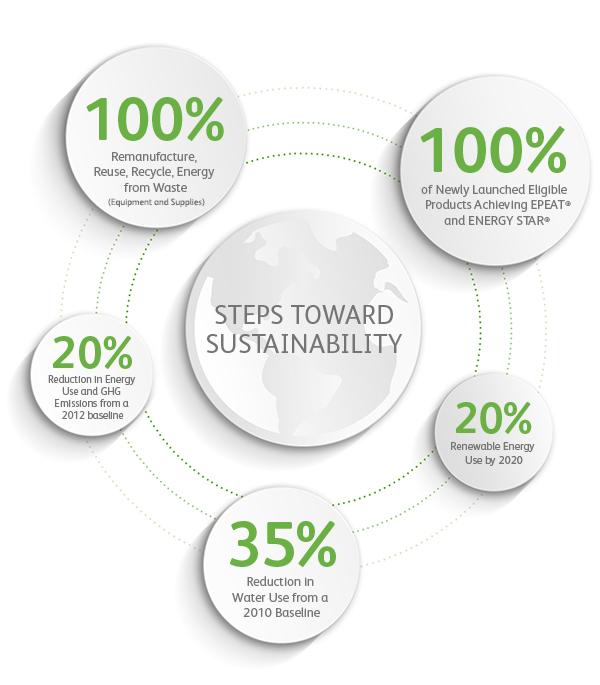
In 2016, we achieved two of our 2020 corporate goals by reducing energy use and greenhouse gas emissions by 20 percent from a 2012 baseline and ensuring 100 percent of newly launched eligible products achieved EPEAT® and ENERGY STAR® certification. Learn more about how we achieved these goals in the Responsible Operations and Sustainable Services and Products sections of this report.
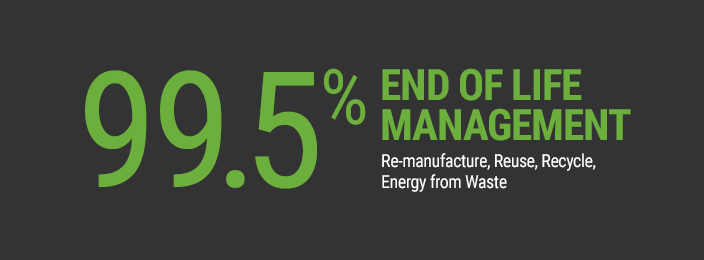
Performance Reporting
The following table summarizes our key environmental and safety performance indicators, including our goals and performance over the past five years. Additional detail is included in the corresponding sections of this report.
Xerox 2016 Environmental Sustainability and Safety Performance
* Indicates Goal Achievement in Current Reporting Year
| PRODUCTS | Goal | 2012 | 2013 | 2014 | 2015 | 2016 |
|---|---|---|---|---|---|---|
| Eco-labels | ||||||
| % newly launched eligible products achieving EPEAT® | 100% | 100%* | 100%* | 100%* | 100%* | |
| % of newly launched eligible products achieving ENERGY STAR® | 100% | 100%* | 100%* | 100%* | 100%* | 100%* |
| End-of-Life Management 1 | ||||||
| Equipment and Parts | ||||||
| % Remanufacture, Reuse, Recycle, Energy from Waste | 100% | 99.7% | 99.4% | 95.6% | 100.0%* | 99.8% |
| Volume Remanufacture, Reuse, Recycle, Energy from Waste | 38 | 34.0 | 34.6 | 43.1 | 36.9 | |
| Volume used equipment sold | 0.2 | 5.4 | 6.2 | 7.6 | 8.7 | |
| Volume Remanufacture / Reuse | 5 | 2.0 | 1.7 | 3.5 | 2.6 | |
| Volume Material Recycling | 32 | 24.6 | 25.2 | 27.3 | 23.5 | |
| Volume Energy from Waste | 1 | 2 | 1.5 | 4.7 | 2.1 | |
| Volume Landfill | 0.1 | 0.2 | 1.4 | <0.1 | 0.06 | |
| Volume Incineration | 0 | 0 | 0.2 | 0 | 0 | |
| Total Volume Waste - Equipment and Parts | 38 | 34.2 | 36.2 | 43.1 | 37.0 | |
| Supplies 2 | ||||||
| % Remanufacture, Reuse, Recycle, Energy from Waste | 100% | 95% | 97% | 97% | 98% | 98% |
| Volume Remanufacture, Reuse, Recycle, Energy from Waste | 4.0 | 3.6 | 3.7 | 4.3 | 4.7 | |
| Volume Remanufacture / Reuse | 3.7 | 3.28 | 3.14 | 3.3 | 4.2 | |
| Volume Recycle | 0.1 | 0.3 | 0.4 | 1 | 0.3 | |
| Volume Energy from Waste | 0.2 | 0.04 | 0.2 | <0.1 | 0.2 | |
| Volume Landfill | 0.2 | 0.1 | 0.1 | 0.1 | 0.1 | |
| Volume Incineration | 0 | 0 | 0 | 0 | 0 | |
| Total Volume Waste - Supplies | 4.2 | 3.7 | 3.8 | 4.4 | 4.8 | |
| OPERATIONS / SERVICES | Goal | 2012 | 2013 | 2014 | 2015 | 2016 |
| ENERGY / GHGs 3 | Reduction from 2002 baseline | Reduction from 2012 baseline | ||||
| % Reduction Energy Use from Baseline (Scope 1 and 2) | 20% reduction by 2020 with a new baseline established in 2012 | 33% | 1% | 7% | 12% | 20%* |
| % Reduction GHG Emissions from Baseline (Scope 1 and 2) | 20% reduction by 2020 with a new baseline established in 2012 | 42% | 4% | 9% | 20%* | 28%* |
| Scope 1 (Direct) Emissions - (Facilities & Fleet) 4 | 135 | 127 | 119 | 111 | 102 | |
| Scope 2 (Indirect) Emissions - (Purchased Electricity) 5 | 191 | 186 | 179 | 150 | 131 | |
| Total Scope 1 and 2 Emissions | 326 | 313 | 298 | 261 | 233 | |
| Scope 2 Emissions - Services Data centers 6 | 90 | 80 | 83 | 34 | 2 | |
| % Renewable Energy 7 | 5.1% | 4.7% | 8.2% | 4.0% | 3% | |
| Scope 3 Emissions - Employee business air travel (MT CO2 eq per employee)8 | 0.16 | 0.16 | 0.17 | 0.15 | 0.12 | |
| WASTE | Goal | 2012 | 2013 | 2014 | 2015 | 2016 |
| Non-Hazardous Waste 9 | ||||||
| % Reduction Landfill / Incineration / Treatment 10 | Baseline of 6,000 metric tons est. in 2009 | 30% | 42% | 52% | 55% | 62% |
| % Reuse, Recycle, Energy from Waste | 100% | 93% | 91% | 93% | 94% | 94% |
| Volume Reuse, Recycle, Energy from Waste | 48 | 38 | 41 | 44 | 37 | |
| Volume Reuse | 0.2 | 4 | 3 | 2.4 | 3.3 | |
| Volume Recycle | 42 | 26 | 32 | 33 | 28.3 | |
| Volume Energy from Waste | 5 | 7.2 | 6.3 | 8.9 | 5.2 | |
| Volume Treatment | 2 | 1.7 | 1.3 | 0.9 | 0.9 | |
| Volume Landfill | 2 | 1.5 | 1.4 | 1.6 | 1.3 | |
| Volume Incineration | 0.2 | 0.3 | 0.2 | 0.2 | 0.1 | |
| Total Volume Non-Hazardous Waste | 51 | 41 | 44 | 47 | 39 | |
| Hazardous Waste 11 | ||||||
| % Reduction in Hazardous Waste from 2009 Baseline | Baseline of 2,600 metric tons est. in 2009 | 74% | 80% | 79% | 79% | 77% |
| % Recycled, Fuels Blending | 71% | 62% | 73% | 69% | 75% | |
| Volume Recycled, Fuels Blending | 0.5 | 0.3 | 0.4 | 0.4 | 0.5 | |
| Volume Recycled | 0.3 | 0.15 | 0.156 | 0.213 | 0.074 | |
| Volume Fuels Blending | 0.2 | 0.17 | 0.238 | 0.166 | 0.383 | |
| Volume Treatment | 0.1 | 0.12 | 0.103 | 0.128 | 0.089 | |
| Volume Landfill | 0.03 | 0.0024 | 0.00002 | 0.00001 | 0.003 | |
| Volume Incineration | 0.04 | 0.07 | 0.045 | 0.039 | 0.061 | |
| Total Volume Hazardous Waste | 0.7 | 0.51 | 0.54 | 0.55 | 0.61 | |
| AIR EMISSIONS 12 | 2012 | 2013 | 2014 | 2015 | 2016 | |
| Volume VOC (MT) | NA | 19 | 31 | 18 | 21 | |
| Volume Non VOC (MT) | NA | 4 | 5 | 4 | 4 | |
| Total Volume VOC / Non-VOC (Production) | NA | 23 | 36 | 22 | 25 | |
| NO x (non-production) (MT) 13 | 38 | 39 | 39 | 37 | 35 | |
| SO x (non-production) (MT) 13 | 0.3 | 0.3 | 0.3 | 0.3 | 0.3 | |
| TOXINS AND HAZARDOUS MATERIALS 14 | 2012 | 2013 | 2014 | 2015 | 2016 | |
| % Reduction Reportable Releases and Transfers from 2007 Baseline | 64% | 70% | 71% | 74% | 74% | |
| Volume Reportable Releases and Transfers (TRI and PRTR) (MT) | 172 | 144 | 137 | 123 | 123 | |
| % Reduction virgin MIBK from 2010 Baseline 15 | 29% | 35% | 42% | 36% | 43% | |
| Volume virgin MIBK (Lbs./part) 15 | 0.283 | 0.261 | 0.23 | 0.255 | 0.226 | |
| % Reduction of methylene chloride from 2010 Baseline 16 | 54% | 57% | 61% | 62% | 70% | |
| Volume Total amount of methylene chloride (Lbs) 16 | 480,500 | 445,200 | 403,842 | 397,000 | 306,627 | |
| Volume 1,3-butadiene air emissions (Lbs /batch) 17 | 6.7 | 6.6 | 7.5 | 7.2 | 7.1 | |
| WATER 18 | Reduction from 2009 Baseline | Reduction from 2010 Baseline | ||||
| Goal | 2012 | 2013 | 2014 | 2015 | 2016 | |
| % Reduction in Water Consumption from 2009 Baseline | 35% reduction by 2020. Baseline of 2,030 thousand metric tons est. in 2010. | 35% | 35% | 28% | 38%* | 43%* |
| Volume Water Consumption (ML) | 1,427 | 1,433 | 1,444 | 1,264 | 1,160 | |
| Volume Water Discharge to Sanitary Sewer (ML) | 1,580 | 1,605 | 1,535 | 1,492 | 1,543 | |
| WORKPLACE SAFETY 18 | Goal | 2012 | 2013 | 2014 | 2015 | 2016 |
| Total Recordable Incident (TRI) Rate | 0.9 TRI | 1.10 | 1.07 | 0.94 | 0.87 | 0.75 |
| Days Away from Work (DAFW) Rate | 0.49 DAFW | 0.61 | 0.54 | 0.5 | 0.47 | 0.43 |
| CORPORATE COMPLIANCE | Goal | 2012 | 2013 | 2014 | 2015 | 2016 |
| Reportable Spills / Environmental Releases | 0 | 8 | 5 | 2 | 4 | 10 |
| Safety non-compliance ($ fines / # non-monetary violations) | 0 | $300/4 | $5275/0 | $0/4 | $6800/0 | $0/0 |
| Environmental non-compliance ($ fines / # non-monetary violations) | 0 | $0 / 1 | $0 / 2 | $6150/2 | $120/4 | $0/2 |
ND = Not Determined; NA = Not Applicable.
1. Products End-of-Life Management: Returns processed through Xerox's worldwide asset recovery centers and 3rd party recyclers. 2012 data adjusted to include units sold as used through new resale program introduced 4th quarter 2012. In 2014, Xerox's operation in Itatiaia Brazil sent surplus parts to landfill as part of a one-time clean-up. This resulted in a decrease in the reuse / recycle rate of products and consumables returned to Xerox.
2. In 2012, the Supplies returns program changed the array of cartridges and bottles accepted. The weights of those containers also changed. The data was restated to reflect more accurate volumes. The 2013 supplies remanufacturing volumes were restated to reflect an error discovered in the total units returned.
3. The greenhouse gas inventory is based on the new Xerox energy goal which began in 2013 using 2012 as baseline and encompasses fleet and facilities for the Xerox Technology Business and Xerox Services. Note: the 2012 baseline has been restated. In accordance with the Greenhouse Gas Protocol, inventory adjustments are completed each year as a result of the opening and closing of facilities and the use of more appropriate emission factors to make data and performance trends between years more comparable. * Note: The new energy goal 2020 uses 2012 as baseline. Units of measure are 1000 MT CO2eq.
4. Direct emissions from natural gas and fuel used in fleet of Xerox Sales and Service personnel and natural gas consumed in facility boilers for facilities both leased and owned by Xerox. Emissions for facilities are based on actual data as reported on utility invoices, with estimates for remainder of facilities in the inventory using Commercial Building Energy Consumption (CBEC) energy use factors. Emissions from fleet are based on actual fuel receipts and vehicle efficiency rates.
5. Indirect emissions of greenhouse gases include emissions from the consumption of purchased electricity and steam for facilities leased and owned by Xerox. CBECs energy use factors were used to include estimated emissions for office and warehouse facilities where data is not readily available (U.S. and Canada). HFC emissions were estimated based on square feet.
6. Indirect emissions for worldwide Xerox Services Data Centers, located in the U.S. and Europe. Based on actual data as reported on utility invoices in the U.S. and the U.K. Estimates were used for the remaining Data Centers, based on the average energy consumption per square foot using Power Usage Effectiveness (PUE). In December 2014, we announced an agreement to sell our Information Technology Outsourcing (ITO) business to Atos and began reporting it as a Discontinued Operation. The sale was completed on June 30, 2015. The data centers are associated with the ITO business and the majority of them have been transferred to Atos upon closure of the sale of the ITO business.
7. Renewable energy and renewable energy credits. It does not include the renewable energy available by default in the power grid. This encompasses use of 100% energy in the Netherlands and RECs from wind from Wilsonville, Oregon. Total energy encompasses fleet and facilities for the Xerox Technology Business and Xerox Services.
8. Includes worldwide air travel emissions for total Xerox, as provided by Xerox's global travel services provider, based on aircraft, load, and miles. Assumes 143,000 global employees.
9. Non-hazardous Solid Waste: Process waste consists primarily of paper, wood pallets, waste toner, plastics and packaging waste such as corrugated cardboard; Equipment Manufacturing Waste includes scrap metal, waste batteries and lamps, miscellaneous trash, and end-of-life equipment and parts. Non-hazardous waste is either disposed of directly by Xerox, or a disposal method is designated and confirmed when shipped off-site.
10. % non-hazardous solid waste to landfill / incineration restated to include treatment volumes.
11. Hazardous waste volumes referenced in the report represent Xerox's technology business only. Hazardous waste is disposed of directly by Xerox, or a disposal method is designated and confirmed when shipped off-site.
12. The majority of air emissions originate from the production of imaging supplies such as toner, photoreceptor drums and belts, and fuser rolls. Actual material usage information was not available for the Wilsonville site in 2016, therefore maximum (worst-case) air emission estimates were used, as reported to the Oregon DEQ in a one-time Air Emission Survey for 2016.
13. Nox and Sox emissions are calculated using emission factors applicable to small boilers from EPA's AP-42, Vol.1, CH1.4: Natural Gas Combustion (http://www.epa.gov/ttnchie1/ap42/ch01/final/c01s04.pdf).
14. 2015 Toxics released restated from 118 tons to 123 tons after error in calculation was discovered.
15. Reduction accomplished by reclaiming and distilling waste MIBK from fuser roll manufacturing. Normalized to number of fuser roles produced.
16. Total amount of methylene chloride used to produce Xerox photoreceptor components.
17. From toner resin manufacturing, normalized to volume of resin produced. Baseline reset to 7.14 lbs./batch in 2015 due to changes in inventory management practices.
18. Workplace Safety performance reporting is for the Xerox Technology Business (with the exception of Global Imaging Systems) worldwide.

Responsible Operations
Reducing our Company-wide Environmental Footprint
With goals to reduce environmental impacts across our value chain, we invest in innovative solutions that can conserve natural resources and lower the energy intensity of our operations. A few examples of our most recent successes include:
- Water recycling project, which uses Reverse Osmosis reject water for secondary use. This project was implemented in mid-2016 and has recycled more than 265,000 gallons (1.003 million liters) of reject water, which would have otherwise been discharged to the sewer.
- Energy-efficient technologies such as Emulsion Aggregation (EA) toner, which is estimated to generate 28 percent fewer greenhouse gas (GHG) emissions in the manufacturing process than conventional toner.
- Energy management and equipment upgrades such as utilizing outdoor heat exchange systems to cool process water in winter months (rather than powered industrial chillers) and replacing outdated heating and cooling systems with energy-efficient and digitally-controlled models.
- Renewable energy used to power our Netherlands facilities and renewable energy certificates to offset energy use at our Wilsonville, Oregon facility.
- Efficiency-promoting initiatives including purchasing energy-efficient lighting and vehicles, reducing packaging sizes, mileage tracking and route improvements.
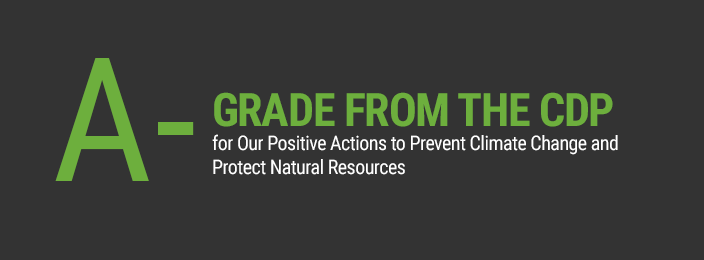
Data in this section associated with air emissions, releases, water use, hazardous and non-hazardous waste represents total quantities for our manufacturing, research, development, warehouses and equipment recovery/recycle operations. Data in this section associated with energy and greenhouse gas (GHG) emissions represent total quantities for our manufacturing, research, development and equipment recovery/recycle operations, offices and data centers. Normalized values for 2014 forward have been calculated using Xerox revenue from continuing operations. Unless otherwise noted, all numbers represent worldwide totals (excluding Global Imaging Systems (GIS) locations) and are reported in generally accepted international units.
The data presented is based on actual measurements to the extent possible. Where direct measurements are not available, we employ engineering calculations or estimates. We continue to strive to increase the accuracy of the data we report.
All of our major manufacturing and distribution operations employ an environmental management system that conforms to ISO 14001. The system:
- Establishes a framework to ensure compliance with regulations and Xerox standards
- Identifies environmental impacts and sets objectives and performance targets
- Pursues continual improvement in conserving natural resources, eliminating the use of toxic and hazardous materials, preventing pollution, and recovering, reusing and recycling materials
- Ensures integration between day-to-day business activities and environmental planning and program management
- Encourages innovative solutions, creative partnerships and employee involvement
Our major manufacturing operations have been certified to ISO 14001 since 1997. Our major worldwide technology equipment distribution centers achieved certification in 2010. Quarterly status meetings and use of a newly deployed scorecard provide visibility, best practice sharing and innovation across our operations.
Energy Goal 2020
In 2003, we made a public commitment to reduce GHG emissions — our carbon footprint — by joining the U.S. Environmental Protection Agency (EPA) Climate Leaders program and launching our own internal Energy Challenge 2012.
This 10-year initiative set a goal to reduce GHG emissions across all company operations by 10 percent by 2012. We met this target six years ahead of schedule, so we set a new target of 25 percent reduction by 2012 (from a 2002 baseline). At the conclusion of the program, we successfully cut emissions by 42 percent — that’s 210,000 tons of carbon dioxide equivalents (CO2e) — and reduced energy consumption by 31 percent.
Our new corporate-wide goal is to reduce energy consumption and GHG emissions by 20 percent by 2020 (from a 2012 baseline). In 2016, we met our new goal by reducing energy consumption by 20 percent and cut GHG emissions by 28 percent — that’s 92,000 tons of CO2e.*
*Excludes data centers numbers. Energy Challenge 2012 included fleet and facilities for the Technology Business (and Services where co-located). Energy Goal 2020 encompasses all parts of our business.
Energy Consumption
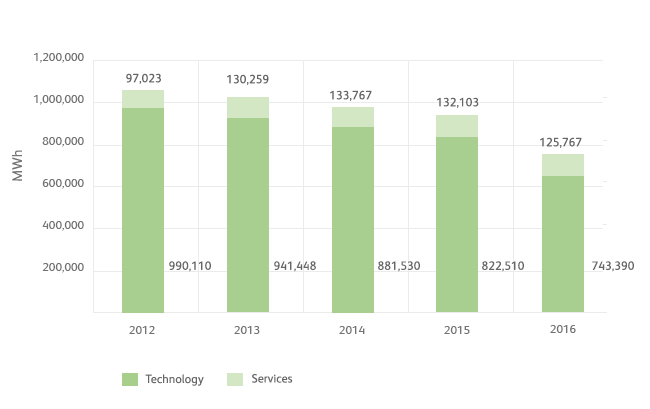
Energy and GHG emissions totals are associated with fuel consumption by company-owned fleet and natural gas/electricity consumption in facilities. Vendor invoices from utility and fuel providers are the preferred source of data; when unavailable, estimates have been used.
In accordance with the Greenhouse Gas Protocol and to make annual data comparable, we adjust the energy and emissions data each year as a result of the opening and closing of facilities and more appropriate emission factors that are available.
Greenhouse Gas Inventory
In accordance with the international guidelines of the Greenhouse Gas Protocol developed by the World Resources Institute and the World Business Council for Sustainable Development, we track the six major GHGs: carbon dioxide (CO2), methane (CH4), nitrous oxide (N2O), hydrofluorocarbons (HFCs), perfluorocarbons (PFCs) and sulfur hexafluoride (SF6). As noted, we express our carbon footprint in terms of carbon dioxide equivalents (CO2e).
Energy sources account for more than 99 percent of our GHG emissions. Our GHG inventory includes direct emissions from the combustion of fossil fuels, primarily natural gas, and indirect emissions from purchased electricity and steam at our manufacturing sites, offices and warehouses. The inventory also includes the combustion of gasoline and diesel fuels in our service and sales vehicle fleet.
As a result of the opening and closing of facilities and changes to the fleet inventory, base-line adjustments are made each year, which are reflected in the Energy Consumption and GHG Emission charts. In 2016, we expanded our GHG tracking of indirect, or Scope 3, emissions to include end-of-life treatment of sold products. We also continue to track Scope 3 emissions from employee business travel, product transport, employee commute and waste generated in operations.
In 2016, Xerox GHG emissions totaled 233,305 metric tons of CO2e, which is a 28 percent reduction from a 2012 baseline and surpasses our 2020 reduction target of 20 percent. About 56 percent of the GHG emissions total were indirect emissions from purchased electricity and steam. The remaining 44 percent were direct emissions from the combustion of natural gas, gasoline and diesel fuel. Xerox-owned or leased facilities, such as manufacturing sites, offices and warehouses, are associated with 54 percent of our direct GHG emissions. The remaining 46 percent are direct emissions from our service and sales vehicle fleet and other mobile sources.
Greenhouse Gas Emissions
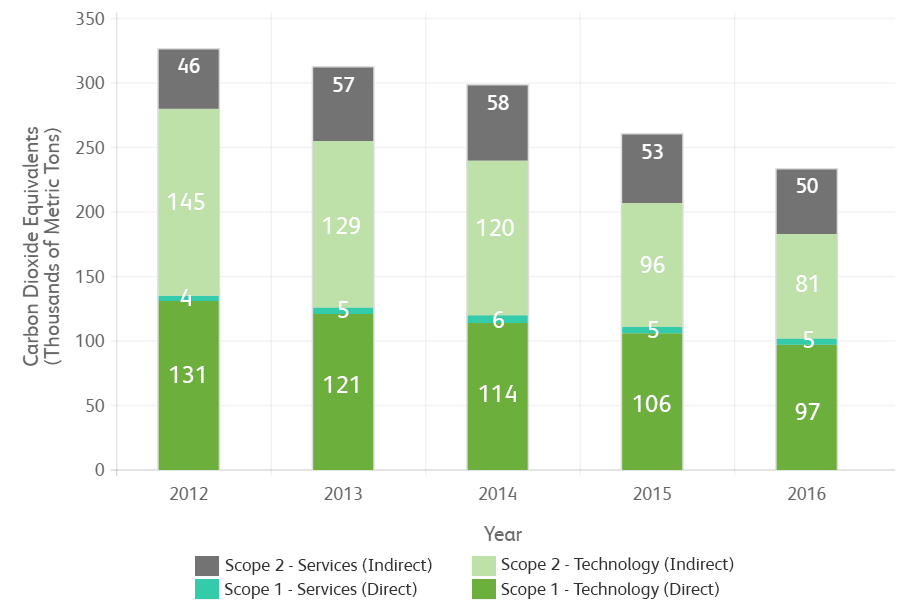
Scope 3 Emissions
Scope 3 emissions result from activities commissioned by Xerox, but take place at a third party and/or arise from sources not owned or controlled by Xerox. Therefore, the collection of indirect, or Scope 3, GHG emissions is challenging. The probability of data inaccuracy with Scope 3 emissions is higher than for Scope 1 or 2 emissions for several reasons. These include the limited availability of data from the supply chain and, the more tiers of suppliers there are in the system, the more onerous the data collection process is. In order to overcome some of these challenges, we calculate Scope 3 emissions according to the Greenhouse Gas Protocol Corporate Value Chain (Scope 3) Accounting and Reporting Standard. This standard provides requirements and guidance to collect, prepare and publicly report a GHG inventory that includes indirect emissions. The Scope 3 emissions information is also used to prioritize our GHG emission reduction efforts and to integrate consideration of carbon impact into our sourcing and internal decision-making.
Third Party GHG Verification
Our 2016 Scope 1, Scope 2 and Scope 3 GHG emissions have been verified by a third party verification/assurance company in accordance with ISO 14064-3:2006 against our internally defined methodology described in “Xerox Corporation Greenhouse Gas Emissions Inventory Management Plan, Version 2, December 2016” and the principles of: transparency, accuracy, consistency, completeness and relevance.
Climate Change Risks and Opportunities
Xerox has examined the regulatory, physical and commercial risks and opportunities associated with climate change across our value chain.
We assess and manage our carbon risk by maintaining both a comprehensive GHG emissions inventory and a mature regulatory tracking function that provides the necessary information to stay abreast of developing regulation. We do not consider our company to be subject to unique risks due to changing weather patterns, rising temperatures and sea level rise, but we recognize that our business and our customers could be affected by more frequent disruptions as a result of severe weather in locations where we operate. We may need to invoke our business continuity and resumption plans to aid customers and employees who are impacted by business disruptions on account of severe weather. We have experience working to ensure continuity of critical applications by prioritizing business needs and developing customer-specific preparedness plans where appropriate. These plans include communication with employees and customers, management of employee health and safety issues, business continuity and resumption processes, as well as interaction with government organizations.
We recognize that the increasing costs of energy and concerns around energy security are issues that affect both our operations and our customers. To meet our commitment for “Reducing Energy Use and Protecting the Climate,” our long-term strategy is to continue to invest in technologies that reduce the carbon footprint of our operations and develop technology solutions that help our customers to reduce the energy and environmental impacts of their business.
Preserving Clean Air and Water
Air Emissions
Xerox has significantly reduced manufacturing air emissions over the past 20 years, but we continue to pursue efforts to do even more.
Most of our air emissions originate from the production of imaging supplies such as toner, photoreceptor drums and belts as well as fuser rolls. Approximately 25 metric tons of volatile organic compound (VOC) process air emissions (VOC and non-VOC) were released to the atmosphere from these activities in 2016. Emission reductions over time primarily have come from process modification, lower production volumes of legacy products and production declines attributable to longer-life components.
Volatile Organic Process Air Emissions
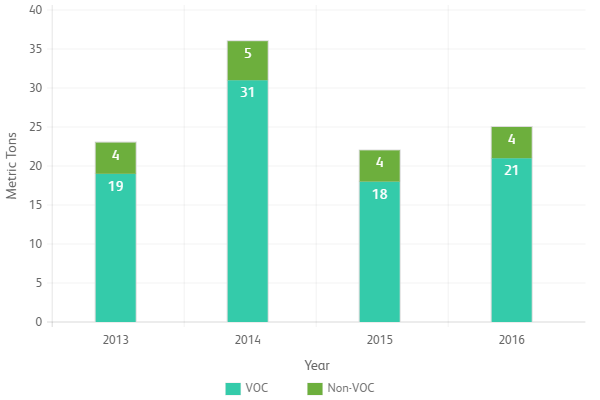
Emissions for years 2013 through 2015 are based on actual usage records. Since usage records were not available for 2016, quantities were estimated based on a survey assuming worst case scenarios. Actual air emissions for 2016 may be lower than shown.
A subset of these VOC emissions is defined by the U.S. Environmental Protection Agency (EPA) as hazardous air pollutants (HAP). In 2016, Xerox reported worldwide air emissions of approximately 5.3 metric tons of HAP under national toxic chemical release regulations, including the U.S. Toxic Release Inventory (TRI) program. Methylene chloride, methyl isobutyl ketone (MIBK), 1,3-butadiene and styrene represent virtually all of these HAP emissions.
2016 HAP Air Emissions
as Reported under National Toxic Release Regulations
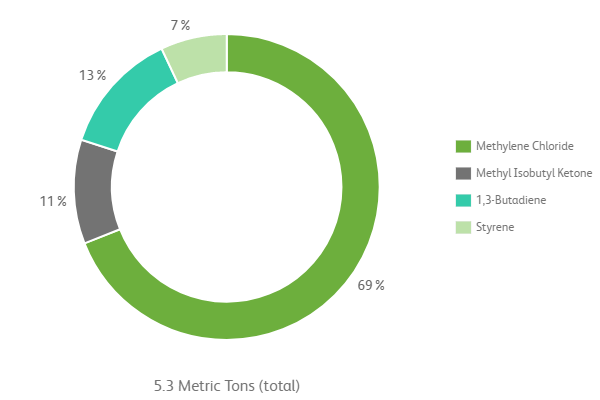
Ozone-Depleting Substances
Xerox policy prohibits the use of ozone-depleting substances (ODS) as ingredients in the manufacturing processes for products and finished products including spare parts, accessories, consumables and packaging. ODS used as refrigerants in facility and vehicle air conditioning systems and various food/equipment-cooling systems are in compliance with applicable global regulations. Elimination of ODS as refrigerants is managed consistent with government phase-out dates.
Toxic Chemical Releases
The release of materials used in our worldwide operations is evaluated annually and reported to government agencies under national toxic chemical release reporting regulations, such as the U.S. TRI, the Canadian National Pollution Release Inventory and the European Pollutant Release and Transfer Register. Releases for reporting year 2016 remained unchanged compared to 2015 levels and were 75 percent lower than 2007 levels. Note: 2015 values are updated in this report to include approximately 5 metric tons of releases and transfers that were inadvertently excluded at that time.
Reportable Toxic Chemical Releases and Transfers
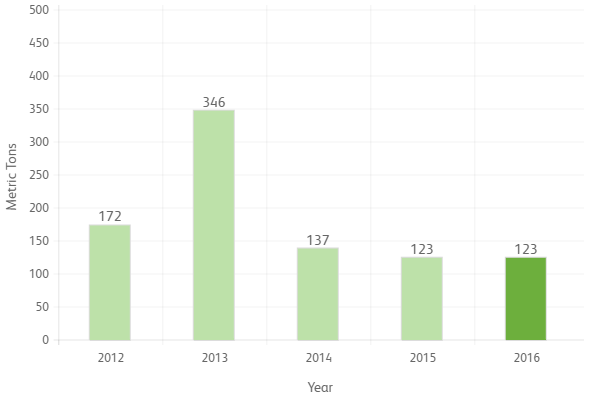
In 2011, operations with reportable toxic chemical releases to the air, land or water — in amounts of greater than one metric ton — established goals, targets and objectives related to chemical releases. Progress against these goals as of year-end 2016 is summarized below:
- An initiative to reclaim spent methyl isobutyl ketone (MIBK) continued to exceed expectations in the fifth full year of implementation. Recovered solvent was qualified for use as a cleaning solvent for the fluid delivery systems used in U.S. fuser roll coating operations. As a result, the amount of virgin MIBK purchased in 2016 for use in the manufacturing operation has been reduced by 43 percent from the 2010 baseline on a normalized, per-part basis.
- Methylene chloride used in the manufacture of Xerox photoreceptor belts was reduced by 70 percent from the 2010 baseline, greatly exceeding target. This dramatic decrease was primarily due to volume declines of legacy products and process modifications that cut the amount of methylene chloride used for batch cleaning of production equipment.
- Per-batch emissions of 1,3-butadiene from U.S. toner resin manufacturing operations decreased slightly, exceeding target in 2016. Low-emission hose connectors and incident-free material handling operations contributed to this result.
Spills and Accidental Releases
Our goal is to proactively prevent any release of regulated materials to air, soil and water. In 2016, ten reportable spills or releases occurred at Xerox operations. Most of these spills/releases were minor in nature, contained and had little to no impact on the environment, while only two releases were relatively significant. The first significant release occurred at our Webster, New York facility, where 0.45 metric tons of methylene chloride was released to the air over the course of several hours as a result of equipment failure. The second significant release occurred in Ontario, Canada, where 32,000 liters of wastewater was prematurely discharged to the sanitary sewer from toner manufacturing operations due to a programming error. While the reporting of these spills is not a GRI requirement, they are included in this report for the purpose of transparency. Xerox received no fines or non-monetary sanctions for any spills in 2016 and corrective measures were implemented to minimize the potential for these incidents to occur in the future.
Water Consumption and Treatment
As part of our commitment to conserve resources, we monitor water consumption across our manufacturing, distribution and R&D facilities worldwide. Water consumed by Xerox operations is sourced from local municipal suppliers that withdraw water from the ground, lakes, rivers or other surface waters.
In 2016, we exceeded our goal to reduce water consumption by 35 percent (against a 2010 baseline), years ahead of our targeted date of 2020. Our annual water consumption was down 43 percent due to a combination of conservation initiatives and production declines.
A pilot program was initiated at our plant in Wilsonville, Oregon, to evaluate the use of Reverse Osmosis reject water for secondary use. This project was implemented in mid-2016. During the year, more than 265,000 gallons (1.003 million liters) of reject water – which would have otherwise have been sewered - were reused onsite in cooling towers.
The water discharges at manufacturing sites are monitored to validate compliance with local sanitary sewer discharge limits. Wastewater from manufacturing processes is treated, as necessary, before being discharged into local sanitary sewers. We utilize best practices to prevent unwanted pollutants from entering waterways via surface contamination and run-off. Extensive sampling of wastewater, discharged to both sanitary and storm sewers, ensures that discharged water meets our strict requirements. Although Xerox has not established a goal for reduction of wastewater discharges, it is worth noting that water discharged from our facilities in 2016 was approximately 32 percent lower (731 million liters) than in 2010. These results also can be attributed to water conservation initiatives and production declines.
Water Consumption
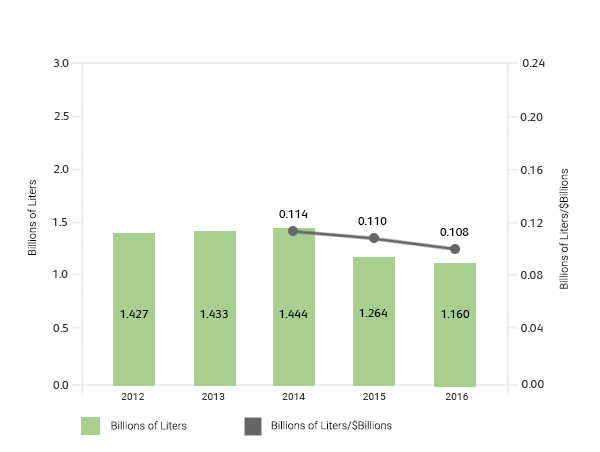
Revenue is from continuing operations attributable to Xerox Technology, revised for all periods to reflect discontinued operations.
Preventing and Managing Waste
Hazardous Waste
In 2016, the amount of hazardous waste generated was 11 percent higher than in 2015 as a direct result of decommissioning activities at a European manufacturing site, production increases and a raw material contamination incident. Xerox beneficially managed 75 percent of the hazardous waste generated in 2016 through recycling and/or fuels blending technologies.
Xerox does not export hazardous waste to developing nations. A third-party supplier recovers spent MIBK, which is returned to the generating manufacturing operation for reuse. Solid and liquid hazardous waste streams that have an adequate BTU value are managed via a fuels blending program. An off-site waste disposal vendor blends these waste streams to meet the specifications provided by cement kilns.
Hazardous Waste Generated
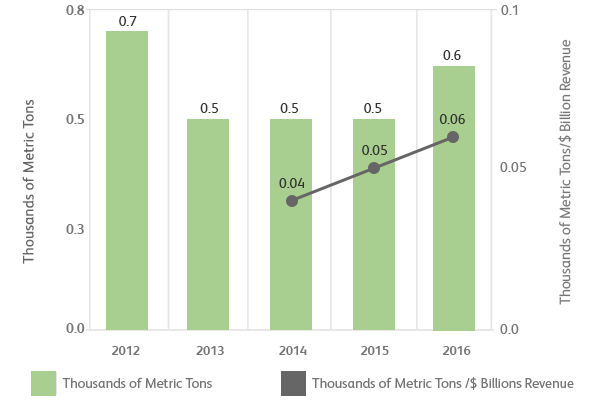
Revenue is from continuing operations attributable to Xerox Technology, revised for all periods to reflect discontinued operations.
2016 Hazardous Waste Management Methods

Non-hazardous Solid Waste
Xerox has had waste reduction efforts in place for many years. We reuse boxes, pallets and containers for parts delivery. We capture toner that is outside the acceptable size range during manufacturing, recycle returned equipment and reuse totes for recycling scrap metal and paper.
Globally, operations generated 39,000 metric tons of non-hazardous solid waste in 2016, down from 47,100 metric tons in 2015. Process waste consists primarily of paper, wood, pallets, waste toner, plastics and packaging waste such as corrugated cardboard. Equipment manufacturing waste includes scrap metal, waste batteries and lamps, miscellaneous trash, and non-usable end-of-life equipment and parts that our customers return to Xerox for processing and remanufacturing. This waste made up about 73 percent of the non-hazardous solid waste managed by Xerox operations in 2016. Xerox is able to reuse or recycle nearly 100 percent of the waste generated from our customer returns.
Our goal is to attain a reuse/recycle rate of 100 percent by 2020 at facilities globally, compared to a baseline year of 2009. In 2015 and 2016, we managed 94 percent of non-hazardous solid waste beneficially, up from 93 percent in 2014. The increased reuse/recycle rate is attributed to an increase in our manufacturing operations using energy-from-waste technology as a means of dispositioning waste that is not recyclable. Additionally, in 2016 our equipment resellers were able to return a greater number of products to the marketplace for resale. That resulted in a significant reduction of all non-hazardous waste. Please note that the reuse/recycle rate has been revised from previous years to more accurately represent non-hazardous waste management methods.
Non-hazardous Waste
Annual volume by Management Method
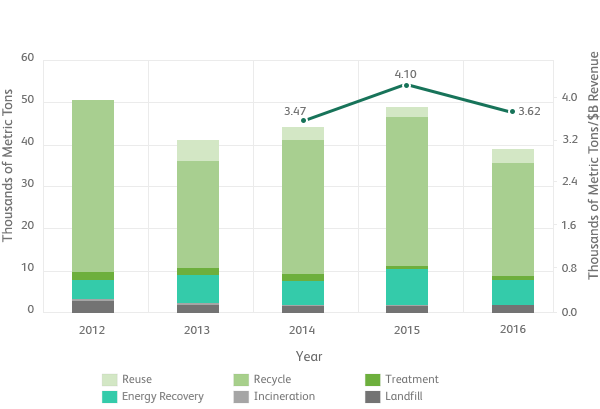
Revenue from continuing operations attributable to Xerox, revised for all periods to reflect discontinued operations.
2016 Non-Hazardous Waste Management Methods
Percentage by Management Method
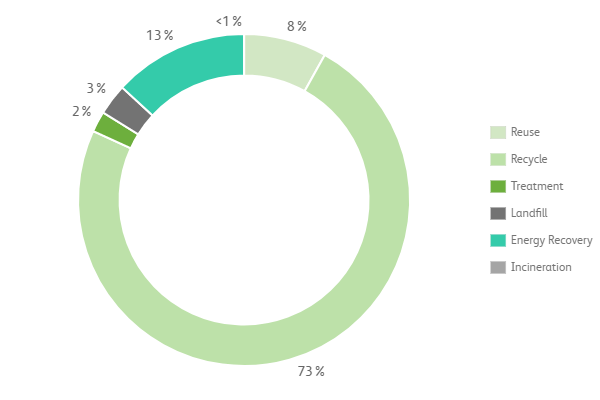
Non-hazardous Solid Waste Recycling Rate
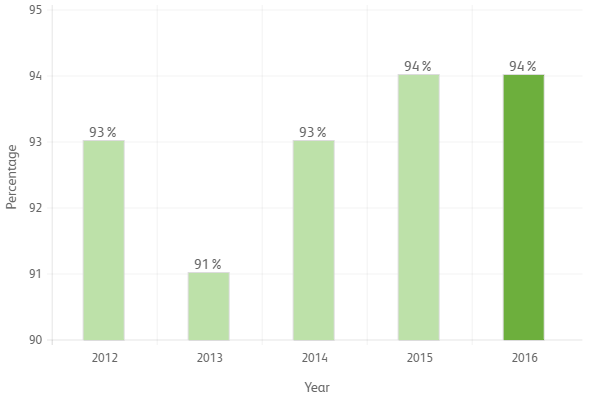
Environmental Remediation and Compliance
In 1985, we voluntarily assessed our real estate portfolio globally and identified 68 facilities with environmental contamination. We worked closely with the appropriate federal, state and local agencies to initiate prompt and appropriate measures to ensure the protection of employees, neighbors and the environment.
Today, only two of the original 68 sites require active remedial or control measures. We have effectively removed or greatly reduced the source areas of contamination and have remediated these properties for reuse or redevelopment. We are now completing post-remediation compliance monitoring at sites that are no longer subject to active remediation, which will enable the regulatory process for managing these sites to be terminated officially.
In addition to using conventional techniques for groundwater recovery and treatment and soil excavation, we have a history of developing innovative technologies to enhance our remedial efforts. These included techniques that improve and accelerate the recovery of contaminants such as high-vacuum 2-Phase Extraction and enhanced bedrock fracturing. We also employ technologies where contaminants are converted to less-harmful substances through enhanced natural biodegradation and chemical oxidation.
Compliance Reporting
We require our operations and subsidiaries worldwide to report allegations of regulatory non compliances to our Environmental Health, Safety and Sustainable (EHS&S) group for evaluation and corrective action, where appropriate. In 2016, two instances resulted in a notice of violation. One notice was due to water discharges exceeding wastewater discharge limits. The second notice involved the lack of registration on a petroleum bulk storage tank. No fines or non-monetary sanctions were issued for either notice of violation. Corrective actions have been completed and appropriate controls implemented to ensure ongoing compliance.

Sustainable Services and Products
We consider environmental priorities in the design of our products and services; it’s better for our customers, our business and the environment. We solicit feedback from clients and other stakeholders and take a forward-looking view of global trends in technology, regulations and eco-labels. We’ve developed a comprehensive sustainability program based on global standards and quantitative analysis.
Samples of our work:
- Charter partner of the U.S. Environmental Protection Agency (EPA) ENERGY STAR® program; 100 percent of all new eligible Xerox product introductions meet ENERGY STAR® 2.0 requirements for Imaging Equipment.
- Since the inception of IEEE 1680.2 Imaging Equipment Standard (EPEAT®) in 2013, Xerox has registered all newly launched office products to this set of performance criteria. We have a 100 percent compliance rate for EPEAT® audits.
- Through a partnership since 2006 with the Nature Conservancy, The Xerox Foundation grants of more than $2 million have helped preserve and protect globally important forests.

Reducing Environmental Impact through Our Services and Solutions
Our expanding Managed Print Services business in combination with our extensive print fleet offers solutions that reduce energy consumption and improve environmental performance.
Our equipment and software is designed to help customers operate efficiently. The “earth smart” feature, integrated into the Xerox global print driver, brings several resource-saving settings together at the single click of a button. These features, such as duplex (two-sided printing), n-up (multiple pages per sheet), proof print and toner saving modes, make it easier for customers to make responsible print choices. Our Xerox Enterprise Print Services customers have access to sophisticated print management and reporting tools, such as Xerox Print Agent, which provides additional methods of encouraging and tracking responsible print behaviour. Software products such as DocuShare® and FreeFlow® Digital Workflow Collection help Xerox customers reduce paper consumption by facilitating electronic data management, scan to email, print-on-demand and distribute-then-print workflows.
Xerox has also been exploring creative ways to engage employees in the sustainability effort. The Xerox® Print Awareness Tool is a unique managed print service approach to sustainability management and reducing print volumes. By using this tool, users can see their print usage, using an easy, interactive desk interface, and take steps to improve print behaviour. Through each user's contribution to improvement, customers get one step closer to decreasing overall print costs and achieving corporate social responsibility and sustainability goals. In 2014 Xerox launched CompleteView™ Pro, another tool in the managed print assessment process that, in part, provides customers with a sustainability analysis documenting the environmental impact of print output such as power consumption and CO2 emissions by device and site. Learn more at managed print services.
Using the full suite of Managed Print Service tools, we work with customers to improve the efficiency of office document management by assessing printing needs and developing solutions. Using this approach, customers can better achieve these goals:
- Energy and Greenhouse Gas reduction: Print asset optimization and updates improve energy consumption, reduce Greenhouse Gas impact, and reduce waste materials.
- Reduced paper usage: Using both print authentication and authorization, along with gamification techniques, print behaviors can be changed to reduce unnecessary prints.
- Reduce waste: Newer, more sustainability print technologies and consumables drastically reduce the amount of waste generated from printing practices.
- Digital Transformation: Other paper reductions comes from adoption of digital workflows integrated with Enterprise Content Management (ECM), digital alternatives.
In addition, we use a comprehensive design for the environment approach when designing and developing our products so that environmental impacts are minimized throughout the supply chain.
Standards
Our product standards encompass the following: energy efficiency, chemical management, packaging, parts reuse and recycling, electrical and mechanical safety, ergonomics, electromagnetic emissions, noise, fire resistance and materials safety. Xerox business teams and our Environmental Health, Safety & Sustainability (EHS&S) organization review our products at each stage of the development process for conformance with environmental, health and safety standards, which is a requirement for the introduction of any product. All Xerox standards ensure our products have the appropriate labels and information needed to meet all safety and environmental label requirements to keep our customers appropriately informed. All products meet required industry labeling standards for each market.
Lifecycle Assessment
Xerox integrates lifecycle thinking into all of our product and service development activities as well as our innovation activities. Lifecycle Assessments (LCAs) are a means of technically evaluating the environmental impact of a product’s materials, manufacturing, distribution, use and end-of-life. We conduct full LCAs — in accordance with the appropriate ISO standards — to determine where in the product lifecycle the largest environmental impacts arise and to compare products with a significant difference in technology. Full peer-reviewed LCAs have been performed on our solid ink products (8860, 8870, 8700 and ColorQube 9200 series) and many of our laser technology devices (WorkCentre 5325/30/35, WorkCentre 5945/55, and Phaser 7100). Many of these LCAs directly contributed to our achieving the Electronic Products Environmental Assessment Tool® (EPEAT®) Gold certification for these configurations and provided valuable input to our design teams to determine future opportunities for reductions in environmental impacts. We encourage our customers to learn more about how their printing behavior affects the overall carbon footprint of their organization from a lifecycle perspective.
Product Design
Xerox has long incorporated environmental considerations into product design. Internal processes ensure that product design teams are informed about regulatory and market driven changes affected by product design. These processes ensure that product design teams are able to incorporate timely environmental and product safety considerations. Scientists in our materials research group evaluate aspects of Safety, Energy, Materials and Sustainability (SEMS) using a tool we developed that enables researchers to quickly compare the current design with a future proposed design. The tool challenges designers to think about the whole lifecycle of the product and recognize any positive or negative impacts to the environment. By using SEMS, we can quantify energy reductions, reduce risk of regulated materials and track progress over time. SEMS was designed to be used in early research and development stages to understand tradeoffs and help make decisions.
EPEAT®
For office products, Xerox uses EPEAT® as the foundation of our Design for Environment program. A comprehensive environmental rating system, EPEAT® identifies electronic equipment that meets specific criteria. The diagram below shows the rigor of the system. EPEAT® is composed of criteria spanning corporate and product requirements (50+ requirements for imaging equipment). When a company and product meets these criteria, it must pass a third party desk review. Only after a satisfactory review, the product can be registered and verified annually to ensure compliance.

EPEAT® combines comprehensive criteria for design, production, energy use and recycling with ongoing independent verification of manufacturer claims. EPEAT® criteria reflect several categories of environmental attributes that span the lifecycle of electronic products: material selection, design for end-of-life, product longevity/life extension, energy conservation, end-of-life management, corporate performance, packaging, consumables and indoor air quality. Xerox continues to support EPEAT® initiatives and has a representative on the EPEAT Advisory Council to promote collaboration among stakeholders and aid in the success of the program moving forward. Since 2014 Xerox has committed to launching all new office products with EPEAT® Silver or Gold certification. For example, all new VersaLink and AltaLink products are EPEAT® Silver or Gold as we continue to design our products with the environment in mind. Xerox is the only company to claim all eight EPEAT® corporate optional criteria. Learn more about the EPEAT® program and view current Xerox EPEAT® registered products here.
Reducing Energy Use through Our Products, Technology and Initiatives
- ENERGY STAR®
More than 10 years before the inception of the U.S. EPA ENERGY STAR® Office Equipment program, Xerox introduced the first imaging product with an automatic power-down mode. Since joining with the EPA as a Charter Partner in 1993, we continue to introduce copier, printer, fax and multifunction products that have earned ENERGY STAR® status, even as the certification criteria have grown more stringent.
In 2016, 100 percent of all our new eligible product introductions achieved ENERGY STAR®. This continued success in cutting the power consumption of our laser-based printing products has been achieved by adjustments in the fuser design, changes to the properties of the toner, more efficient electronic controls and the workings of the xerographic system as a whole.
The ENERGY STAR® program, as noted, introduces progressively more stringent requirements over time. The most recent revision went into effect on January 1, 2014. While the standard was challenging to meet, our goal remains to have 100 percent of our new products achieve this label. Xerox and other industry members are working with the EPA to establish the next set of requirements, which will be ENERGY STAR® Imaging Equipment 3.0. Xerox will keep on meeting these new targets in the coming years. These energy requirements serve as the foundation for other eco-labels, such as EPEAT® and Blue Angel, and show our ongoing commitment to reduce product energy consumption.
- Multifunction Devices
Our multifunction systems further reduce the amount of energy required to copy, print, fax and scan by combining the functions of multiple products into one machine. The annual energy savings of replacing several individual ENERGY STAR®-qualified copiers, fax machines and printers with one Xerox ENERGY STAR®-qualified WorkCentre multifunction system is up to 50 percent. Energy savings would be substantially higher if a multifunction system replaces individual products that have not earned the ENERGY STAR® rating.
- Xerox ConnectKey™
Xerox ConnectKey™ is a software solution that enables information to be moved to and from the cloud without the security risks that commonly exist. Cloud computing is an alternative to large data centers and is being recognized worldwide as less energy intensive than data centers while generating fewer GHG emissions. In addition, Xerox ConnectKey™ and Cisco EnergyWise enable energy management by allowing for the control, management and reporting of a device’s power consumption and the setting of power states and timeout intervals.
Deinkability
In recent years, deinkability has become an area of increasing concern, particularly among our Graphic Communications customers. Ensuring that prints produced with our equipment and materials can be responsibly managed at the end of their useful life is an important consideration in our product development process. When appropriate, independent testing confirms that these prints pose no unique challenges to the recycling stream. While the deinkability of xerographic prints has long been demonstrated, a key milestone for a new technology came in 2010 when our CiPress printer achieved a “Good Deinkability” rating from INGEDE, the international association of the deinking industry.
Packaging and Distribution
Packaging and distribution are integral parts of our product commercialization process. We strive to eliminate, reduce, reuse and recycle packaging and eliminate the use. We also require packaging suppliers to comply with bans and restrictions for a variety of chemicals. We document our expectations in our Environment Health and Safety Requirements for Packaging Standard — EHS-710, and our General Packaging Standard — 88P311. Our commercial equipment is designed and tested extensively to be shipped without any required packaging. Eliminating or reducing packaging wherever feasible, conserves natural resources and decreases fuel use for distribution. Doing so represents a sustainability win for business and the environment.
We also offer the Xerox® Automated Packaging Solution. This system uses the latest in document technology to print, finish and cut customized folding cartons in short runs. By creating packaging quickly and cost effectively, this tool enhances material efficiencies as well as decreases obsolescence through customized boxes and containers. Automated packaging reduces financial and environmental costs associated with warehousing, storage and disposal. It also proves an advantage for focused marketing campaigns and rapidly changing competitive markets.
A few examples that illustrate our commitment to sustainability in this area:
Developer Housing Assembly — Converting to Use of Molded Pulp
For many years our principal supplier shipped housing assemblies to us packed in foam. We moved production to the U.S. and redesigned the packaging to take advantage of readily recyclable molded pulp solutions.
Expanded polystyrene end caps, weighing 68 grams each and measuring 5 inches in length, 6.5 inches in width and 6 inches in height per side, were replaced with molded pulp end caps. The result was a decrease in our material footprint large enough to increase the amount of product load from 77 units per pallet to 144, a gain of 87 percent. This eliminated 4,800 kilograms (10,575 lbs.) and 8,559 cubic feet of foam annually; it also reduced costs and conserved natural resources.
WorkCentre 7120 Customer Replaceable Units (CRUs) — Reducing our Footprint
As with our developer housing assemblies, we redesigned packaging provided to us by a large supplier of color WorkCentre 7120 CRUs by removing polystyrene end caps and decreasing the size of the package. The result: reduction of 4,725 kilograms (10,417 lbs.) or 27,756 cubic feet of polystyrene waste annually, and 27 percent increase of product per unit load.
Xerox Replacement Cartridges (XRC) — Reducing Solid Waste
For XRC products, Xerox packaging engineers replaced hot wire expanded polystyrene end caps with inflatable air bags. Upon receipt of the package, the air bags are easily deflated, producing far less solid waste by mass and cubic volume compared to polystyrene; and this change is an environmentally preferable alternative.
Third-Party Supplies Sold by Xerox
Xerox sells imaging supplies through its distribution network that are manufactured by other companies for use in other OEM printers. Manufacturing processes combine patented and patent- pending technology, environmental management principles and proven waste prevention manufacturing and recycling processes. We thoroughly review these supplies to ensure compliance with appropriate regulatory requirements. In addition, we assess them against our own stringent standards. The results of these reviews ultimately determine which products carry the Xerox brand. Information is provided on Safety Data Sheets (SDS), which meet the requirements of the Globally Harmonized System of Classification and Labeling of Chemicals (GHS) as implemented through regulations in our various markets.
Striving for a Circular Economy
In the 1980s, Xerox introduced the concept of a circular economy for electronics remanufacturing, long before the term was coined. Our vision was to transform Xerox manufacturing, operations, offices and facilities into waste-free workplaces. We had the same vision for our customer’s workplaces. A world where our electronics and supplies currently in use would be the raw materials of tomorrow at the end of their useful life. Hence, the meaning of the term circular economy. Where quality is not compromised, precious natural resources are conserved and waste becomes an obsolete term. More than three decades later, we are still living the dream and demonstrating that a circular economy approach delivers economic, environmental and societal benefits.
Our aim is to design products, packaging and supplies that make efficient use of resources, minimize waste, reuse material where feasible and recycle what cannot be reused. To meet this commitment, we developed several programs: Xerox Green World Alliance provides a collection and reuse/recycling program for spent imaging supplies; Xerox Product Takeback and Recycling Program manages equipment at end-of-life; and we invest in technologies that reduce the creation of waste. For laser-based products, materials innovation has extended the life of critical replaceable components by up to 50 percent.
Our approach to managing products at end-of-life translates into significant environmental and financial benefits. Globally, our combined returns programs (equipment resale or remanufacture in conjunction with parts and consumables reuse and recycling) prevented nearly 37,000 metric tons of waste from entering landfills in 2016.
Consumables Takeback and Recycling
Our GWA initiative, as noted, is a collection and reuse/recycling program for customers for their used imaging supplies. GWA is central to our commitment to waste-free products.
Currently, more than 35 countries participate in the Xerox GWA. Each has its own GWA country website that describes the processes available to the customer or the appropriate points of contact for more information. Worldwide, our customers returned more than 4.2 million cartridges, toner containers and other used supply items in 2016, equating to 4,800 metric tons.
Returned products are sorted, and items suitable for remanufacturing are cleaned, inspected and then remanufactured. Remanufactured consumables, containing an average of 90 percent reused/recycled parts, are built and tested to the same performance specifications as new products. Items that are not suitable for remanufacturing are recycled or recovered through energy from waste. Recycled waste toner and toner reclaimed from manufacturing that qualifies for reuse may account for 25 percent of the weight of new toner, without compromising toner functionality. Reusing waste/reclaimed toner saves several million dollars in raw material costs each year. Of the toner that cannot be reclaimed, 75 percent is recycled by our consumables recycling partner while the remaining volume is utilized at energy from waste facilities to generate steam and electricity.
Total Waste Diverted from Landfills from Returned Cartridges, Bottles and Waste Toner

Equipment and Parts Takeback and Recycling
In the early 1990s, we pioneered the practice of converting end-of-life electronic equipment into products and parts that contain reused parts while meeting new-product specifications for quality and performance. We have developed a comprehensive system for taking back end-of-life products, which processes assets through remanufacture, refurbish, parts reuse, recycling or broker sales, each of which fully supports our waste-free initiatives.
We design our machines with high durability and reuse capability in order to facilitate multiple product lifecycles. During the active phase of a product, all returned equipment and spare parts are evaluated for reuse opportunities throughout the supply chain. Finally, all parts and equipment that are not destined for re-use have specific guidelines, which facilitate easy and consistent recycling.
Xerox enables reuse according to the following principles:
- Reuse of complete end item - This approach requires the least reprocessing, transportation and energy usage.
- Remanufacturing or conversion into a newer-generation product or part - Product families are designed with a high level of commonality to enable maximum reuse in this manner. This allows us to remanufacture to “as new” performance specifications while reusing 70 to 90 percent of the machine components by weight without degradation of quality or performance.
- Used Equipment - Equipment returns are evaluated for potential re-use. Based on the condition and market demands, equipment may be put through an extended maintenance/verification process to return it to a high standard and then be redeployed. Approximately 56 percent of machines returned in the U.S. are given new life by being sold as used or sent for remanufacturing of some sort.
- Reuse of major modules, subcomponents and parts for spares or manufacturing - Many of our machines that have outlived their useful life are stripped of usable parts and components prior to the scrap/reclaim process. Used spare parts returned from the field also are included in this reuse stream. Xerox continually has been increasing the number of components that are reused in upstream and downstream processes after the original machine has been designated for recycling.
- Material recycling - After the processes noted above have been followed, any remaining portion of a machine is stripped of any recyclable material (e.g., plastics, copper wire) and material requiring special disposal services, such as printed wire boards, batteries and lamps. The remainder of the machine is then sent to an industrial reclaim facility.
- Post-consumer recycled plastic content - All Xerox products contain between 0%-5% post-consumer recycled plastic content.
Changes in volumes of waste diverted from landfills are due in part to increases in product and part re-use opportunities, modifications in product mix, a move to lighter-weight machines as well as growth of regulatory-driven local recycling schemes. For example, the transition to digital equipment and lighter-weight parts has reduced the weight of both office and production equipment by as much as 50 percent over the last 10 years. The decline also includes a decrease in the number of office machines returned for remanufacturing in Europe due to participation in European Union member state Waste Electrical and Electronic Equipment (WEEE) programs. In geographies where Xerox exercises direct control over the end-of-life management of equipment, return rates are high. For example, approximately 57 percent of all U.S. equipment installs are ultimately returned to Xerox for end-of-life disposition, a figure that rises to 100 percent for leased equipment.
In 2016, 11,000 metric tons of equipment and parts related waste were diverted from landfills to recycling at our U.S. Reverse Logistics Center. Globally, that volume rises to 37,000 metric tons.
Total Waste Diverted from Landfills from Returned Equipment and Parts

E-Waste
While Xerox has long been committed to responsible end-of-life management of equipment, the proliferation of e-waste regulations has created a need for multiple programs in different countries and even states. The subtle differences in requirements among these regulations pose challenges from a process consistency and efficiency standpoint. For example, with the implementation of the European Union’s WEEE Directive, we continue to operate our European takeback program to enable equipment remanufacturing and parts reuse. We also participate, as needed, in European member states’ individual collection and recycling programs.
In the U.S., Xerox recently partnered with a large electronics recycler to ensure that our customers have a means for their old imaging devices to be processed in a responsible manner. The program is consistent with the requirements defined in the various manufacturer takeback initiatives.
We carefully manage suppliers that provide recycling and waste disposal services. A waste vendor approval process assesses the safety and environmental practices as well as compliance history of each vendor. Where appropriate, we require these companies to document the final disposition of materials sent to their facilities, including electronic scrap. Xerox does not allow its vendors to send electronic scrap to developing nations for processing. We strive to work with only those recyclers that have implemented voluntary programs certified by accredited organizations. The programs are U.S. EPA’s Responsible Recyclers (R2) or the Basal Action Network’s e-Stewards standards. In addition, in 2014, Xerox’s two U.S. equipment processing facilities achieved R2 certification.
Paper
We recognize our obligation to responsibly source paper and enable efficient paper use. Our strategy begins upstream with the fiber source and continues to processing and manufacturing, through use and end-of-life. We utilize a multi-pronged approach through partnerships with our customers and suppliers, The Nature Conservancy and other stakeholders, including non-government organizations (NGOs), government agencies and academia. Our long-term goal is to support a sustainable paper cycle and minimize environmental impacts while meeting our customers’ exacting business needs.
In 2013, Domtar signed an agreement with Xerox for the acquisition of the Xerox paper and media products business in the U.S. and Canada. This deal gives Domtar exclusive rights for the marketing and distribution of Xerox brand paper and print media. Read more about Domtar and sustainability. The same year Xerox’s paper business in Western Europe was sold to Antalis. Read more about Antalis’s sustainability charter.
Xerox maintains the paper business in its Developing Market Operations. We apply stringent paper sourcing guidelines for companies that provide paper to Xerox for resale. The requirements cover all aspects of papermaking, from forest management to production of finished goods. We supply papers that comply with sustainable forest management standards, including Forest Stewardship Council (FSC) and Program for the Endorsement of Forest Certification (PEFC). FSC-certified papers use raw materials from an FSC-certified source, controlled wood sources or post-consumer reclaimed sources.
Our Partnership with The Nature Conservancy (TNC)
Since 2006, Xerox and TNC have partnered to preserve and protect globally important forests. This work is funded through The Xerox Foundation grants of more than $2 million.
During the third term of the partnership in 2016, Xerox supported the Conservancy’s efforts to:
- Develop and test a broadly applicable carbon methodology for improved forest management that would allow landowners to achieve forest certification and serve as a platform for potential carbon benefits.
- Strengthen a key tool for identifying priority habitats — the High Conservation Value (HCV) approach — for building consistency across projects, disseminating standards and training assessors through global and regional HCV networks. .
- Promote responsible forestry through the implementation of forest management standards by working with Xerox suppliers and other land managers at two sites in North America: Central-Western New York and across the Canadian boreal forest (including a focused project in Northwest Ontario).
These initiatives have improved forest conservation, helping to develop a sustainable paper cycle and advance sound forest management practices through market incentives, landowner investment and resource networks. Most importantly, our work has and will continue to stem the tide of forest loss and degradation, a contributor to global GHG emissions.

The Xerox Foundation
We invest in the communities where we live and work for reasons beyond fulfilling our obligation as a corporate citizen. We do it because it makes our company stronger and more competitive.
A Foundation for Good
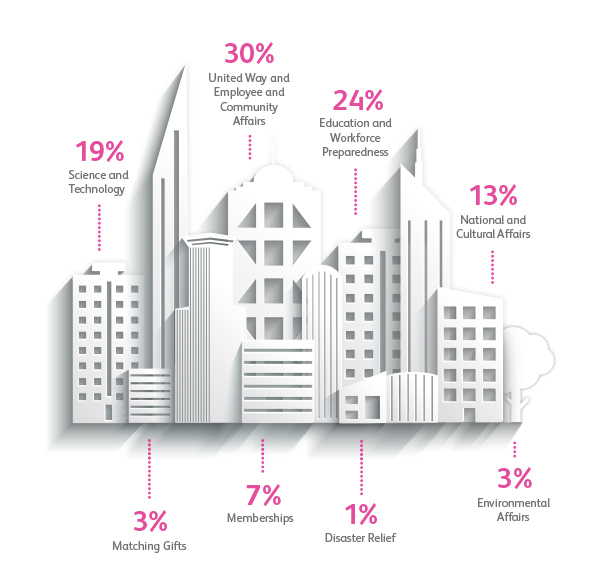
Xerox executes a deliberate, philanthropic investment strategy to deliver the greatest impact possible for every dollar spent. In 2016, we invested $13.5 million in the non-profit sector. More than 2,500 non-profit organizations, colleges and universities received direct financial support in the form of grants, matching gifts or community involvement activities of Xerox people.

- Employee volunteerism — direct, hands-on support for communities where our people and our customers live and work.
- Education and workforce preparation —investments in education programs that target underserved areas and deliver results.
- Science and technology — partnerships to promote innovation with institutions of higher learning.

Employee Volunteerism
At Xerox, we believe a combination of financial and human resources can bring about greater change than either on its own. This philosophy is perhaps best represented by the Xerox Community Involvement Program (XCIP). This long-running, grassroots initiative backs the voluntary spirit of our employees with funding support from Xerox. In this way, we’re making the biggest difference in the communities where we live and work.
Since the program began in 1974, thousands of Xerox people have rolled up their sleeves and participated in projects that make their hometown a better place. In 2016, The Xerox Foundation invested more than $1.0 million in XCIP, enabling 10,000 Xerox people to participate in more than 900 projects.

It doesn’t stop there. Outside of The Xerox Community Involvement Program, many Xerox people also give their time and talent to a wide variety of causes. Here are a few examples:
- Xerox researchers and scientists participate in the Xerox Science Consultant Program, which sends our people into elementary schools to teach science to inquiring young minds and to ignite interest in science as a career.
- Xerox lawyers provide pro bono work to a wide range of non-profit organizations.
- People across Xerox — from the C-Suite to the factory floor — volunteer to help make our world a better place, whether by giving their time to a corporate board or by rolling up their sleeves and packing boxes for a holiday food and gift drive.

Education and Workforce Preparedness
As part of a larger effort to support education in the U.S., Xerox provides matching gifts to colleges and universities. In 2016, 327 institutions received 857 matching gifts from The Xerox Foundation.
Investing in Education
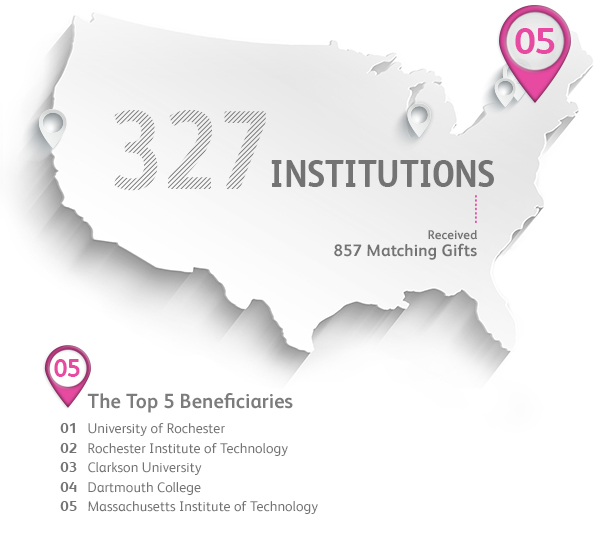
Our support of education involves programs with a common theme: providing educational access to underrepresented minorities. In turn, this advances the strategic interest of the company by enabling us to recruit from a highly motivated, technically educated talent pool. In addition, our own people benefit by being involved on college campuses. The three programs are:
- The Black College Liaison Program disbursed 21 grants during 2016 to schools such as Howard University; Spelman College; Morgan State University; Hampton University; and Tuskegee University.
- The Hispanic College Liaison Program disbursed 20 grants during 2016 to schools such as University of Puerto Rico; City College of New York; University of California; University of Central Florida; University of Texas; and Rochester Institute of Technology.
- The Xerox Technical Minority Scholarship Program provided 110 scholarships to help deserving minority students to complete degrees in engineering.
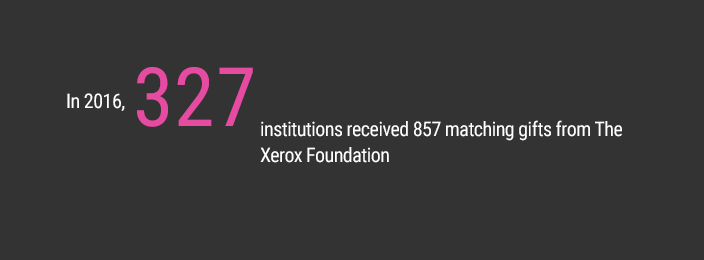
We also continue to partner with the people and programs making a difference and delivering results. Our investment in the National Academy Foundation’s Academies of Engineering create “schools within schools” that provide incentives for minority and female high school students to pursue college degrees and, ultimately, careers in science, technology, engineering and mathematics ─ the STEM principles. We’re also investing in organizations that teach and deliver the skill sets needed for today’s economy, programs like FIRST (For Inspiration and Recognition of Science and Technology); Catalyst and MIT’s Sandbox initiative for entrepreneurs.

Science and Technology
At Xerox, innovation is our foundation for success. Academic organizations play an important role in the long-term strategic interests of the company by furthering scientific research and training the next generation of scientists. This is why The Xerox Foundation supports many such organizations, including the University of Rochester, New York Hall of Science and Cornell Tech.

In 2016, Xerox invested $900,000 in The University Affairs Committee, an effort aligned with the long-term strategic interests of Xerox and is championed by a Xerox employee. It is governed by a committee of Xerox researchers and scientists from around the world. The program recommended 30 grants to university science programs, including nine international universities.
In addition, Xerox scientists and the professors we funded co-authored and published 10 research papers in leading academic journals. Xerox hosted 11 visits and researchers made 37 personal visits to universities in the United States and internationally, as well as 60 remote visits. In 2016, Xerox hosted nine interns.

National and Cultural Affairs
Xerox champions a variety of organizations that address issues facing our nation.
Disaster Relief
We invest in the American Red Cross for its efforts to respond quickly and effectively to natural disasters. We also invest in Save the Children and Concern Worldwide, which bolsters our ability to address urgent humanitarian needs across the world. In 2016, Xerox partnered with and invested in The American Red Cross efforts to respond quickly and effectively to humanitarian needs in Louisiana due to flooding, the earthquake in Ecuador and the fatal shootings in Orlando, FL.

Environmental Affairs
From habitat preservation to sustainability research and the promotion of environmental consciousness, we are committed to protect the environment for future generations. Xerox invests in organizations that teach young people respect for the environment, such as Fresh Air Fund, National Aquarium in Baltimore, MD; and Sound Waters in Stamford, CT. Xerox employees actively engage with non-profits supported by the Foundation such as Business for Social Responsibility and Second Nature. Lastly, 2016 marks the end of our multi-year partnership with The Nature Conservancy where our investment created and established sustainable forestry practices in North America.

Employee Engagement
Xerox is committed to fostering open communication between employees and management, from one-on-one conversations between employees and supervisors to company-wide engagement activities, such as our Culture Survey. Our commitment to employee engagement creates an environment of two-way dialogue that benefits our business and strengthens our contribution to global citizenship.
Culture Survey
We recognize there are many ingredients necessary for Xerox to be successful:- A strong relationship with satisfied customers
- Great products and services
- A roadmap for the future
- Talented people
- A winning culture
- Collaboration
- Results Driven
- Empowerment
- Discipline
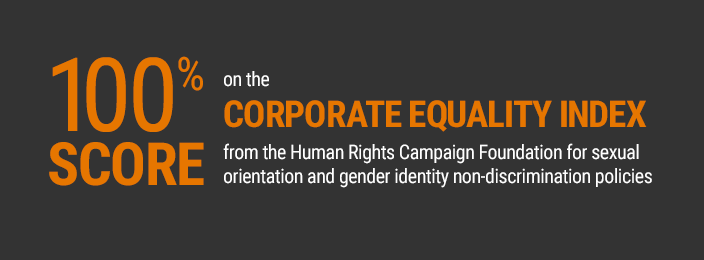
In July 2017, we launched our Culture Survey to serve as a baseline to assess how employees see the behaviors that are present in our company. 70 percent of employees from around the world shared their thoughts. 19,638 employees completed the survey. We received results from 50 countries in 19 languages. Our leadership teams will use the results to guide the actions we take to strengthen and advance our culture. Engagement activities are ongoing and other opportunities are available for employees to continue to have their voice heard. Follow-up surveys will be used to chart our progress.


Global Workforce
The experience, skills and cultural diversity of the people who work at Xerox worldwide represent our most important asset. Our wide range of products and services requires a diverse employee population, representative of the markets in which we do business.
Total number and rate of U.S. new employee hires by age group and gender as of Dec. 31, 2016:
| Age | Percentage |
|---|---|
| Younger than 25 | 34% |
| 25 to 34 | 34% |
| 35 to 44 | 16% |
| 45 to 54 | 10% |
| 55 to 64 | 6% |
| 65 and older | <1% |
New Hires
| Women | Men |
|---|---|
| 66% | 34% |
Hiring Practices
We hire from the communities where we do business. We take care to research and comply with local labor laws to ensure the safety and happiness of all our employees around the globe. Candidates must be authorized to work in the country to which they are applying and be fluent in the language of the country where a job is based.
We never discriminate against applicants or employees because of age, race, religion, sex, disability, sexual orientation, gender identity, military status, pregnancy, national origin, veteran status, other legally protected characteristic or basis or any unlawful means.
Compensation is based on merit, degree of responsibility, scope of work, impact the role has on the company and other work-related criteria. We comply with all laws governing fair employment and labor practices.
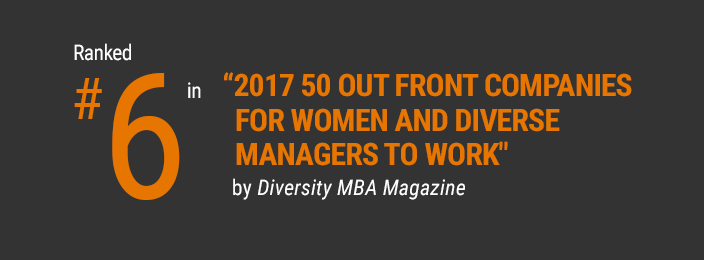
Military Hiring Programs in the U.S.
We value the experience and skills acquired during military service. As part of a commitment to the White House Joining Forces Initiative, we pledged to hire 10,000 veterans by 2018; in 2016, we hired more than 4,000.
Through our Heroes@Home program, we hire qualified veterans and military spouses for at-home employment opportunities.
We’re proud partners with all branches of the military, the Military Spouse Employment Partnership (MSEP), the U.S. Chamber of Commerce and “Hiring Our Heroes” Career Fairs.
Learn more about our Military Hiring Program for transitioning military, retired military personnel, veterans with disabilities and military spouses and family members at www.xerox.com/jobs/military-leadership/enus.html.

Diversity and Inclusion
At Xerox, diversity is not viewed as a mandate, but as an essential part of our corporate culture. Treating others with respect and offering equal opportunity regardless of origin, race, gender or sexual orientation makes us stronger because it allows us to take full advantage of a global workforce that is rich in experience, knowledge and creativity. Many of our accomplishments as a company originate from teams of diverse individuals whose varying perspectives complement one another as they work together to achieve our strategic goals.
Diversity in the Workplace – Worldwide

Diversity in the Workplace – US

We foster a culture of inclusion and opportunity, which is supported by a number of employee-focused initiatives and tracked through measurable actions.
Award-Winning Diversity
Year after year, Xerox is recognized for embracing diversity in the workplace. The following is a list of some of our acknowledgements from 2015 and 2016:
- “2016 50 Out Front Best Places for Women & Diverse Managers to Work” by Diversity MBA Magazine
- “40 Best Companies for Diversity” by Black Enterprise Magazine
- Best Companies to Work for LGBT employees by Human Rights Campaign Foundation (Xerox has consistently scored a perfect 100 percent on this index each year since its inception more than a decade ago)
- “Best of the Best 2015” Employer Diversity, LGBT by Black Equal Opportunity Employment Magazine
- Diversity and Supplier Diversity
- “Top 100 Companies for Latinos” by LATINO Magazine
- “Top 50 Best Companies for Latinas” by Latina Style Magazine
- Canada’s “Best Diversity Employers” by MediaCorp Canada Inc.
- “Top 100 Companies for Veterans” by Military Friendly Employers Magazine
- “Recognized Veteran Friendly Employer” by GI Jobs Magazine
- Five-time 2020 Women on Boards Winning “W” Company, which recognizes the importance of board diversity
- Top Supporter of Historically Black Colleges and Universities (HBCUs) by the deans of the Accreditation Board for Engineering and Technology and the corporate-academic alliance members of Advancing Minorities’ Interest in Engineering (AMIE)
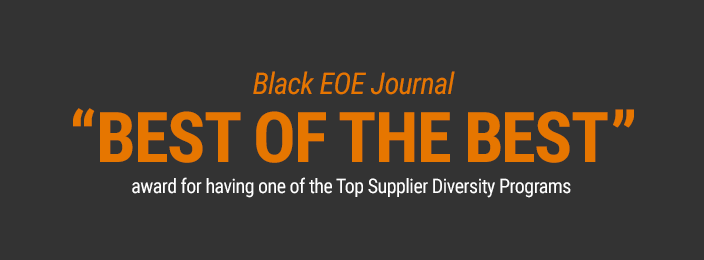
Executive Diversity Council
The Executive Diversity Council consists of senior leaders from across Xerox. The Council meets at selected times throughout the year to discuss matters such as:
- Workforce representation
- Work environment
- Diverse customer markets
- Organizational efforts to address the needs of a multicultural workforce
In addition, select Council members may be involved in other diversity initiatives, such as the Corporate Champion Program, where senior executives are matched with employee caucus groups.
The “champions” educate our senior management on their groups’ environmental perspective and community initiatives.
Independent caucus groups also play an important role in our diversity story. These caucuses, similar to networking and affinity groups, are instrumental in advocating openness, opportunity and inclusion for the entire Xerox community. They work with management to achieve common business objectives and self-advocacy and to create an environment of inclusion. Our caucus groups currently address the concerns of our employees who are millennials and veterans, as well as those who are African-American, African-American women, Asian, Hispanic, women and/or gay, bisexual, lesbian and transgender. Additional groups that promote inclusion include: Xerox Innovation Women’s Council, which identifies key projects to improve the work experience of men and women in research; and Winning Ways, a women-centric group based in India supporting recruitment, growth, networking and mentoring for female job candidates and employees. In the U.K., we have also partnered with the Everywoman Network to give employees access to personal development tools, including monthly webinars, workbooks (with online tutors), articles and interviews with senior women in business.
Non-discrimination Policy
Globally, we create policies that support our business goals and reflect the culture of the countries where we do business. Xerox does not discriminate on the basis of race, color, religious belief, sex, age, national origin, citizenship status, marital status, union status, sexual orientation or gender identity.
By focusing on diversity, Xerox hires, promotes and retains the best people who are well suited for our business. We’ve designed our hiring and promotion efforts to ensure a deep, diverse reserve of strong players who are ready to assume leadership roles. Our hiring practices include engaging Xerox people to recruit at universities and career fairs, providing scholarships to minority students interested in information technology and offering internships and co-op programs to diverse groups of students and new graduates.
Scholarships and Recruitment
Over the years, we have granted 120+ scholarships through our Technical Minority Scholarship Program, and we are reaching out to young people through programs such as the FIRST (For Inspiration and Recognition of Science and Technology) robotics competition and the Xerox Science Consultant Program that encourages broader interest in science and technology. We introduce Xerox career opportunities to the Hispanic student population at 45 universities and institutions and, to expand our recruitment efforts further, we are partnering with the Society of Hispanic Engineers. We have a similar university outreach program for recruiting African-American employees.
Equal Employment Opportunity
In the U.S., Xerox complies with Equal Employment Opportunity (EEO) guidelines and all applicable federal, state and local laws that govern the hiring and treatment of its employees. We do not discriminate against veterans, including veterans of the Vietnam era and disabled veterans, individuals with a disability or employees who take protected leave time.
Representation of Women Around the Globe
Across all lines of business and around the world:
- Thirty-one percent of our Executives are female
- Thirty-two percent of our Managers are female
- Thirty-one percent of our Board of Directors is women; all are over 50 years of age
- Women account for thirty-two percent of our employee population globally
Representation of Women and Minorities in the U.S.:
| 2016 Representation in U.S. | Total Workforce | Executives | New Hires |
|---|---|---|---|
| Women | 60% | 32% | 68% |
| Minorities | 48% | 19% | 60% |
U.S. Veterans
In 2016, four percent of the employees we hired in the U.S. were military veterans.
We foster a culture of inclusion and opportunity, which is supported by a number of employee-focused initiatives and tracked through measurable actions.

Compensation and Benefits
At Xerox, we have long understood our success depends on attracting and sustaining a healthy and productive global workforce. To that end, we offer well-rounded compensation and benefits packages that place value in the whole person.
Our comprehensive Total Rewards package includes competitive pay and a range of benefits wherever we operate. Compensation and benefits vary by location according to local regulations, market conditions, and business objectives. Our benefit offerings may include the following: retirement programs, life and accident insurance, health and wellness insurance and services, leave programs, fringe programs, such as car allowances, and other competitive rewards. Outside of Total Rewards, we also offer a variety of continuing education and learning opportunities to enhance personal and professional development.
Our pay philosophy provides our people with rewards that are linked to individual performance and company results. Our total compensation package includes base pay, overtime and variable pay (where eligible). To ensure our compensation remains competitive, we participate in compensation surveys on an annual basis.
In the first quarter of 2017, we completed our Annual Compensation Planning Process. This process formalizes our approach for employees across all organizations and geographies. During this process, we create industry-based pay guidelines and review both employee and company performance to determine compensation changes.
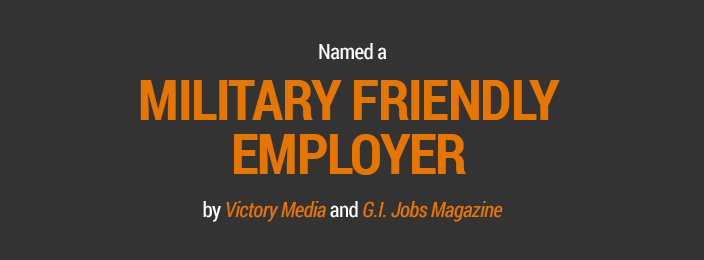

Health, Wellness and Safety
We believe that the health of our business depends on the health and safety of our people. From giving our employees and their families the means to manage their health to making workplaces and commutes safer, we continue to make measurable changes in the lives of our people worldwide.
Healthcare
Our healthcare philosophy — Healthy Together — focuses on helping employees and family members to make informed healthcare decisions and gives them the tools to manage their health and well-being. Employees can also access various health and wellness programs through the healthcare carriers they select. As part of the Healthy Together program, the company provides free, confidential wellness screenings on an annual basis so employees can identify key health risks and work with their primary care physician. Xerox also contracted with various wellness vendors to assist employees in developing action plans to address these risks. We provide easy access to meaningful, timely and relevant information through a single portal, simplifying the experience of choosing and using benefits. Currently, this program is available to employees in the United States.
Employee Safety
Xerox is committed to maintaining a safe work environment for our people. We strive toward a goal of zero workplace injuries, continually decreasing the frequency and severity of injuries every year. In 2016, within our global Technology operations the total recordable injury (TRI) rate decreased by 13% and day away from work case (DAFW) rate decreased by 9% from 2015 levels. In addition, across all of our U.S. operations, the DAFW frequency rate decreased by 6%, which is reflective of success in preventing the more serious injuries. Overall, these improvements have continued since 2012 and are a result of the increased safety awareness and communications to our employees and focused safety management processes within our management teams.
Total Recordable Incident (TRI) Rate
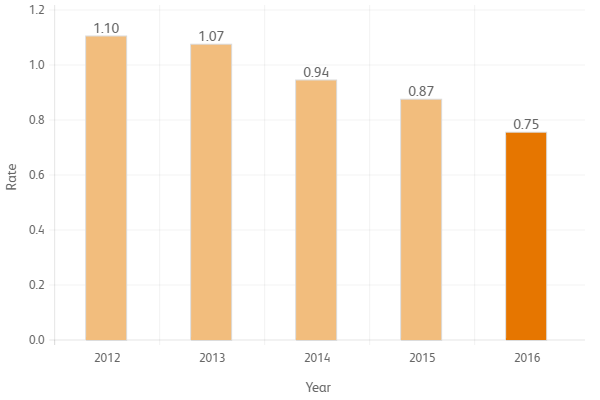
Day Away from Work (DAFW) Rate
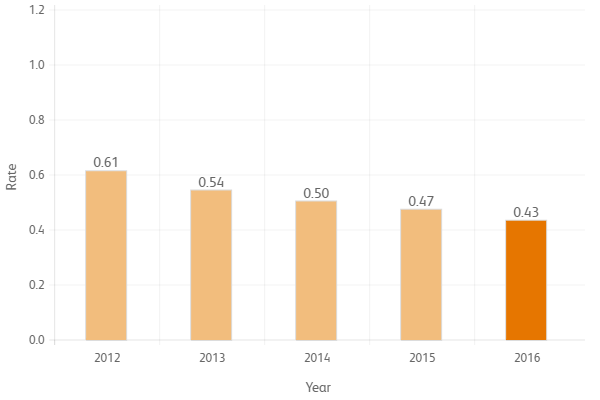
1Data in this section includes Xerox Technology Operations but excludes Global Imaging Services operations.
We have in place a robust, worldwide incident reporting process. This, in combination with workplace safety inspections and hazard analysis, focusses our safety improvement efforts where we can make the most impact on preventing incidents and where populations are most at risk. Employee safety communications take a variety of forms, given the great diversity in our operations and workplaces. A number of methods are used to keep employee safety awareness high, including site specific hazard management, off the job safety information and unique safety concerns that may be endemic to the geography.
Safe Facilities
In order to ensure that all Xerox owned and leased facilities meet our stringent fire and life safety requirements, all real estate transactions are reviewed by the Environment, Health, Safety and Sustainability (EHS&S) organization prior to occupying. Xerox fire safety and life safety requirements have been established and are implemented worldwide, regardless of location, size of the facility or occupancy classification. The focus of the safety review is Life Safety requirements, including safe egress in an emergency, fire and incident prevention, early detection, suppression, occupant notification and prompt emergency response. These reviews also ensure that building specific emergency plans are implemented and updated, and that emergency drills are completed at least on an annual basis.
Audit Program
A well-established internal audit program measures our success in implementing corporate standards, allows us to share best practices and helps us validate regulatory compliance. Audits at major operations are conducted once every three to five years (or sooner, based on performance). The frequency and the focus of the audits are based on the type of operations and the inherent risks associated with the operations.
Xerox audit teams evaluate operations against our internal standards, external regulations and industry guidelines. The teams also evaluate management system performance. With the assistance of the local managers and support staff, action plans are developed and deficiencies corrected. Senior management pays particular attention to situations with the potential to pose a significant risk of environmental damage, serious injury to employees or regulatory non-compliance. Xerox’s audit program is an important mechanism for identifying and correcting performance gaps.
Emergency Preparedness
Because emergencies and disasters often strike without warning, Xerox has implemented an emergency preparedness and response program to help protect the safety of our employees, the surrounding communities and the environment.
To prepare for emergencies, Xerox facilities worldwide have implemented site-specific Emergency Preparedness Plans to assist with the development and execution of appropriate actions in response to local emergencies. Our plans account for common emergencies, such as responding to fires, for weather-related emergencies such as tornadoes and hurricanes, and for more location-specific emergencies, such as responding to earthquakes and radiological emergencies. We also include resources and procedures for first aid medical response in the event of an injury or illness to an employee in our facilities. In our more complex and higher hazard operations, we have Medical Emergency Response Teams (MERTs). These MERT employees are provided with the training and equipment necessary to render quick response to stabilize the medical emergency until more advanced medical support arrives.
Shelter-in-Place procedures have also been implemented to protect our employees from emergency situations that occur outside of our facilities.
In addition to emergency action plans that are established at the local operation level, there are preparedness plans at the corporate level including major incident response, crisis management and pandemic preparedness. These plans have been designed with a central corporate strategy that utilizes an incident command structure. Incident Response Managers are responsible for local/regional tactical and emergency response, coordinating efforts at their respective locations with the Corporate Crisis Management Team and addressing local business operations issues. Response coordination and integration are part of the planning process.
All preparedness plans are regularly tested for effectiveness through management reviews, corporate audits and annual drills. Any discrepancies are noted and corrective actions are implemented. Following an emergency, Business Resumption Plans are put into action to ensure the business operations are quickly restored after the incident.
Motor Vehicle Safety
Motor vehicle safety is a key component of our safety initiatives. We have a company car program that specifies motor vehicle safety requirements for our drivers and accident prevention and reporting processes. Employee driving records are reviewed on a regular basis, and we provide remedial motor vehicle safety training to improve awareness and competency. Motor vehicle accidents are tracked by frequency and type and are reported to the management team.
We also participate on fleet safety benchmark forums to keep up to date on the latest motor vehicle safety practices and technologies and to share Xerox’s best practices with our peers.
The use of cell phones in any company vehicle is restricted. Texting is forbidden while the vehicle is moving. Employees who need to use their phones in the car are instructed to find a safe place to stop.
A comprehensive safety review is conducted on any vehicle model prior to it being accepted as part of the Xerox fleet. We review the safety ratings and crash test results of candidate vehicles and require safety features such as daytime running lights and safety barriers between the driver’s seat and storage areas.
Ergonomics
Because musculoskeletal disorders represent a significant portion of our work-related injuries, we work to minimize the risk factors as a job is designed. We study exposure to ergonomic hazards and raise awareness with employees so they can make improvements to their workstations.
From manufacturing operations to office work, we continue to study the causes and potential remedies for workplace injuries. The following provides some brief highlights
- Manufacturing Operations: Workstation evaluations are conducted in Xerox facilities worldwide for ergonomic hazards based upon risk profile and injury experience. Ergonomic enhancements such as tilt tables, lifts and hoists make it easier for employees to maneuver parts and equipment during assembly.
- Machine Service: Xerox Customer Service Engineers’ (CSEs) exposure to ergonomic hazards has been studied. The findings have helped us select tools and develop procedures to mitigate risk of musculoskeletal disorders. Throughout the equipment design process, evaluations are done to assess risks for our CSEs. The best time to make a modification is when a product is still in the design or early test phases.
- Office Ergonomics: Our largest employee population is office-based. Raising awareness and helping employees make effective workstation changes is critical to minimizing risk for this population. We created computer-based training on ergonomics principles and practices. This method of delivery enables employees to go through needed training programs at a time that minimizes business interruptions.
Asset Protection and Fire Safety
The Xerox Asset Protection and Fire Safety Program provides fire-safe workplaces and limits the potential for losses to Xerox equipment and property from fire, explosion and natural hazards, such as windstorms, snow-loading collapse and floods. The program includes periodic inspections, management reviews of findings, and mitigation planning. Our philosophy is to maintain our higher-valued locations to a “Highly Protected Risk” standard. In addition, locations are reviewed for conformance to Xerox standards and recognized fire, property and life safety standards. We continue to demonstrate excellent loss control performance and benefit from favorable insurance rates and premiums.
Contractor Safety Process
The goal of the Contractor Safety Program is to ensure contracted work conforms to all applicable regulations and Xerox environment, health and safety requirements. Contractors are qualified to the safety and health requirements prior to beginning work at a Xerox location. Contractors are required to submit a job safety plan and workers on U.S. Xerox sites must attend an orientation session. Incidents and injuries are tracked both as feedback and to measure program effectiveness. Although first established in our Webster, New York, operations, this model has been applied successfully in many of our larger locations.
Xerox also functions as a contractor for many Xerox client accounts. We have in place and follow our internal safety standards, and we establish safety plans, deliver specific employee training and maintain management oversight to ensure our operations meet both Xerox and client requirements.
Workplace Health Management
Our workplace health programs include processes for emergency medical response, the characterization of employee fitness for duty, and pre-employment drug testing. In addition, programs are in place for conducting medical exams in connection with safety-sensitive work, and drug testing and immunizations based upon specific work operations and client accounts.
Preventing and Monitoring Workplace Exposures
To protect employees from unsafe exposures to chemicals, noise and radiation, Xerox applies exposure limits to worldwide manufacturing, research and technology service operations based upon the Threshold Limit Values (TLV) recommended by the American Conference of Governmental Industrial Hygienists. These reflect the best advice of a widely respected committee of international experts. However, in jurisdictions where government regulations are more stringent, Xerox meets those regulatory requirements. For some materials — including toners and certain solvents and metals — Xerox has established exposure limits that are more stringent than the TLV or existing regulations and standards.
Using the Xerox Exposure Assessment process industrial hygienist and safety professionals monitor, assess and report workplace exposures. Effective process design, engineering controls, safe job procedures and personal protective equipment are utilized to control exposures and protect employee health. Medical surveillance programs are in place to monitor the health of employees working in operations with specific jobs and hazards (e.g., high noise, organic solvents). Results of those medical exams are reviewed by health care professionals to ensure employee wellness.
Of the workplace exposures monitored in 2016, all were within regulatory limits. When necessary inhalation exposures were controlled through the proper use of personal protective equipment where additional engineering controls were not feasible.
Environment, Health and Safety Project Reviews
We continually make modifications to facilities, work processes and operations to improve efficiency and effectiveness. To ensure these changes meet applicable Xerox safety standards consensus standards and regulatory requirements, projects are reviewed by occupational safety and health professionals. The scope of the project is defined, potential safety and environmental impacts are characterized, and control requirements are established and communicated before the project is initiated. The process serves to inform the engineering and management teams on safety requirements and ensures all project designs have controls integrated into work plans. The process ensures environmental, health and safety requirements are understood and implemented at the beginning of the project.

Talent Management and Workforce Development
Xerox has accomplished something remarkable through the success of our people. At the end of 2016, Xerox separated into two independent companies while simultaneously preparing for the largest launch in our history, an integrated portfolio of 29 new products. Throughout our transformation, Xerox has recognized that our workforce and talent pipeline is critical for results, and is investing accordingly. Talent management and development is crucial for fueling growth, so that Xerox introduces technology and high-impact practices to drive global workforce capability and integrate learning with work.
Xerox is focused on talent and organizational capability.
Our organization and talent planning process includes reviews with the CEO and Management Committee to strategically build our talent pipeline at all levels. We are committed to attracting and developing the best talent, with a focus on diversity and building global capability. Our culture is inclusive, values differences and encourages collaboration to help our people thrive and reach their full potential.
Our Winning Way is to focus on our company culture:- Collaborative, helping each other be better.
- Results-driven, accountable to our customers.
- Empowered, to boldly serve our customers and partners.
- Disciplined, focused on how we think, plan and prioritize.
At Xerox, we’ve also built our culture around learning to develop our people. Rather than simply “delivering training,” we integrate continuous learning into day-to-day work and management practices. Our people have access to an extensive library of resources aligned with our corporate vision, values and business direction. Whether an engineer wants to brush up on writing and editing or an accountant wants to learn what it takes to be a manager, all employees can delve into what interests them and take ownership of their professional development.
We rely on the expertise of our workforce to remain competitive and thrive. For us, talent development is about much more than just delivering training. Key priorities include:
- Fueling leader-led talent management and workforce development, and learning enabled by all managers.
- Fostering ownership of high-performance and career-focused development among employees.
- Integrating learning with work and building a culture of learning.
Career Planning
We want employees to have rewarding careers at all levels, and our learning and development strategy and assets play an important part in making sure they do. Managers and employees work together to build personalized development plans. In addition, we are continually developing our next generation of leaders. When managers recognize an emerging leader on their team, they work with the individual to plan learning, development and job assignments. We identify and accelerate high potentials, as well as provide growth opportunities for all of our people.
Each year, our CEO and senior team discuss individual performance and career paths with those who are poised to assume key management roles. More broadly, Human Resources provides a forum for management to review the future needs of the organization, noting strengths, gaps and strategies to build strong teams for years to come.
Global Learning Innovation for Employees and Partners
All employees plus authorized business partners can access our online, global learning and development environment. We provide resources for many valuable industry and Xerox proprietary certifications. In addition to on-demand virtual learning, we offer face-to-face and virtual instructor-facilitated classes, virtual hands-on labs (vHOLs), online collaboration, user-generated knowledge sharing, customized portals and performance support to our people and partners worldwide. For global reach, our proprietary vHOLs are delivered through a hybrid cloud environment for remote access to the controllers (brains) from our product portfolio. Learning history is tracked online and available to our people to include in their professional portfolio.
On-the-job training is tailored to improving current capabilities, as well as building a foundation for the future. These experiences provide hands-on opportunities to expand and enhance skills. We also encourage employees to participate in advanced degree and certification programs.
We recognize that a strong employee onboarding experience for new hires is important for their success. The experience combines aspects of education about Xerox culture and values with guidance about practical elements like benefits and direct deposit. Targeted learning paths cover topics such as ethics, diversity and inclusion and information security, as well as organization and critical job-specific information.
In 2017 and 2018, we are making additional investments in our talent management and workforce development solutions and technology to fuel innovation for employee and partner success.
Access to Learning Technology
Our global, web-based learning platform supports both formal and informal workforce development needs. Each year, hundreds of thousands of learning assets are accessed by our people. Xerox employees and our authorized partners have round-the-clock availability to a collection of acquired and custom learning resources, including videos, online classes and digitized books. For example, XstreamVideo, our video-sharing platform, contains more than 10,000 videos created by Xerox employees to increase workforce engagement, identify and promote innovative solutions and accelerate adoption of successful business strategies.
Xerox provides curated learning resources targeted to employee and partner population needs, aligned to our workforce development strategy. Our leadership and management development gateway for the enterprise enables the development of leaders at all levels. We provide a carefully selected collection of internal and external learning resources, including videos, courses, books, and audio books for each level of leadership.
We evaluate all learning activities to ensure they contain relevant knowledge, fill skill gaps and promote the development of our employees. We assess the effect on our business through Competency Development Impact studies, which help us understand how our training enhances productivity. We use sophisticated learning analytics capabilities to bring together learning data, insights about our people and business results to generate growth.
Our global learning and development offerings have been recognized by the talent development industry for thought leadership and highlighted in publications such as Chief Learning Officer Magazine, Elearning! Magazine and Training Magazine. We have received industry recognition from Bersin by Deloitte as a “Learning Leader” and won the WhatWorks Award. Our XstreamVideo solution was profiled by CEB (now Gartner) as a leading example of enabling workforce knowledge sharing for growth and development.
Xerox also was recognized as a learning leader through participation in a White House summit focused on the Upskill America initiative. The commitment to our workforce was referenced in the associated White House report.
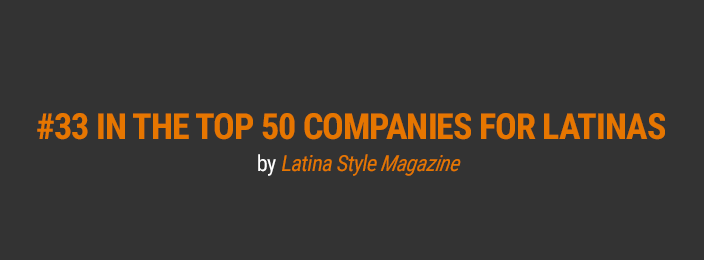

Employee Rights
At Xerox, we protect the fundamental rights of our employees and respect the laws and customs of the countries where we do business.
We recognize our employees are our greatest asset. We continually strive to provide all of our employees with a safe workplace, free from all forms of harassment and discrimination. We have global policies and practices to ensure the highest ethical standards. All of our employees are to be treated fairly and equitably regardless of nationality, religion, ethnic origin, gender, sexual orientation, language or any other protected status.
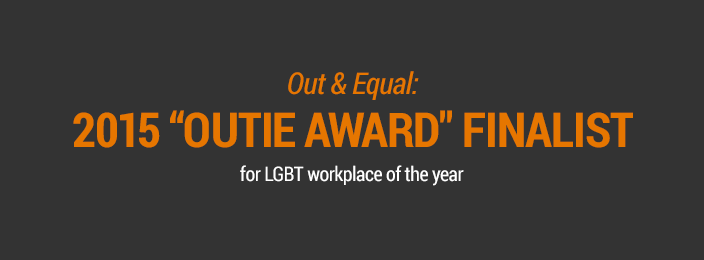
Many Xerox employees are represented by labor unions, trade unions or work councils throughout our global operations. Relationships with these groups are based on applicable laws in each country.
- In Europe, we recognize a variety of work councils and trade unions as established under European labor laws to meet requirements for information and consultation for the protection of employee rights. In Europe, approximately 61 percent are covered.
- In the U.S. and Canada, we maintain a cooperative and effective relationship with five unions that represent nearly 1,500 employees (1.3 percent) in eight locations: Workers United, the International Union of Operating Engineers (IUOE), Communications Workers of America (CWA), the United Brotherhood of Carpenters, and the Service Employees International Union (SEIU), through a Cooperative Agreement with Workers United.
Operational Changes to Collective Agreements
In the U.S., the notification periods required for operational changes are specified in collective bargaining agreements and vary depending on the location and type of change. As a default, each agreement contains a “duration clause,” which provides that if either party desires to make changes to the agreement before its termination, written notice must be given 60 days prior to the expiration date.
Grievance Processes
Each collective bargaining agreement in the U.S. includes a provision allowing for unions to file grievances. The number of steps in the grievance process, however, depends on each collective bargaining agreement, with the final step being binding arbitration.

Customer Satisfaction
Our customer experience is the key to our success. By listening to customers and enhancing our work based on their input, we are able to develop both meaningful relationships and quantifiable analytics to continuously improve our programs and process.
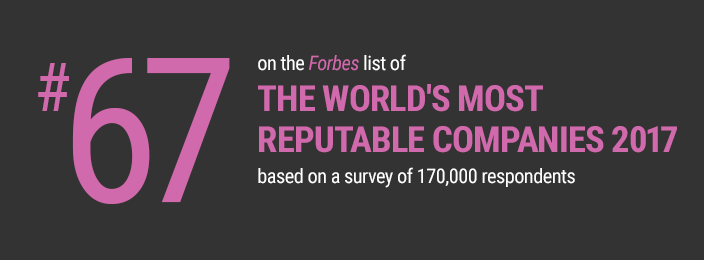
Relationship Surveys
Through relationship surveys, we ask our customers and partners about their experiences working with Xerox. The surveys identify levels of customer satisfaction with our products, services and support. The feedback helps us determine which improvements are most likely to bolster customer value and help differentiate us from the competition. We follow a rigorous management process to ensure customer feedback is addressed at multiple levels with full accountability by the business.
Transactional Surveys
We employ transactional surveys to monitor satisfaction with our products and services. These surveys help us to diagnose root causes of complex issues. Transactional surveys also tell us if we have achieved the objectives of our service-level agreements and if our customers are satisfied with individual interactions.
We offer a survey on our Support & Driver website that identifies customer satisfaction and purpose for visiting the site, as well as gathering verbatim feedback. The participation level is less than 1% of the site visitors but we can extract from the data areas of opportunities for the customer experience on our Support site. We are in the planning cycle to update the user experience to increase the customer’s ability to locate the plethora of content available.
Tracking Customer Satisfaction
Our global customer experience platform includes survey features and functions, as well as advanced analytics capabilities, which drive progress in our customer experience program through better insights and closed-loop follow-up. In addition, the centralized platform provides a basis for governance and measurement process oversight.
Social Media
We have several customer support social media offerings, enhancing the online support experience and providing new ways for customers to engage with Xerox Support in the U.S.
- The Xerox Support Community offers a peer-to-peer forum where customers and other industry professionals can collaborate about Xerox equipment and software. Customers may also access this online community with their mobile devices, enhancing their support experience with social networking on the go.
- The At Your Service blog provides customers with a light-hearted and insightful look into equipment features and services.
- Xerox’s latest support news is shared with followers of the @XeroxSupport Twitter handle. Customers may also engage with us for product information and technical assistance.
- The Xerox Support YouTube site is the most recent addition. It contains product videos to help with device questions and edification.
We actively listen to, and engage in, conversations generated by consumers in public forums and social media. This enables us to better understand consumers’ experiences with our products and processes and their perceptions of our brand. Social media listening focuses on individual, publicly available conversations and provides insight into the impact of our products, processes, people, innovations and communications.
We frequently see an increase in likes and retweets of our blog articles as customers find them very helpful. As mentioned earlier, we listen to our customers and have begun a design effort to improve the customer experience on our Support website. Some enhancements include, as mentioned above, the new YouTube Xerox Support site, the ability to see the service status. More enhancements will be integrated on the site so keep checking to see what’s new.
Xerox Corporate Focus Executive Program
The Xerox Corporate Focus Executive Program fosters relationships with our top corporate accounts. A senior Xerox executive is assigned to collaborate with our account team to understand customer requirements, establish and implement strategic account plans, marshal resources to eliminate customer concerns and build strong, productive customer partnerships that enhance customer satisfaction and accelerate revenue growth.
Executive Customer Care Program
For more than 20 years, our corporate officers have volunteered in a rotation as “Customer Care Officer of the Day.” The program provides customers the opportunity to share their concerns with our senior leaders. It also gives our executives a unique opportunity to hear from a broad range of customers first-hand.
The officer, supported by a team of dedicated professional problem solvers, assumes personal responsibility for assisting with any and all customer concerns. The officer of the day has three main priorities: listen to the customer, address the customer’s problem and take the necessary action to fix the underlying cause. It is a time-honored commitment to our customer focus.

Innovative Solutions
Innovation is more than a buzzword at Xerox. It’s in our DNA. We are constantly thinking about how we can simplify work, deliver more personalized experiences, and improve productivity through new technologies that connect the physical and digital worlds. Our mission and heritage to help our customers be more successful has led us on a fascinating journey in innovating how the world communicates, connects, and works.
Workplace Assistants and Apps
Xerox’s line of multi-function devices composed of the Versalink and Altalink product families contain so much more intelligence that we call them “workplace assistants.” Not only are they secure and reliable, but they also come with apps that enable a high degree of personalization and automated workflows. Similar to how we use apps on our smartphones, Xerox’s ConnectKey app ecosystem automates frequent actions such as scan to Dropbox, or translating a document into another language through the EZ Translator app. Other apps are targeted at specific industries such as a secure document transfer app for the healthcare industry to send patient information with a much higher degree of security than faxing. We have also given our partners the ability to create their own custom apps for their customers.
Users easily access these apps from the multi-touch displays on the Versalink and Altalink products, in a consistent way across the full range. We invested significant time in user research and iterative design to make sure that the user interface was easy to use. As part of our innovation process, we use ethnography, or the observation of people in their natural work environments, to gain deeper insights into user needs and pain points than what can be normally obtained through traditional market research techniques.
Customer-led Innovation
At Xerox, we view our customers as partners in innovation. Going beyond user studies, we engage our customers in innovation workshops to explore the future of the customer’s business and identify new opportunities to apply our technologies to solve problems or create new products and services. For example, we have a deep competency in printed and hybrid electronics that enable us to create new types of low-cost sensors and smart tags that enable interactive and smart packaging. We engage customers and partners across a range of industries to explore applications ranging from personalized packages to supply chain monitoring, followed by validating the value proposition before moving to commercialization. We are using this collaborative, agile innovation approach to explore new adjacent markets in digital printing from digital packaging to industrial printing.
Another focus area of innovation is in digital transformation to enable the agile workplace of the future. Along with our customers, we are seeing rapid changes in consumer and employee expectations due to digital technologies that have transformed every industry. Given the high degree of uncertainty in our world, the most valuable trait of any company going forward will be agility – not only to respond quickly to changes but also to create new markets and business models.
Building upon our deep domain expertise and analytical insights from working with our customers in managed print services and workflow automation, we are investing in innovation to help our customers become more agile by going beyond the automation of predictable workflows in back-office processes to delivering automation and intelligent assistance to knowledge workers in their more variable work. Similar to our innovation efforts around digital printing, we are using a highly collaborative co-innovation process with our customers to ensure that our new offerings in this space are both useful and easy to use.

Safe Services and Products
Safety always has been a cornerstone of our work in product development. Our comprehensive Product Safety Plan details our health and safety requirements, and all Xerox imaging equipment is assessed for conformance to these standards. We evaluate all potential health and safety hazards, including the ways different hazards may interact. Furthermore, we take a conservative position on the potential health risks to our employees and customers, always meeting or exceeding government safety regulations. We have robust processes for tracking regulatory violations and noncompliance with voluntary codes and labels.
Customers are encouraged to review product safety information and understand the environmental profile of our devices. User guides contain information regarding safe use as well as any applicable hazard warnings. Our Product Safety Data Sheets (PSDS) offer environmental, health and safety information for each Xerox device. Safety Data Sheets (SDS) identify hazards associated with specific materials and describe how they can be safely handled, used and stored. Both our SDS and product labeling have been updated to meet the requirements of the Globally Harmonized System of Classification and Labeling of Chemicals (GHS) as implemented through regulations in our various markets. Customers can access PSDS and SDS in multiple languages at www.xerox.com/environment.
Materials
We have made a long-term commitment to eliminate the use of persistent, bioaccumulative and toxic materials throughout our supply chain by applying strict internal standards and tightly managing chemicals in our supply chain. Our supplier requirements periodically are updated as regulations change and new information becomes available. All new product designs refer to these requirements, and suppliers are expected to verify their compliance with them. Learn more at www.xerox.com/environment.
Toxicologists conduct a comprehensive assessment of new materials in our products to ensure conformance with applicable global registration, hazard communication and waste handling and disposal requirements. As a result of our stringent requirements, Xerox toners and printing products are non-carcinogenic and non-mutagenic. In addition, these products do not: cause adverse developmental or reproductive effects; pose a toxicity hazard to humans or aquatic species; cause a permanent adverse impact to the skin, eyes or respiratory system; or have the potential to generate federally regulated hazardous waste. We were the first in our industry to evaluate the health effects of toner and have done so for over 30 years.
Our requirements for minimizing toxic materials govern our product design and materials selection. We have re-engineered or eliminated processes to dramatically reduce the use of toxics and heavy metals and have made substantial progress in eliminating the use of mercury. Mercury-containing lamps that scan images and backlight user displays are being phased out as alternatives become available.
Our safety and supplier processes enable us to meet global regulations governing chemical use. Since 2007, Xerox’s newly launched products have been designed to meet the European Restriction of Hazardous Substances (RoHS) requirements in all markets. However, where regulations allow, some products may contain parts with small amounts of RoHS substances in order to avoid premature disposal of existing parts that have usable life. Similar types of legislation continue to be implemented in many other market regions. Through our proactive regulatory tracking process, we expect to be fully compliant with all aspects of these regulations as the provisions become effective and applicable. In 2016, we reported no issues with noncompliance to RoHS.
Ergonomic Design
We consider the ergonomic aspects of our products from both a user and service standpoint to ensure inclusion and operability. Our design teams take into account all points of human interface, including a product’s height, curves and placement of touch screens and paper trays. Customers work directly with the designers in our labs to test and continually improve the usability of new products.
Machine Emissions
Consistent with the world’s most stringent ecolabels, we design products to control emissions of chemicals and noise. As a result, current products have achieved chemical emission levels that are well below global regulatory requirements — often at or near the detection limit of our measurement equipment — and are considered to have a negligible impact on customers’ work environments. We publish emissions data for all of our products on our PSDS.
Toner Study
Xerox concluded two comprehensive investigations that lasted more than three decades on the health risks of inhaling xerographic toner. These studies included assessments of the health of current employees and the causes of death for people who worked for the company between 1960 and 1982. The analyses demonstrated that the health and mortality patterns of Xerox employees were consistent with a healthy working population and, in fact, our employees had a lower rate of disease (i.e., were healthier) than the general population. In October 2010, the mortality study was published in the peer-reviewed Journal of Occupational and Environmental Medicine.

Data Privacy
At Xerox, we take the utmost care to prevent the unauthorized use or disclosure of information our customers, employees and vendors provide. Our Office of General Counsel works closely, and internationally, with data privacy experts in our Information Management, Information Technology, Ethics, Risk Management, Corporate Security, Human Resources and Product Development groups to develop, maintain and enforce robust privacy and information security policies and practices at Xerox.
Our success depends directly on the confidence our customers have in the capability, performance and security of our products and services. To ensure this, we have policies and controls in place to provide privacy protection for personally identifiable information maintained by Xerox. Our policies follow industry best practices, including the use of encryption technology and data loss protection software.

Additionally, we research and monitor the data-protection laws in the countries where we do business to ensure that we comply with applicable requirements. For example, we comply with the following international laws where applicable:
- Canadian Personal Information Protection and Electronic Documents Act
- European Union Directive 95/46/EC on the protection of personal data and upcoming General Data Protection Regulation
- Applicable U.S. federal and state privacy laws
Xerox policies are enforced through a combination of technical and manual safeguards on our systems and facilities, as well as through violations against employees. Annual training regarding ethics, privacy and security is required of all employees. Additional specialized privacy training is required for certain roles, and numerous privacy training programs are available for employees to take on their own initiative. An Ethics hotline (available publicly and intra-company) and an Incident Response hotline (available intra-company) are for reporting alleged violations for investigation by dedicated, cross-disciplinary teams.
Read more about Xerox privacy policies.

Cybersecurity
Cyber attacks pose a threat to our customers, our employees, and our partners — in short, our very business. That’s why we’re always on the alert, working to stop hackers who would deface our website or gain access to sensitive information. We have comprehensive plans to deal with sophisticated threats, such as organized cyber criminals, cyber-espionage groups and even state-sponsored intrusion.
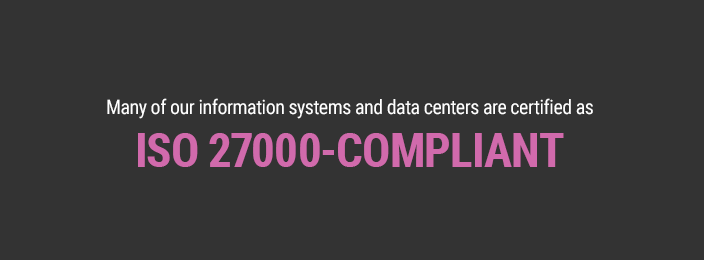
Our cybersecurity strategy has five major components:
Data-centric protection
We use data segregation, encryption and data-loss-prevention technologies to ensure safe and secure processing and sharing of critical information. In addition, all data is classified according to its sensitivity. This data classification process enables us to understand the relative importance of securing each dataset and to make an informed business decision about the level and allocation of resources required.
Standards-based management
By following industry-standard cybersecurity guidelines, we ensure our processes are repeatable, predictable and easily understandable.
Of the numerous cybersecurity control frameworks, we chose to implement both ISO 27000 and the National Institute of Standards & Technology Cybersecurity Framework:
- ISO 27000 Information Security Management System — this international standard defines “requirements for establishing, implementing, maintaining and continually improving an information security management system.” We incorporate ISO 27000 as a normal part of our business processes. Independent auditors have certified many of our systems and data centers as ISO 27000-compliant.
- National Institute of Standards & Technology Cybersecurity Framework — created through collaboration between industry and government, this framework protects networks and infrastructure. The prioritized, flexible and scalable approach helps us manage cybersecurity-related risk in a cost-effective manner. This framework already has proven useful to predict, detect, disrupt or deter, respond and recover valuable data.
Capability maturity assessments performed by independent parties and benchmarking with other companies find our implementation to be sound, relevant and aligned with industry standards.
Continuous assessment
We utilize a combination of evidence-based assessments, vulnerability scanning and penetration tests to validate that our data protection is effective and to ensure controls are operating properly on an ongoing basis.
Cybersecurity incident response
We have emergency response procedures in place throughout our business. If we were to encounter an attempted cybersecurity attack, we would take the following actions:
- Identify whom to notify internally
- Establish a multidiscipline virtual response team
- Implement monitoring protocols and egress prevention
- Estimate the extent of the compromise
- Coordinate with legal counsel and insurance carriers
- If necessary, notify legal authorities
These steps provide a general framework; business units have detailed plans tailored to their needs. We perform tests to assess our operational and managerial readiness on a regular basis.
Cyber risk management
Recent high-profile breaches in the media demonstrate that any organization can suffer a cyber attack. When this occurs, there may be costly consequences — such as regulatory fines or purchasing identity-theft monitoring for affected parties. Many companies invest in Errors & Omissions or Cyber Liability Insurance to mitigate this risk.
Many insurance carriers and underwriters assess the level of risk when determining insurance rates. Xerox, as well as other companies, has received reduced premiums and/or more favorable policy limits by implementing effective cybersecurity management.
Cybersecurity is not solely the responsibility of the IT Department. By collaborating across our company, we effectively manage risk, reduce the likelihood, limit the impact of exposure and enable quick recovery from any attack on our infrastructure, networks and systems.

Accessibility and Mobility
In the print industry, Xerox was the first in many ways, such as designing products that were accessible as well as easy to operate by all users, including people with disabilities. Our dedicated team of design professionals upholds that commitment for the products and services we provide.
For example, to make our systems accessible for people with disabilities, Xerox has developed a number of accessories, such as angled consoles, Braille console labels, magnifying lenses for visually impaired users and “start print” foot switches. We design software for embedded web servers and print drivers to be compatible with screen readers to enable people with visual impairments to operate them. On an ongoing basis, we strive to improve our performance in the area of accessibility and adapt products so that ease of use is not compromised.
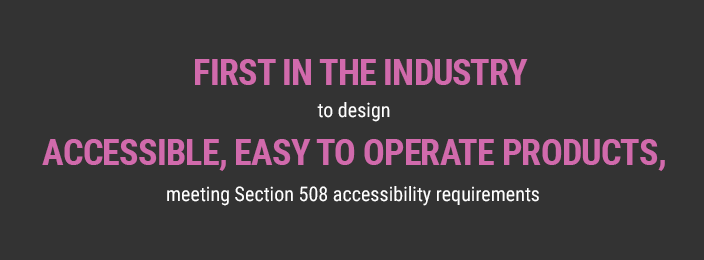
Xerox stepped forward in 1998 when Congress amended Section 508 of the U.S. Rehabilitation Act of 1973. We developed solutions to adapt our technology for use by government workers who are disabled. We also established a rigorous process to evaluate our products’ compliance to meet Section 508 accessibility requirements. In the near future, Section 508 rules will change and new input is expected to come from the European Union and the Far East. Learn more about our efforts pertaining to Section 508 accessibility requirements.
Our focus on increased mobility has expanded with the anywhere, always-on enterprise. We’re enabling enterprises to manage a complex infrastructure as employees are bringing their own devices to work and demanding the same seamless, secure ability to find, use and print business documents. Xerox technology — such as mobile print solutions is enhancing easy access to information.

Governance
The Xerox Board of Directors represents the interests of our shareholders in the operation of a successful business, including optimizing long-term financial returns. The Board is responsible for determining that Xerox is managed in such a way to ensure this result, which also will assure the company's vitality for its customers, employees and the other individuals and organizations that depend on it. This function is active, not passive. The Board has the duty to ensure that in good times, as well as difficult ones, management is capably executing its responsibilities.
The Board's responsibility is to regularly monitor the effectiveness of management policies and decisions, including the creation and execution of its strategies. The Board is also responsible for monitoring the establishment and enforcement of procedures designed to ensure that Xerox's management and employees operate in a legal and ethically responsible manner.
The Corporate Governance Committee of the Board of Directors has oversight of corporate social responsibility (CSR). The Committee reviews significant shareholder relations issues and environmental and corporate social responsibility matters, and ensures that our actions align with our core values and priorities for citizenship. To that end, members of the Board have considered an outline of this report and support its content. See Corporate Social Responsibility Governance.
Read more about Corporate Governance at www.xerox.com/governance.
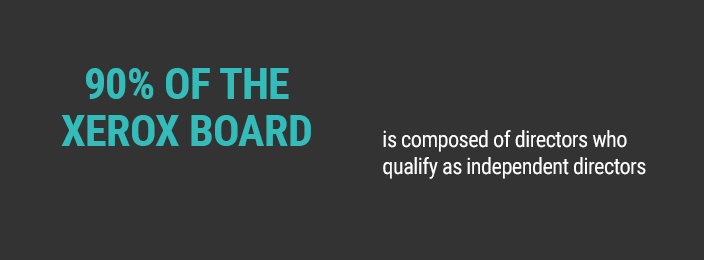
Independence of the Board
The Board comprises a substantial majority of Directors who qualify as independent Directors. The Board will make a determination as to each Director’s independence, broadly considering all relevant facts and circumstances. However, the Board has adopted categorical standards to assist it in making the independence determination. Under these categorical standards, a Director shall be presumed not to have a material relationship with Xerox or any of its consolidated subsidiaries, and thus be presumed to be independent.
Board Membership Criteria
The ultimate responsibility for the selection of new Directors resides with the Board. The identification, screening and recommendation process has been delegated to the Corporate Governance Committee, which reviews candidates for election as Directors and annually recommends a slate of Directors for approval by the Board and election by the shareholders.
The Board requires that a substantial majority of the Board should consist of independent Directors. Any management representation should be limited to top Xerox management. Nominees for Director are selected on the basis of, among other things, broad perspective, integrity, independence of judgment, experience, expertise, diversity, ability to make independent analytical inquiries, understanding of Xerox’s business environment and willingness to devote adequate time and effort to Board responsibilities. Members should represent a predominance of business backgrounds and bring a variety of experiences and perspectives to the Board.
For more information, visit:
https://www.xerox.com/en-us/about/corporate-citizenship/guidelines

Ethics and Integrity
Our commitment to business ethics represents more than a declaration to do the right thing. It has become an integral part of the way we do business. In 2001, we established a Business Ethics and Compliance Program to make sure Xerox employees and all those working on behalf of the company follow the highest ethical standards. The program aims to prevent, detect and address potential violations of Xerox’s Code of Business Ethics and its policies, laws and regulations.
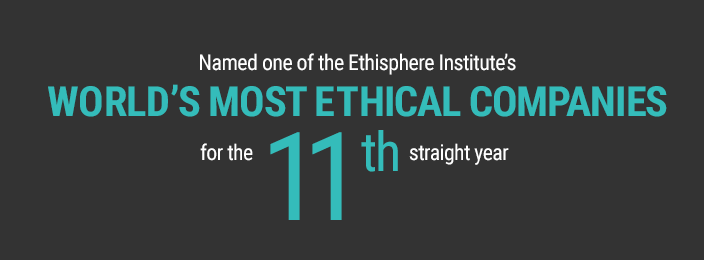
Business Ethics and Compliance Program
To oversee all ethics-related activities, Xerox established a Chief Ethics Officer who reports to senior management and the Board of Directors. In addition, the Xerox Ethics and Compliance Governance Board was formed to integrate the Business Ethics and Compliance Program into worldwide business operations. The Ethics and Compliance Governance Board represents business and corporate organizations within Xerox and its subsidiaries, and participates in quarterly meetings chaired by our Business Ethics Office.
Board members have the following duties within their area of responsibility:
- Establish a business ethics and compliance network.
- Implement ethics training and education programs.
- Ensure consistent enforcement of discipline policy.
- Ensure organization-specific policies are consistent with existing laws, the Xerox Code of Business Conduct and other company policies.
- Oversee and make recommendations for changes to Xerox policies, including the Business Ethics and Compliance Office Charter.
- Evaluate ethics and business conduct issues and trends to proactively address potential problems.
- Attest annually that organizational ethics and compliance programs are effective and all employees have completed required business conduct training and acknowledgements.
Code of Business Conduct
Our Code of Business Conduct serves as the foundation of our Business Ethics and Compliance Program. It embodies and reinforces our commitment to integrity and helps our people resolve ethics and compliance concerns consistent with our core values and legal and policy controls. Our Code of Business Conduct is available in 18 languages and accessible on our internal and external websites. The Code is aligned to our core values and covers policies and guidance on key topics, including sales and marketing activities, controllership, insider trading, bribery, non-discriminatory employment practices, privacy rights, human rights and environmental stewardship. It also specifies employees’ obligations to report suspected ethical violations and reinforces our strong “no retaliation policy.”
In addition to our global Code of Business Conduct, we have a supplemental code of conduct for finance employees and a specific code of conduct for the Board of Directors. As a member of the Electronic Industry Citizenship Coalition, Xerox uses the Electronic Industry Code of Conduct (EICC) as our supplier code of conduct.
Key Components
At the start of every year, our CEO distributes a message on business ethics to employees. All employees must complete ethics training annually and acknowledge that they have read the Code of Business Conduct. At the same time, officers and senior managers must certify that they are in compliance with our Code of Business Conduct and have processes in place to support the company’s Business Ethics and Compliance Program.
We promote awareness of our Business Ethics and Compliance Program on our Ethics & Policies website and our intranet. Periodically, we send ethics surveys to employees in several countries to gauge the state of the company’s ethical culture and help us focus on areas in need of improvement.
We provide a variety of channels for employees, suppliers and customers to report suspected ethical violations, including phone, web, email and postal mail. Our Ethics Helpline is available globally 24 hours a day, seven days a week, in multiple languages, via toll-free telephone numbers (see www.xerox.com/ethics) and our web reporting tool (www.xeroxethicshelpline.com) also supports multiple languages. We have contracted with an independent third party that specializes in helpline reporting with immediate electronic transfer of all reports to our Business Ethics and Compliance Office for case management.
For some cases, the Business Ethics and Compliance Office provides guidance and takes immediate action; for others, including allegations of wrongdoing, an ethics investigation is required. The Office follows a formal, consistent method for assessing alleged violations and complaints and directs them to the appropriate functional areas for investigation, resolution and closure. Our Business Ethics and Compliance Office Charter includes a “Worldwide Assignment of Responsibility Matrix for Handling Potential Ethics Violations and Associated Penalty Guidelines.” This tool includes a wide range of possible ethics and compliance violations within each category of our Code of Business Conduct. Ethics allegation matters that are substantiated, in whole or in part, result in some sort of disciplinary action — either counseling, training, warning letter, job reassignment, financial penalty or, in some cases, dismissal from the company. In addition to disciplinary action, resolution of many cases also may involve changes in processes or policies to prevent future occurrences.
Our Business Ethics and Compliance Office tracks all cases from initial reporting to closure. Additionally, the Office reports quarterly case activity and trends to the Business Ethics and Compliance Governance Board and the Audit Committee of the Board of Directors, including the number of matters reported, case categories, outcomes and disciplinary action.
See www.xerox.com/ethics for additional information regarding Xerox’s Business Ethics and Compliance Program.
Matters Reported to Business Ethics and Compliance Office
| Matters Reported | 2012 | 2013 | 2014 | 2015 | 2016 |
|---|---|---|---|---|---|
| Human resources | 54% | 56% | 53% | 60% | 61% |
| Internal policy violations | 7% | 7% | 5% | 3% | 3% |
| Fraud | 4% | 5% | 7% | 5% | 5% |
| Misappropriation of assets | 2% | 3% | 3% | 3% | 3% |
| External relationships (customers, agents, vendors, etc.) |
7% | 6% | 5% | 5% | 5% |
| Conflict of interest | 4% | 4% | 4% | 3% | 3% |
| Confidential information | 2% | 2% | 2% | 2% | 2% |
| Accounting and financial reporting | 2% | 2% | 4% | 2% | 2% |
| Policy inquiries | 7% | 6% | 6% | 7% | 8% |
| Other | 10% | 9% | 9% | 10% | 7% |
Anti-Corruption
Xerox operates an active and comprehensive anti-bribery and anti-corruption program that complies with all related laws and regulations. We have developed a global compliance program, supported by policy and training, to ensure zero tolerance for the giving or offering of a bribe of any amount or value, including so-called “facilitation payments.” The program also includes risk assessment of third-party intermediaries, followed by the application of appropriate due diligence, training and certification prior to engagement. We are committed to enhancing the program continually.
Banknote Anti-Counterfeiting
The risk of banknote counterfeiting has increased with the quality of digital imaging tools and color printing technology. In response, we have joined other companies, the U.S. Secret Service and the Central Bank Counterfeit Deterrence Group (a consortium of 32 central banks and note printing authorities) to assess threats to currency and support the use of anti-counterfeiting technologies. Technology to deter the use of digital equipment for counterfeiting banknotes is being standardized. Xerox sales and service employees are trained to respond to inquiries about our anti-counterfeiting efforts.
Black Market Supplies
Every year, the global imaging industry — and the customers who use its products and services — suffer the loss of millions of dollars due to counterfeiting or theft of supplies. We continually remind our customers that counterfeit supplies can result in poor equipment performance, low supply yields, inferior print quality, toner leakage, increased failure rates and equipment downtime — all of which can cost time and money. To avoid this risk, we advise our customers to purchase solely from Xerox Authorized Resellers. We work closely with our Procurement Department to call attention to “blending” of supplies — the mixing of counterfeit with original materials to achieve lower pricing and make detection of counterfeit items more difficult.
Theft of customer supplies represents an increasingly costly problem for Xerox and its customers. It is difficult to prevent because web-based sales channels make it easy to purchase stolen products and then to sell them. We continue to invest in technology and resources to bring the problem to the attention of customers and to identify their obligation to maintain the security of supplies (contracted and purchases). Through engagement and support of our customers and local law enforcement agencies, we also provide tracing of stolen goods to identify and close the sources of theft.
Xerox is leading the charge against counterfeiting and other black-market activities, independently and in collaboration with other original equipment manufacturers (OEMs). To combat acts of piracy and fraud, our security team routinely works with the U.S. Federal Bureau of Investigation, attorneys general offices, the Postal Inspector’s office and other global law enforcement agencies. In addition, we are a member of the Imaging Supplies Coalition (ISC), a trade association that serves to heighten customer awareness of black-market activities. Wholesalers, dealers and consumers may submit questionable goods to the ISC for authentication by the manufacturer. For more information, visit www.isc-inc.org.

Human Rights
As a truly global enterprise, we understand that we have an obligation to play a larger role in the world. We lead by example, encouraging respect for human rights in our own company and through our business relationships. Every employee engagement, partner affiliation and customer touchpoint represents an opportunity for Xerox to exercise its commitment to human rights.
Our Code of Business Conduct supports the principles of the United Nations Universal Declaration of Human Rights. We make sure those standards are followed in our labor relations and employment practices, relationships with suppliers, risk management, internal audit systems and our approach to building business in emerging markets. Each year, Xerox employees are required to take refresher training and acknowledge their conformance with the Xerox Code of Conduct.
Xerox is a member of the Electronic Industry Citizenship Coalition (EICC), an organization that promotes a standards-based process for monitoring the social responsibility of suppliers. Through the EICC, we further our commitment to human rights in such areas as labor, health, safety and environmental activity. See Supplier Relations for more information.
We also manage a comprehensive data privacy program. We take utmost care to preserve protection of customer and employee personally identifiable information. See Data Privacy for more.
A corporate-wide global policy letter serves as the foundation of our position on human rights.
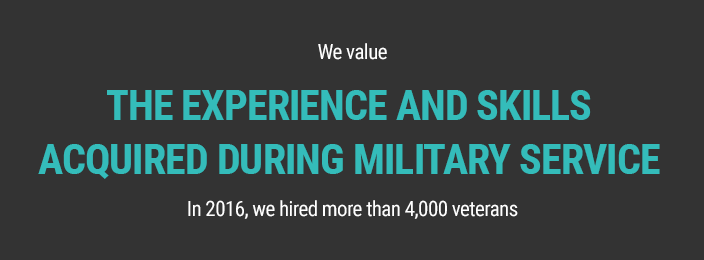

Supplier Relations
Social responsibility is ingrained in our business model starting at the very beginning — with our supply chain. As a major organization spending approximately $7 billion per year to support our operations, we feel an obligation to actively manage our global supplier base and ensure these critical partners meet our high ethical standards.
As a part of the purchasing process, we assess the quality, cost, delivery and sustainability of all products and services. Across North America, Europe and Asia, Xerox employees source, contract and purchase everything from transportation to technology. Our local presence in these regions encourages direct interaction with our suppliers.
Our approach is to source from suppliers that are geographically located near our purchasing, manufacturing and distribution operations that we regard as “local suppliers.” In the U.S. and Canada, approximately 86 percent of spend is from local suppliers. In Europe, it is 84 percent and 51 percent in Asia.

Xerox Technology FY 2016 Supplier Spend - $5.25 Billion
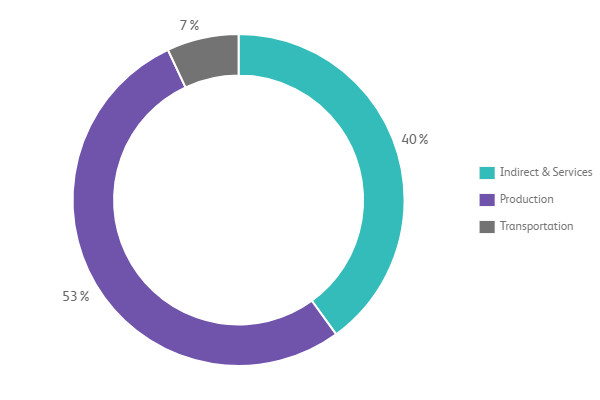
Xerox Services FY 2016 Supplier Spend - $2.02 Billion
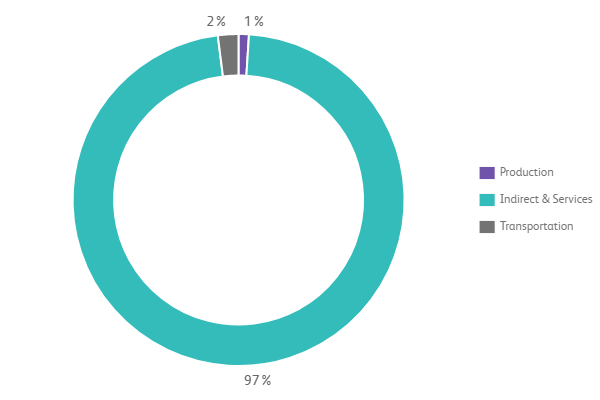
Technology FY 2016 Spend by Region
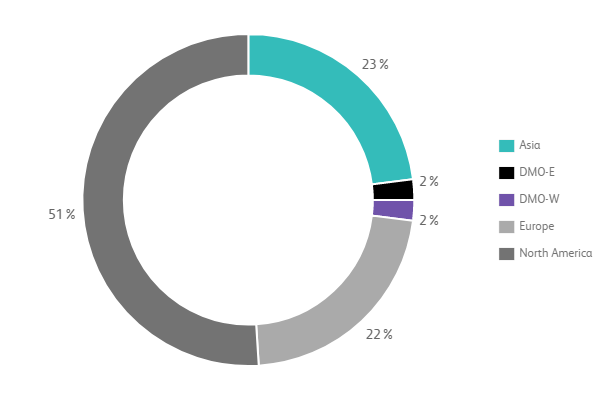
Services FY 2016 Spend by Region
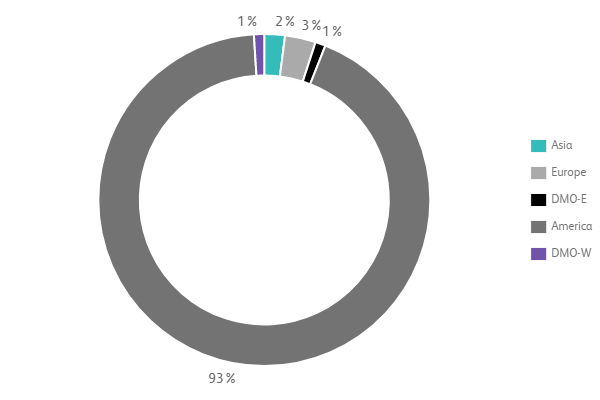
* DMO – Developing Markets Operations
In 2016, we sourced the vast majority of our needs from the partners listed below.
| Name of Company | Sustainability Site | Sustainability Report |
|---|---|---|
| Fuji Xerox Co. Ltd. | Fuji Xerox Sustainability | 2016 Sustainability Report |
| Flextronics International | Flextronics Social Responsibility | 2017 Global Citizenship Report |
| Samsung Electronics | Samsung Sustainability | 2016 Sustainability Report |
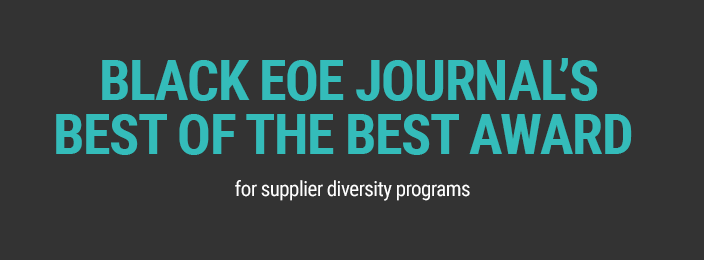
Supplier Code of Conduct
Our Supplier Code of Conduct and Compliance Program are the primary tools we use to ensure ethical management in our supply chain.
In 2006, we began working with the Electronic Industry Citizenship Coalition (EICC), whose Code of Conduct sets industry standards on social, environmental and ethical issues in the electronics industry supply chain. In 2008, we became an official member of the EICC. We have adopted the EICC Code of Conduct as our Supplier Code of Conduct, and Xerox serves on the EICC Senior Executive Advisory Council.
We continually reinforce the importance of the Supplier Code of Conduct to our supplier base. We incorporate standards from the Supplier Code of Conduct in purchase agreements. We run a risk assessment and require suppliers to participate in the Xerox Compliance Program. Finally, we send an annual communication to our entire supplier base.
The Xerox Compliance Program upholds our Supplier Code of Conduct and our Supply Chain Transparency Statement. The following are components of the Compliance Program:
- All suppliers are subject to an initial risk assessment, which is based on objective criteria.
- Suppliers flagged in the risk assessment — in addition to suppliers deemed critical to our supply chain — are required to complete detailed questionnaires. In addition to highlighting areas of potential concern, these questionnaires clarify our expectations and reinforce the importance of these topics.
- Based on the assessments and questionnaires, we annually select suppliers for compliance review or audit.
- Trained Xerox personnel conduct audits on-site. Audits and compliance reviews both follow the EICC Audit format, which addresses labor practices, freedom of association, child labor and forced labor, human rights, environmental concerns and more.
- During the audit, we classify areas of nonconformance as “priority,” “major,” “minor” or “for review.” We provide each supplier with a written performance assessment.
Business Performance and Reviews
We regularly review suppliers’ performance against expectations and contractual requirements, prioritizing based on business risk and revenue impact. Suppliers with the highest business risk and potential revenue impact are considered “critical” and are required to maintain an acceptable business resumption plan. We inspect these plans on a regular basis.
Revenue risk criteria include:
- The amount of revenue at risk
- The total dollar amount spent
- The length of time before the machine or parts in the field impact recovery time
- The total spend across Xerox product families
Business risk criteria include:
- Whether a supplier is a single source
- Length of time to resume normal business practice after an adverse event
- Percent of business revenue Xerox represents
- The stability of the industry
- Propensity for natural disasters or political turmoil
- Supplier’s performance in a financial assessment
In 2016, Xerox conducted 54 audits and 21 compliance reviews, which represented more than 75 percent of Xerox Direct/Technology Spend. Since the year 2010, we have audited more than 100 suppliers or 300 compliance reviews and audits, with 60 percent of suppliers showing improvement on labor, ethics, health & safety and environment control elements of their operations.
Conflict Minerals
We are committed to improving mining conditions associated with mining in conflict regions.
- Xerox has an extensive Conflict Minerals Policy.
- We publish our Due Diligence activities in our yearly Conflict Minerals Report.
- Our internal processes incorporate the Organisation for Economic Co-operation and Development (OECD) framework for Responsible Supply Chains of Minerals from Conflict-Affected and High-Risk Areas.
- We are an active member of EICC and the Conflict-Free Sourcing Initiative (CFSI).
- We use the CFSI reporting template to survey our supply base about conflict-free mineral usage.
- We support the Conflict Free Smelter Program (CFSP), which independently audits smelters and refiners to determine if they have a system in place to assure sourcing of conflict-free minerals.
- Our supplier contract template includes a specific reference to conflict-free minerals to ensure responsible sourcing in our supply chain.
- We filed Form SD with the SEC on May 15, 2017.
Supply Chain Security
The Xerox brand is known worldwide for delivering industry-leading document technology, services and solutions. Counterfeit parts and supplies misrepresent the quality of our products and pose a serious threat to our reputation.
- We have rigorous processes to identify and eliminate counterfeit supplies and components from our supply chain. Read our Anti-Counterfeiting Statement. Xerox genuine supplies also are microchip (CRUM) protected for use with Xerox products.
- Whenever possible, we source from a base of trusted and established suppliers (and their authorized distributors) who have been through our comprehensive vetting system.
- We also always seek warranties guaranteeing authenticity and quality; among other benefits, this practice mitigates obsolescence.
- If suppliers wish to substitute an item different than originally agreed upon, they must obtain approval from our Global Procurement and Engineering groups.
- We’ve built security controls into our supply chain to help ensure the uninterrupted flow of products from the point of manufacture to the customer.
- We are a certified participant of the U.S. Customs and Border Protection Customs-Trade Partnership Against Terrorism (C-TPAT) and the E.U. Authorized Economic Operator (AEO) program in the Netherlands and Ireland. As part of these memberships, we’ve adopted specific criteria for both our Supplier Security Requirements and internal security policies and standards.
- We have an ongoing assessment program to monitor compliance by high-risk suppliers as well as internal locations. We belong to the Transported Asset Protection Association (TAPA).
In 2009, Xerox became the first organization to achieve global certification from the Chartered Institute of Procurement and Supply (CIPS) in the area of procurement excellence through processes and procedures, now known as CIPS Silver. In 2012, Xerox achieved CIPS Gold Certification at a global level, which recognizes our leadership in ethical, sustainable and strategic procurement and verifies our effectiveness in managing our global supplier base.
In 2015, Xerox achieved the highest certification awarded at a global level, CIPS Platinum Certification. The Platinum Certification signifies world-class levels in all aspects of ethical, sustainable and strategic procurement when measured against CIPS’ globally respected standards structured around leadership and organization, strategy, people, processes and systems, and performance measurement and management.
In 2017, CIPS completed a periodic re-assessment of Xerox’s strategic procurement program against the standards set forth in the Platinum Certification and concurred that Xerox continues to display world- class procurement practices required to maintain this advanced CIPS certification.
The certification process helped Xerox Global Procurement to identify and validate internal best practices, identify areas for improvement, and provided an unbiased measure of our organization’s performance against benchmark industry criteria.
In addition, it was a development opportunity for our people. Team members, as well as the other resources they engaged, were energized by the experience. This project put the spotlight on the excellent work done by our procurement team.
Supplier Diversity
We proactively identify and seek to work with certified small and diverse businesses. A diverse supplier pool is a competitive advantage and a powerful business tool. We are committed to:
- Actively seeking certified diverse suppliers that can provide competitive, high-quality goods and services and whose business models align with our business strategy
- Ensuring the inclusion of diverse suppliers as a part of our strategic sourcing and procurement process
- Communicating the value of supplier diversity both internally and externally to all stakeholders
- Leveraging our supplier diversity results to meet our clients’ supplier diversity requirements

During 2016, Xerox (Services and Technology) and our subsidiaries purchased goods and services from the following:
| Minority-owned | $177 million |
| Women-owned | $217 million |
| Veteran-owned | $46 million |
| Small Tier I businesses | $783 million |
During 2016, Xerox (Technology) and our subsidiaries purchased goods and services from the following:
| Minority-owned | $51 million |
| Women-owned | $70 million |
| Veteran-owned | $19 million |
| Small Tier I businesses | $393 million |
Several independent groups have recognized Xerox as having outstanding supplier diversity. Learn more about the awards we have received.
Supplier Diversity and Inclusion are important not only to our company, but also to our customers, suppliers, shareholders and the global society that we serve. We take part in several efforts with the goal of increasing diversity and inclusion in different business areas:
- We are an active member of the New York/New Jersey National Minority Supplier Development Council (NMSDC) and the Women’s Business Enterprise National Council. We participate in various national and regional conferences, matchmaker events and forums, which promote business with small and diverse businesses.
- The NMSDC’s Corporate Plus Member Accreditation recognizes and raises awareness for deserving minority-led companies. In 2014, we nominated and sponsored a key partner/supplier for this program.
- The Inclusion Initiative is committed to identifying and increasing opportunities for minority- and women-owned (MWBE) law firms. Since joining the Initiative in 2011, we have continuously exceeded and increased our annual goals for spend with MWBE firms.
More information is available at www.xerox.com/supplierdiversity.
Current and potential vendors can learn more about supplier diversity, supplier quality assurance and supplier ethics at www.xerox.com/suppliers.

Risk Management
With global leadership comes global responsibility...not only to our people and shareholders, but also to the suppliers, distributors and citizens of the countries where we operate. That’s why we devote considerable resources toward Enterprise Risk Management (ERM), anticipating and mitigating risks to the financial and operational health of our business.
ERM follows a clearly defined business strategy that is shared across the company and aligned with our strategic and organizational goals. Our ERM process is based on the COSO II (Committee of Sponsoring Organizations of the Treadway Commission) framework. We assess business risk based on the risk of failing to attain our strategic objectives. Steering committee members meet monthly to assess emerging risks, risk appetite and occurrence probability. The committee also monitors action plans put in place to mitigate risk at the enterprise level. ERM assessments are coordinated with our Internal Audit Risk Assessment to ensure consistency between the ERM plans and upcoming internal audits.
Several executive committees integrate ERM with business management by monitoring both risk exposure and how effectively those risks are managed.
These committees include:
- Management Committee
- Enterprise Risk Management Steering Committee
- Business Ethics and Compliance Governance Board
- IT Risk Governance Board
- Credit Committee
- Currency Strategy Committee
- Reputation Management Committee
- Management Audit Committees
In addition, the Audit Committee of the Board of Directors plays a key role in ERM oversight, while the roles of other committees (including Compensation, Governance, and Finance) are restricted in scope. As needed, the Board will establish special committees to focus on specific business risks.
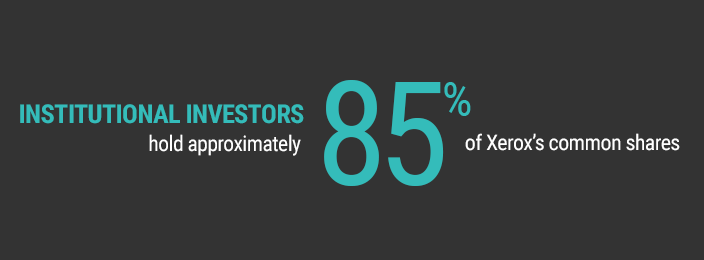

Business Continuity
We respond to major events that could disrupt business operations — such as natural disasters and pandemics — with comprehensive business continuity action plans. These plans are designed to minimize adverse effects to our people, customers, shareholders, suppliers and assets. They are well documented, communicated across all business units and tested annually to ensure rapid and effective response.
Xerox is a leader in telecommuting practices. When weather, power outages or other work disruptions affect specific geographic areas, we often are able to continue our high level of service by redirecting the affected activities to employees and/or systems in other locations.
As an example, severe winter weather forced the closure of our American Logistics Center for parts and supplies. In accordance with our business continuity action plan, we routed requests to distribution centers throughout the U.S. and set up regional locations to fulfill the requests. In doing so, we protected our people and assets while meeting our customers’ needs.
Safety always is our top concern. Often, local customers experience the same work interruptions; that is why communicating with clients and other stakeholders is paramount.
Our Business Continuity Program Office is responsible for the business continuity assurance process. All Xerox organizations assess their plans against a standard set of criteria and report the status during operational reviews.


Investor Relations
Xerox Investor Relations provides information about our financial performance, strategic intent and expectations for long-term profitable revenue and earnings trajectory to investors, financial analysts and potential shareholders worldwide.
Investor Relations pays special attention to the clarity and accessibility of this information, which is issued on a timely basis through press releases, webcasts, quarterly earnings presentations, annual reports, and Securities and Exchange Commission (SEC) filings.
Institutional investors hold approximately 85 percent of Xerox’s common shares; of this group, the top 20 own close to 50 percent of the shares.
In 2016, we held the following investor-related events:
- Xerox executives participated in six brokerage conferences.
- Investors and analysts met with Xerox leaders at the drupa trade show in Germany.
- We hosted small group meetings with current and potential investors in major markets, including Boston, Las Vegas, New York, Philadelphia and San Francisco.
- Xerox executives spoke with more than 300 investors/analysts during meetings and phone calls.
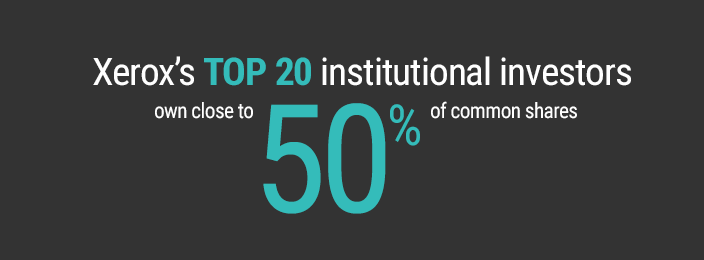

Public Policy Engagement
Xerox has a longstanding tradition of civic engagement. Our involvement in the political process and global public policy debate is a natural extension of our core values. We work with governments, others in our industry and the broader business community to advocate for public policies that support our business goals.
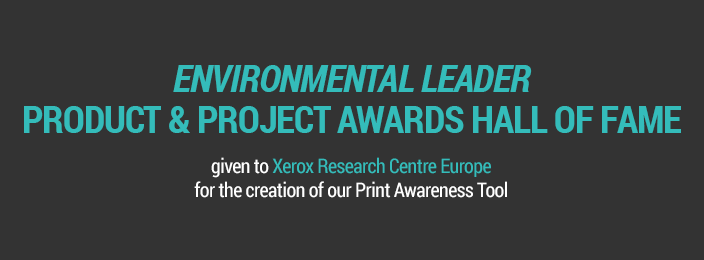
On issues for which our experience and knowledge add an important perspective to public debate, we seek to educate policymakers, both directly and indirectly, through various coalitions and trade associations. Through the Office of Global Government Affairs, we have interactions with governments and governmental organizations throughout the U.S. (at federal, state and local levels) and around the world. We engage on issues that range from legal, trade, tax policy and financial activities to regulatory compliance, intellectual property and government procurement.
International Trade
We support open markets and free trade. International trade is a powerful engine of global economic development that fosters job growth, improved living conditions and opportunities around the world. We support government-to-government negotiations aimed at liberalizing trading rules and opening markets, both on a bilateral and multinational basis. More open markets are critical for our technology and service solutions where we face barriers worldwide. We believe that all participants must be responsible citizens of the countries where they do business.
Corporate Taxation
As a global enterprise, we comply with the tax laws and regulations in all 160-plus countries where we operate. For more detail on the taxes we pay, please see our 2016 Annual Report.
At the same time, we work in support of U.S. corporate tax reform. The U.S. has the highest tax rates among large, industrialized nations. Corporate tax reform is needed if U.S. companies are to be fully competitive in overseas markets where 95 percent of the world’s population lives.
Education
Xerox has had a longstanding tradition of supporting efforts aimed at ensuring American students graduating from high school and college have the skills to compete. We are particularly passionate about programs that further American students’ access to science, technology, engineering, and math (STEM) curricula. These efforts help Xerox recruit and retain a skilled workforce and allow us to compete globally. We have worked with Congress and several Administrations to reform higher education programs, vocational education funding and K─12 standards.
Intellectual Property
As a participant in the Coalition Against Counterfeiting and Piracy, we play an active role in combating theft of intellectual property by counterfeiters who manufacture knockoff products. We also are strongly supportive of changes in the law that would reduce the impact of frivolous intellectual property litigation that imposes unnecessary costs on innovative companies.
Environment
Our Environment, Health, Safety and Sustainability governance policy, adopted in 1991, forms the foundation of our environmental leadership program.
State Legislation
We promote policy positions that make Information Technology (IT) more effective in supporting state and local government missions, improve government technology acquisition processes, maximize the positive financial impact of IT investments and create better outcomes for Americans served by state and local government agencies and programs. Our Office of Global Government Affairs has an established network of state and local government consultants whose responsibilities include monitoring legislation and policies that would impact our various government lines of business. Examples of our government business interests include business process outsourcing, regulation of credit card fees, eligibility and health information exchanges, emergency management services, work zone speed enforcement and electronic toll collections.
Retirement Policy
We believe policymakers should foster a legal and economic framework that encourages employers to maintain and increase the number of workers who have access to employer-provided retirement security. We take our commitment to our employees, both current and retired, very seriously and work with the U.S. Congress and the Administration to formulate policies that allow us to meet this pledge.
Healthcare
As an active player in healthcare, we promote policies that allow for sustainable, high-quality systems that are more accessible, less costly and more patient-centered. We support every citizen having access to quality, affordable health coverage. However, too many obstacles — regulatory mandates, inaccessible data, inefficient processes, incomprehensible billing and ever-rising costs — threaten to undermine our ability to provide healthcare effectively. We seek to use our healthcare expertise, our heritage of innovation and our influence to enhance the entire healthcare ecosystem. We work with patients, providers, payers, employers and governments at all levels to improve people’s lives through better, more accessible and more affordable healthcare.
Professional Organizations and Associations
Trade associations around the world play an important role in assisting our company with business development opportunities and citizenship activities, as well as in helping us meet certain public policy objectives. We are a member of a wide array of trade associations. Any trade association dues, or portions thereof, that are not deductible for tax purposes are reported in our lobbying disclosure reports. Our senior managers play a leadership role in various organizations, such as the Business Roundtable and the U.S. Chamber of Commerce. These organizations develop and promote public policies that are considered important to our public policy interests and operations.
While we prefer to make political expenditures directly rather than through professional organizations and associations, Xerox, like all major corporations, is a member of various 501(c) organizations that may engage in political activities. While we may not necessarily agree with every position taken by each organization to which we contribute, we determine that the intended use is consistent with our mission and core values before making a donation to any such group. We inquire and make a reasonable effort to obtain from those associations the portion of the dues or payments that are used for lobbying expenditures or political contributions. To the extent it is reported to us, we disclose the non-deductible portion of our contributions annually.
The following lists U.S.-based trade associations in which 2016 dues and expenditures paid by Xerox total $25,000 or more. The portion of our contributions used for lobbying expenditures or political contributions is also indicated:
| Trade Association | 2016 Payments | Amount ($) of Total Payment Used for Non-Deductible Expenses Used by the Association |
|---|---|---|
| Business Roundtable | $245,000 | $115,150 |
| The ERISA Industry Committee | $25,000 | $8,750 |
| IT Alliance for Public Sector | $50,000 | $8,750 |
| National Association of Manufacturers | $40,000 | $8,800 |
| Technology CEO Council | $150,000 | $150,000 |
| U.S. Chamber of Commerce | $140,000 | $42,000 |
| Tax Reform Coalition | $50,000 | $50,000 |
| American Benefits Council | $28,000 | $9,240 |
| The Rochester Business Alliance, Inc. | $78,868 | $7,887 |
- American Benefits Council: The American Benefits Council advocates for employers, connecting public policy and private-sector solutions to share employee benefits for the evolving global workforce.
-
Business Roundtable: The Business Roundtable has been actively engaged in shaping the debate on corporate tax reform and is supportive of Xerox’s goals for reform that will enhance the ability of U.S. companies to compete internationally. We participate in the policy formation and advocacy functions for the Business Roundtable’s tax reform efforts. The Roundtable has also focused heavily on developments with the most burdensome of the EPA’s proposed regulations covering areas such as ozone, carbon emissions and boiler controls, proposing less costly methods of achieving the EPA’s overall environmental goals.
-
The ERISA Industry Committee (ERIC): A trade association, ERIC represents the employee benefits and compensation interests of America’s major employers.
-
IT Alliance for Public Sector (ITAPS): ITAPS advocates for improved procurement policies and practices, while identifying business development opportunities and sharing market intelligence with our industry participants on the federal, state, and local levels of government.
-
National Association of Manufacturers (NAM): NAM is the powerful voice of the manufacturing community and the leading advocate for a policy agenda that helps manufacturers compete in the global economy and create jobs across the U.S. NAM is on the front lines of a wide range of policy battles — including immigration reform and labor relations, energy and the environment, and trade policy and taxes — working on behalf of manufacturers in America to advance policies that help manufacturers do what they do best: create economic strength and jobs.
- Tax Reform Coalition: Coalition of large corporations advocating for comprehensive corporate and international tax reform.
-
Technology CEO Council (TCC): The TCC is the information technology industry’s leading public policy advocacy organization comprised exclusively of chief executive officers from America’s top IT companies.
- U.S. Chamber of Commerce: The U.S. Chamber of Commerce is the world’s largest business organization, representing the interests of more than 3 million businesses of all sizes, sectors and regions. The Chamber’s membership ranges from independently owned small businesses and local chambers to leading industry associations and large corporations. The Chamber advocates for pro-business policies that create jobs and grow the economy. Key issues range from smart tax policy and regulatory relief to legal reform and trade promotion.
Code of Conduct Training
The Xerox Code of Business Conduct contains explicit information on our policies governing contact with elected and appointed government officials and agencies, as well as lobbying and political contributions. All Xerox employees are required to participate in annual training on the Code of Business Conduct and must certify adherence to the Code upon the conclusion of the course.
Employee Personal Political Contributions
While we encourage our people to participate in community and political activities, we do not endorse any organization or activity in which employees choose to participate; and we do not discriminate in favor of or against employees based on the organizations they choose to support. Employees are not reimbursed directly or through increases in compensation for their personal political contributions and expenses.
Xerox Contributions to 527s in 2016
The following 527 organizations received support from Xerox in 2015. The name derives from Section 527 of the Internal Revenue Code, under which these organizations are tax-exempt. These organizations have a purely political focus, rather than one supporting an issue or cause. Xerox contributions to the following 527 organizations are made with corporate — rather than Xerox Corporation Political Action Committee (XPAC) — funds:
- Democratic Governors Association
- Republican Governors Association
Xerox Corporate Political Contributions
We have a long-standing policy that nothing of value may be given, paid, promised or offered — directly or indirectly — from corporate treasury funds for any of the following: (1) political party, committee and/or candidate for any federal, state or local government office anywhere around the world; (2) independent expenditure or ballot measure committees; (3) electioneering communications; or (4) candidates for judicial office.
We have an established policy that does not permit any in-kind political contributions. The only authorized method to make political contributions on behalf of Xerox is through the Xerox Corporation Political Action Committee (XPAC).
Xerox Corporation Political Action Committee (XPAC)
XPAC is supported entirely by voluntary contributions from eligible Xerox employees, and all contributions go directly to candidate campaigns for political office. XPAC is nonpartisan and actively supports candidates and helps elect policymakers whose positions are consistent with our business values and strategies. XPAC contributions promote the interests of the company and are made without regard for the private political preferences of company officers and executives. We strictly prohibit the use of XPAC contributions to motivate or reward any official act.
Every proposed political contribution undergoes an internal review process to evaluate whether it is legally permissible and in the best interests of our company and our shareholders. In many cases, we may not agree with every position taken by a candidate whom we support.
The XPAC guidelines used as a basis for supporting candidates and elected officials include:
- The integrity and character of the candidate
- The candidate’s position on significant policy issues of importance to our company
- The candidate’s overall support for our company and industry
- The candidate’s overall support for the free enterprise system and U.S. competitiveness
- A demonstrated willingness on the part of the candidate to work with our company and industry to achieve responsible public policy solutions
- The candidate’s representation of a state or district in which our company has significant employees or facilities
- Whether the candidate holds a leadership position within their political party
- The candidate’s electability
- Permissibility under applicable law
In addition, XPAC focuses on contributions that go directly to candidates for office. Special exceptions are required for:
- Out-of-election-cycle contributions
- Contributions to leadership PACs
- Contributions to trade association PACs
- Contributions to ballot measure committees
- Contributions to political parties
XPAC does not permit contributions for:
- Independent expenditure committees
- Electioneering communications
- Candidates for judicial office
- Presidential candidates at any stage in the campaign process
XPAC discloses all contributions made and received on reports filed with the Federal Election Commission and the various state and local campaign finance commissions, as required by law. In accordance with XPAC’s Articles of Organization, an audit of the accounting books of the XPAC are performed at least once during every two-year election cycle to assure compliance with the Federal Election Campaign Act of 1971, as amended, and its regulations and all other applicable laws.
We use outside legal experts to provide periodic oversight of the company’s political activities.
2016 XPAC Cycle Contributions
| Federal Candidates (Senate) | |||
|---|---|---|---|
| Candidate Name | State | Amount | |
| Sen. Johnny Isakson (R) | GA | $5,000 | |
| Sen. Todd Young (R) | IN | $1,000 | |
| Sen. John Kennedy (R) | LA | $5,000 | |
| Sen. Maggie Hassan (D) | NH | $5,000 | |
| Sen. Martin Heinrich (D) | NM | $1,000 | |
| Sen. Orrin Hatch (R) | UT | $1,000 | |
| Total U.S. Senate | $18,000 | ||
Federal Candidates (House) |
|||
| Candidate Name | State | District | Amount |
| Rep. Ami Bera (D) | CA | 7 | $3,500 |
| Rep. Jim Himes (D) | CT | 4 | $5,000 |
| Rep. Brett Guthrie (R) | KY | 2 | $1,000 |
| Rep. Hal Rogers (R) | KY | 4 | $4,000 |
| Paul Kline (R) | MN | 2 | $1,000 |
| Rep. Tom Reed (R) | NY | 23 | $5,000 |
| Rep. Louise Slaughter (D) | NY | 25 | $5,000 |
| John Boehner (R) | OH | 8 | $2,500 |
| Rep. James Renacci (R) | OH | 16 | $2,500 |
| Rep. Patrick Tiberi (R) | OH | 12 | $5,000 |
| Rep. Steven Russell (R) | OK | 5 | $1,000 |
| Rep. Mia Love (R) | UT | 4 | $1,000 |
| Rep. Suzan Kay DelBene (D) | WA | 1 | $1,000 |
| Total U.S. House | $37,500 | ||
| Total Federal Candidates | $55,500 | ||
Federal Party Committees |
|||
| Committee Name | State | Amount | |
| Connecticut Democratic State Central Committee - Federal Account | CT | $6,000 | |
| Mississippi Republican Party | MS | $5,000 | |
| Montana Democratic Party - Federal Account | MT | $2,500 | |
| Total Federal Party Committees | $13,500 | ||
State Candidates |
|||
| Candidate Name | State | Office Sought | Amount |
| Assm. Rob Bonta (D) | CA | State House, District 18 | $1,500 |
| Sen. Jerry Hill (D) | CA | State Senate, District 13 | $1,500 |
| Gov. John Carney, Jr. (D) | DE | Governor | $1,000 |
| Rep. Larry Mitchell, Jr. (D) | DE | State Senate, District 13 | $600 |
| Patricia Blevins (D) | DE | State Senate, District 7 | $600 |
| Gov. Eric Holcomb (R) | IN | Governor | $5,000 |
| V.P. Michael Pence (R) | IN | Governor | $2,000 |
| Andy Beshear (D) | KY | Attorney General | $2,000 |
| Gov. Matthew Bevin (R) | KY | Governor | $5,000 |
| Jack Conway (D) | KY | Governor | $1,000 |
| Allison Ball (R) | KY | Treasurer | $500 |
| Gov. Larry Hogan, Jr. (R) | MD | Governor | $2,000 |
| Gov. Phil Bryant (R) | MS | Governor | $2,500 |
| Hon. Tate Reeves (R) | MS | Lieutenant Governor | $1,000 |
| Rep. Philip Gunn (R) | MS | State House, District 56 | $1,000 |
| Gov. Steve Bullock (D) | MT | Governor | $650 |
| Gov. Doug Burgum (R) | ND | Governor | $2,500 |
| Hon. Chris Pappas (D) | NH | Executive Council | $1,000 |
| Hon. Joseph Kenney (R) | NH | Executive Council | $1,000 |
| Colin Van Ostern (D) | NH | Governor | $2,500 |
| Gov. Chris Sununu (R) | NH | Governor | $2,500 |
| Assm. Joseph Morelle (D) | NY | State House, District 132 | $1,000 |
| Gov. Kate Brown (D) | OR | Governor | $1,000 |
| Hon. Joseph Torsella (D) | PA | Treasurer | $500 |
| Rep. Tony Dale (R) | TX | State House, District 136 | $500 |
| Rep. Gary Elkins (R) | TX | State House, District 135 | $500 |
| Sen. Richard Saslaw (D) | VA | State Senate, District 35 | $5,000 |
| Gov. Jay Inslee (D) | WA | Governor | $1,000 |
| Hon. John Perdue (D) | WV | Treasurer | $1,000 |
| Total State Candidates | $47,850 | ||
State Committees |
|||
| Committee Name | State | Committee Type | Amount |
| House Republican Campaign Committee | IN | Caucus Committee | $2,000 |
| Indiana House Democratic Caucus |
IN | Caucus Committee | $1,000 |
| Indiana Senate Democrat Committee |
IN | Caucus Committee | $1,000 |
| Senate Majority Campaign Committee |
IN | Caucus Committee | $2,000 |
| NYS Democratic Assembly Campaign Committee | NY | Party Committee | $1,000 |
| Total State Committees | $7,000 | ||
Local Candidates |
|||
| Candidate Name | State | Office Sought | Amount |
| Robert White (D) | DC | City Council | $500 |
| Brandon Todd (D) | DC | City Council | $500 |
| Jack Evans (D) | DC | City Council | $500 |
| Kathryn Barger (D) | CA | LA County Supervisor | $250 |
| Janice Hahn (D) | CA | LA County Supervisor | $250 |
| Darrell S. Steinberg (D) | CA | Mayor, Sacramento | $1,000 |
| James Kenney (D) | PA | Mayor, Philadelphia | $2,500 |
| Kirk Caldwell (D) | HI | Mayor, Honolulu | $1,000 |
| Chuck Brewer (R) | IN | Mayor, Indianapolis | $500 |
| Total Local Candidates | $7,000 | ||
GRAND TOTAL |
$130,850 |
||
XPAC Oversight
The Corporate Governance Committee of the Xerox Board of Directors is responsible for overseeing the company’s political and charitable contributions and receives annual reports on XPAC activities.
The Vice President, Global Government Affairs is responsible for the management of Xerox’s participation in the political process. This position reports directly to our Executive Vice President, General Counsel and Corporate Secretary, who reports to the company Chairman and Chief Executive Officer.
XPAC is led by a Board of Trustees, which includes a cross-section of managers from Xerox who represent their unique business unit and geographic areas. A Contributions Committee appointed by the XPAC Chairman and consisting of five members is responsible for selecting by majority vote the candidates to receive a contribution from XPAC. Our General Counsel, the Vice President of Global Government Affairs and the Manager, Global Government Affairs oversee all spending.
| The Xerox Board of Trustees hold the following positions within Xerox: (*Denotes trustee serves on the XPAC Contributions Committee) |
|---|
| Executive Vice President and Chief Commercial Officer* |
| Executive Vice President and General Counsel and Corporate Secretary* |
| Manager, Global Government Affairs |
| Senior Vice President, U.S. Large Enterprise Operations |
| SVP, Acquisitions, Corporate Service & Marketing at Global Imaging Systems |
| Vice President of Communications |
| Vice President, Vice President, Worldwide Taxes |
| Vice President, Global Government Affairs and Corporate Philanthropy* |
| Vice President, Public Sector |
Progress Chart

Progress Table
In 2016, we managed 94 percent of non-hazardous solid waste beneficially which remained unchanged from 2015. We’ve established a new aspirational goal to drive our reuse/recycle rate to 100% by 2020 at our technology facilities compared to a baseline year of 2009.
To learn more about this information see our chart in the Responsible Operations section of this report for further details.
Non-hazardous solid waste recycling
As part of our commitment to conserve resources, we monitor water consumption across our manufacturing, distribution and R&D facilities worldwide. Having met our corporate goal to reduce water consumption by 21 percent by 2014 (against a 2009 baseline), we established a new goal to reduce water consumption by 35% by 2020 (against a 2010 baseline). Water consumption in 2016 was down 43% against the 2020 goal.
See more detailed information on water consumption and our new 2020 goal.
Since 2012, Scope 1 (direct) and 2 (indirect) greenhouse gas emissions are down 28 percent*. The reductions are the result of improved energy efficiency, new technologies and improved energy management practices.
* Note: the 2012 baseline has been restated. In accordance with the Greenhouse Gas Protocol, inventory adjustments are completed each year as a result of the opening and closing of facilities and the use of more appropriate emission factors to make data and performance trends between years more comparable.
See more detailed information on greenhouse gas emissions.
In 2016, 100 percent of our new eligible products met ENERGY STAR requirements. We’ve continuously reduced power consumption of our laser-based printing products by adjusting fuser design, changing properties of toner, implementing more efficient electronic controls and improving the entire xerographic system.
See more detailed information on ENERGY STAR® ratings for Xerox Products.
Our approach to managing products at end-of-life translates into significant environmental and financial benefits. Globally, our combined returns programs (equipment remanufacture in conjunction with parts and consumables reuse and recycling) prevented over 41,500 metric tons of waste from entering landfills in 2016 alone.
Learn more about the Xerox Green World Alliance.
At the conclusion of the Energy Challenge program, we successfully reduced energy consumption by 31 percent and cut emissions by 42 percent — that’s 210,000 tons of carbon dioxide equivalents (CO2e). Our new corporate-wide goal is to reduce energy consumption by 20 percent by 2020 (from a 2012 baseline). In 2016, we reduced energy consumption by 20 percent and cut emissions by 28 percent — that’s 92000 tons of carbon dioxide equivalents (CO2e) from a 2012 baseline.*
* Excludes data centers numbers. Energy Challenge 2012 included fleet and facilities for the Technology Business (and Services). Energy Goal 2020 encompasses all parts of our business.
| ENERGY / GHGs | Goal | Reduction from 2002 Baseline | Reduction from 2012 Baseline | |||
|---|---|---|---|---|---|---|
| 2012 | 2013 | 2014 | 2015 | 2016 | ||
| % Reduction Energy Use from Baseline (Scope 1 and 2) | 20% reduction by 2020 with a new baseline established in 2012 | 33% | 1% | 7% | 12% | 20% |
Business travel plays a role in contributing to greenhouse gas emissions. In recent years, we’ve promoted videoconferencing and other technology as environmentally friendly alternatives to air travel. Thanks to these efforts, we’ve reduced emissions due to air travel by 25 percent per employee from 2012. This is equivalent to 0.04 (1000 MT CO2 eq) per employee.
In 2016, more than 2,500 non-profit organizations, colleges and university received direct financial support from The Xerox Foundation through grants, matching gifts or community involvement activities. We focus our investments in the following areas:
- Education and workforce preparedness
- Science and technology
- Employee and community affairs
- National and cultural affairs
Learn more about The Xerox Foundation.
The Xerox Community Involvement Program links our corporate giving with the voluntary spirit of our employees as they become involved in the communities where they live and work. Since the program began in 1974, thousands of Xerox people have been involved in regional, community-focused projects each year.
Learn more about The Xerox Foundation.
See more detailed information on community involvement programs.
700 Projects
800 Projects
800 Projects
800 Projects
900 Projects
In July 2017, we launched our Culture Survey to serve as a baseline to assess how employees see the behaviors that are present in our company. 70 percent of employees from around the world shared their thoughts. 19,638 employees completed the survey. We received results from 50 countries in 19 languages.
For more information, see the Employee Engagement section.
We gain a competitive advantage as we continue to draw on the experience and creativity of a well-balanced, diverse workforce. That means we’re better able to understand and meet changing demands for our products and services. Simply stated, a balanced workforce makes good business sense.
In the U.S., 60 percent of employees are women, and women represent 37 percent of executive and senior-level managers. Diversity reporting is not tracked in most other countries.
The chart below displays the percentage of executive and senior-level managers who were women over the past five years in the U.S.
Learn more about diversity at Xerox.
Employees with different ways of thinking — and different ways of perceiving our world — are employees who create innovative solutions. In a business like ours, whose lifeblood is fresh ideas, this variety of perspectives is a priceless resource and a key to achieving critical business results.
Minorities represent 31 percent of employees and 19 percent of executive and senior-level managers in the U.S. Diversity reporting is not tracked in most other countries.
The chart below displays the percentage of minority employees in our U.S. workforce over the past five years.
Learn more about diversity at Xerox.
In 2016, our Technology operation’s total recordable injury rate (TRI) decreased 13 percent. These performance improvements are reflective of increased safety awareness and communications to our employees, as well as focused safety management processes within our management teams.
See more detailed information on our recordable injury rates.
In 2016, our global Technology operation’s day away from work case (DAFW) rate decreased by 9% from 2015 levels. These performance improvements are reflective of increased safety awareness as well as communications to our employees, and focused safety management processes within our management teams.
See more detailed information on work injury rates at Xerox.
Xerox is an $11 billion global business with the most comprehensive portfolio in the industry.
Learn more about Xerox products.
Together with Fuji Xerox, our joint venture, we invested approximately $1 billion in research, development and engineering in 2016. Xerox and its subsidiaries were awarded 766 U.S. utility patents and with our research partner Fuji Xerox we were awarded 1,352 U.S. utility patents in 2016.
Learn more about innovation at Xerox.
In 2011, we began investing in a new customer satisfaction process to ensure a stronger focus on understanding and fulfilling customer needs and expectations. The new process solicits feedback from our technology customers around the globe, providing detailed insights that help us identify systemic issues and make the necessary changes that ensure strong customer satisfaction. Improved closed-loop follow-up processes also enable faster responses to individual problems.
2012
2013
2014
2015
2016
Our commitment to our customers has gained worldwide recognition.
Xerox has been named a leader in the Quocirca Managed Print Services Market Landscape Report for seven consecutive years.
Many independent industry analysts position Xerox services and products as leaders in multiple categories. Selected awards are displayed in the listing below.
2012- Forrester Research, Inc.: Cited as a leader in The Forrester Wave™: Managed Print Services, Q2 2012
- IDC MarketScape Reports: An IDC MarketScape leader for U.S. Shared, Networked MFPs for the Distributed Office; EMEA Managed Print Services
- Quocirca: Market leader for MPS Landscape
- Everest Group: PEAK Matrix Assessment leader for Benefits Administration Outsourcing; Contact Center Outsourcing
- HfS Research BluePrint: Winner’s Circle for Healthcare Payer BPO Services
- IDC MarketScape Reports: An IDC MarketScape leader for Worldwide Managed Print and Document Services; U.S. Smart Multifunction Peripherals
- NelsonHall NEAT Reports: Leader in Benefits Administration Services
- Quocirca: Market leader for MPS Landscape
- Everest Group: PEAK Matrix Assessment Leader for Contact Center Outsourcing; Contact Center Outsourcing Market for the Healthcare Industry
- IDC MarketScape Reports: An IDC MarketScape leader in Worldwide Managed Print and Document Services; U.S. Smart Multifunction Peripherals
- NelsonHall NEAT Reports: Leader in Benefits Administration; Learning BPO
- Quocirca: Worldwide Market Leader in Managed Print Services
- Everest Group: PEAK Matrix Assessment Leader for Contact Center Outsourcing; Healthcare Payer BPO
- IDC MarketScape Reports: An IDC MarketScape leader in U.S. Managed Workflow Services Hardcopy Vendor Assessment; Western Europe Managed Workflow Services Hardcopy Vendor Assessment; Worldwide Finance and Accounting BPO Services; U.S. Smart Multifunction Peripherals
- NelsonHall NEAT Reports: Leader in Health & Welfare Administration; Learning BPO; Workers’ Compensation BPS
- Quocirca: Worldwide Market Leader in Managed Print Services
- Everest Group: PEAK Matrix Assessment Leader for Contact Center Outsourcing; Healthcare Payer BPO
- IDC MarketScape Reports: An IDC MarketScape leader in U.S. Managed Workflow Services Hardcopy Vendor Assessment; Central and Eastern Europe, the Middle East, and Africa (CEMA)
- IDC MarketScape Reports: Leader in the Worldwide Document Workflow Services Hardcopy 2016 Vendor Assessment
- Quocirca: Number one in brand perception amongst traditional MPS vendors for workflow automation
- Quocirca: Worldwide Market Leader in Managed Print Services
Based on standards for independence developed by the New York Stock Exchange, 90 percent of the Xerox Board is composed of directors who qualify as independent directors.
Learn more about the Board’s independence and our governance policies: www.xerox.com/governance.
Corporate Social Responsibility Governance
The Corporate Governance Committee of the Xerox Board of Directors reviews significant corporate social responsibility matters. The Executive Management Committee, led by our CEO, retains overall discretion for Corporate Social Responsibility (CSR) as part of the business strategy.
The CSR Council, comprising senior executives who manage a specific CSR topic area, has centralized oversight of the corporation’s management approach, including policies, goals, strategies and actions to drive progress. The CSR Council is guided by a senior executive from the Executive Management Committee. Each CSR Council leader is supported by individuals with expertise and experience in a CSR topic area.
The primary mission of the CSR Council is to drive strategies having a customer-centric impact across Xerox globally to advance our legacy of leadership in corporate citizenship. Actions taken meet the expectations of our stakeholders, including customers, employees, investors, regulators and communities worldwide. Our governance model is characterized by forward thinking, an awareness of current and trending stakeholder requirements and knowledge of industry best practices. We advance our CSR agenda using the expertise, skills and passion of our employees and the historical knowledge acquired from years of striving for CSR excellence.
Assuming a lead role in sustainability requires a focused approach to drive the greatest value to our stakeholders and company. We utilize a materiality assessment to prioritize our activities.
Our sustainability leadership has been recognized by organizations such as Carbon Disclosure Project (CDP), Dow Jones and Ethisphere Institute.
Corporate policies and procedures pertaining to CSR include:
Our Enterprise Risk Management (ERM) process, with oversight by the Xerox Board of Directors, strengthens our capability to assess, monitor and manage all categories of business risk, including climate change. Vital strategic and operational risks identified are approved by the Corporate Management Committee (CMC) and reviewed annually by the Board.
A risk mitigation plan, in which company leaders are assigned to each identified risk, is developed and reviewed by the CMC and the Board. The Business Ethics and Compliance Office and various Internal Control committees also monitor risk management and exposure. The Board of Directors regularly reviews the ERM profile and monitors the effectiveness of management policies and decisions, including risk management activities.
The Office of Global Government Affairs is responsible for tracking external developments, including climate change policy, and for determining if they are likely to affect Xerox products and operations. Through trade associations and partnerships, EHS&S tracks applicable regulations and policy changes that may affect the company. We develop processes, new technologies and products to counter the risks associated with external changes.
Our major operating units and key corporate functions (e.g., Risk Management, Real Estate) also are responsible for evaluating, monitoring and managing within their respective businesses site-specific risks that potentially affect Xerox’s ability to achieve its overall business objectives. The Business Continuity Assurance Process ensures business units are prepared for environmental risks.
Standards and Programs
Standards are the means to implement our policies and guide employees and suppliers in complying with corporate policies. These worldwide principles, such as those for environment, health and safety, apply across Xerox and establish specific requirements for products, services and operations. We also have company-wide programs, such as Zero Injury, to engage employees worldwide.
Supply Chain Management
As a critical element of supply chain governance, we extend environment, health and safety requirements across our supply chain. Since 1998, we have asked our materials, electronics and component suppliers to meet specific criteria. Since 2006, we continue to be an active member in the Electronic Industry Citizenship Coalition’s (EICC) Code of Conduct to broaden our means for validating that suppliers are operating according to accepted industry standards. As an EICC member, we assess our own facilities, as well as suppliers, using established auditing protocol.
For more information, see the Supplier Relations section of this report.
Employee Engagement and Training
Employees and third-party contractors learn how our operations affect the environment and employee safety through training and internal communication. Beginning at our new hire orientation, employees are made aware of company-wide environment, health and safety requirements. Global programs, such as Energy Challenge, Environmental Faces of Xerox, Sustainable You, Xerox Earth Awards and Zero Injury, engage employees throughout the company. Regional Earth and Safety Fairs and Green Teams also help to communicate challenges, best practices and accomplishments.
Yammer, our internal social media network, lets our employees across the globe connect with each other. Through groups such as Living Green, Simply Well and Working Green, employees exchange information about the environment, safety and health. The Xerox Yammer network boasts nearly 12,600 employees worldwide.
The formation of local Green Teams provides employees who are part of a common work group or share a workspace with an opportunity to participate in our efforts. Team members work together to educate, support and seek process or site changes that will enable environmental improvements, cost savings or productivity improvements.
As appropriate, employees receive training on topics such as hazardous waste management, spill prevention and response, recycling and ISO 14001. In addition to regulations that require instruction, employees are trained on established safe job procedures based upon the job-specific hazards they may encounter and procedures and protective equipment they are expected to use. A significant number of procurement professionals participated in training on Xerox corporate sustainability goals to re-emphasize our Socially Responsible Purchasing Policy.
Our environmental management policy is available on the Xerox internal website. We communicate environment, health and safety goals to all our operations and integrate those goals into processes for product development and services. Through our ISO 14001 environment management system, employees identify the environmental aspects associated with their responsibilities. Our Services facilities management personnel were introduced to our environmental sustainability and compliance programs and instructed on how to identify sustainability opportunities and perform regulatory applicability assessments. This training included both Xerox personnel and those from our third-party management company.
Stakeholder Outreach
We communicate with stakeholders about our corporate social responsibility policies and practices, such as our environment health and safety programs, goals and performance. Stakeholders include employees, customers, investors, universities, government agencies and environmental groups. We track inquiries and comments from customers and other stakeholders. Customers provide input through focus groups; we also tap into the larger community through participation in external organizations.
We regard our customers, employees and investors as strategic partners and stakeholders in all of our efforts. Since our earliest days, our engagements have been deeply rooted in education and the community. In progressing toward the goals of sustainability for own operations and those of our stakeholders, partnerships with regulatory agencies and academia play a crucial role ─ the government by legislating progressive policies and the academic world by driving fundamental innovation.
To advance global efforts to improve the environment, Xerox partners with the following private and public organizations.
Charters and Principles